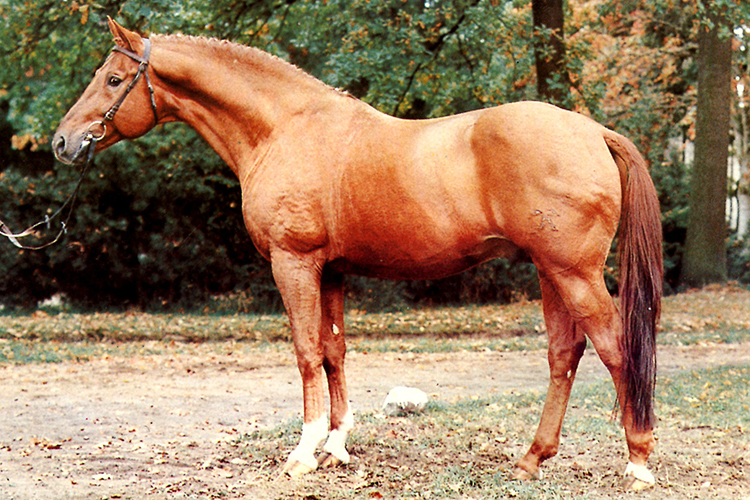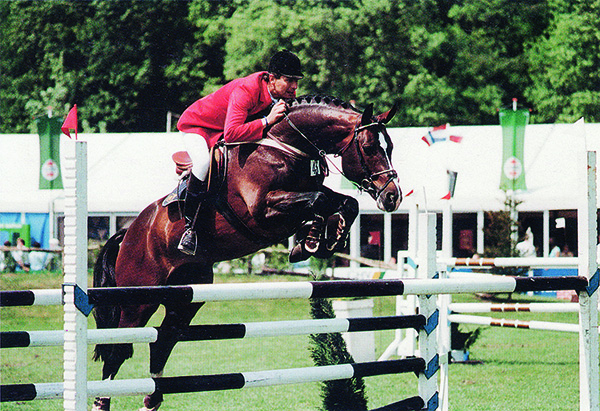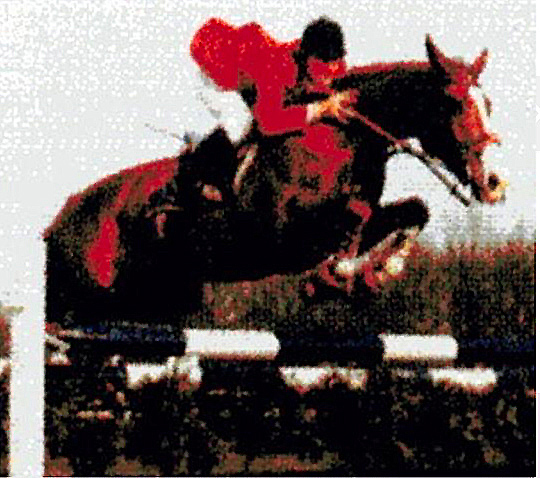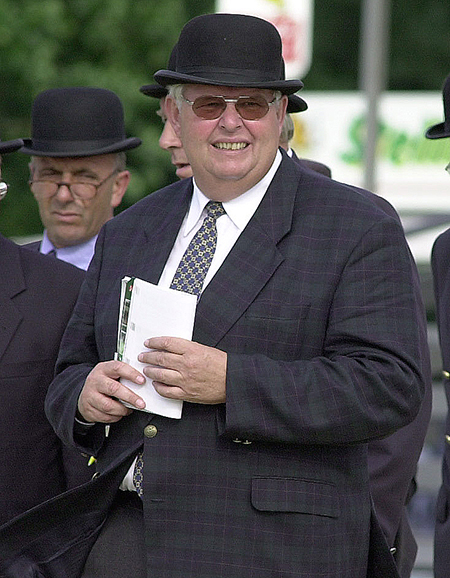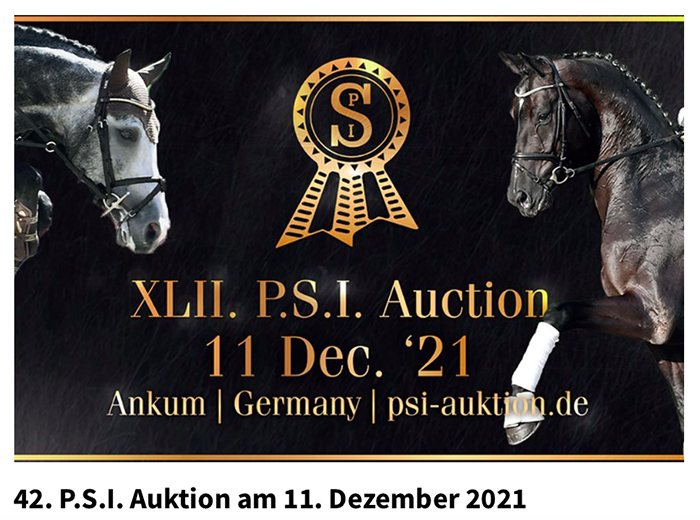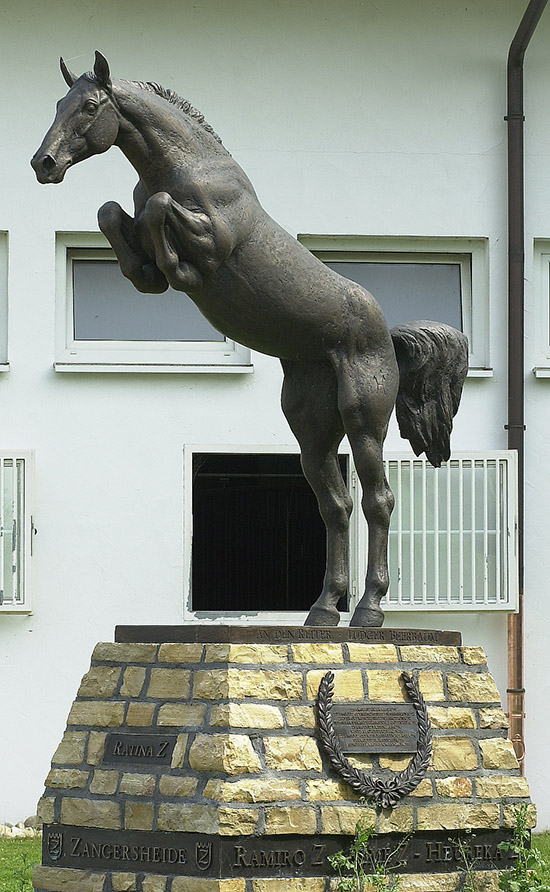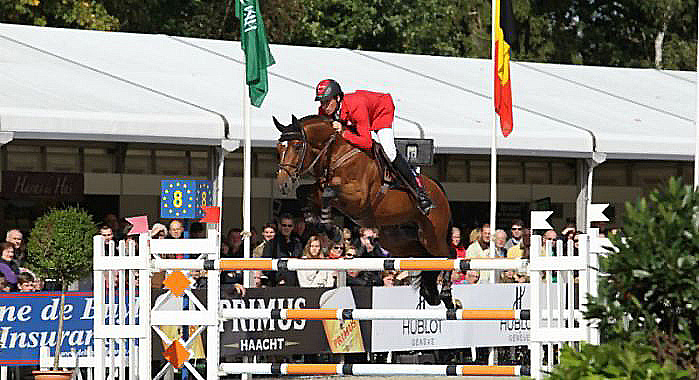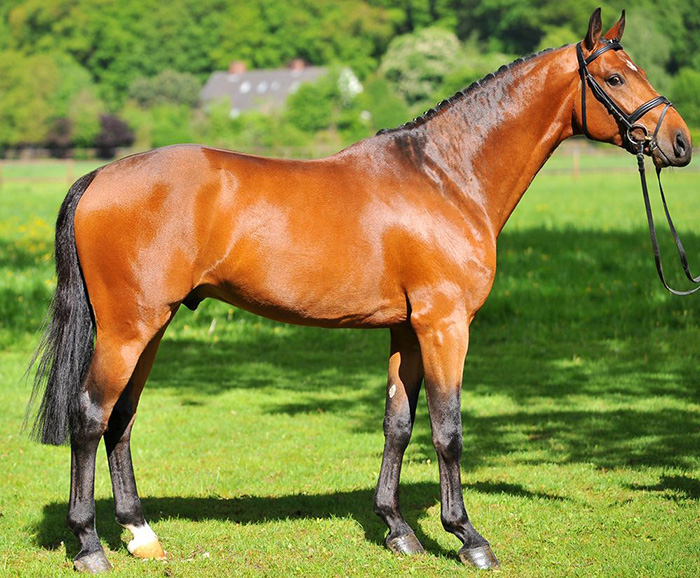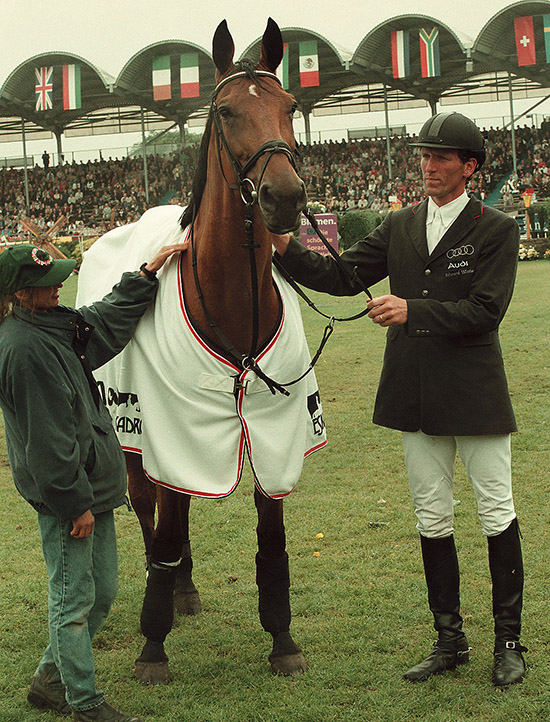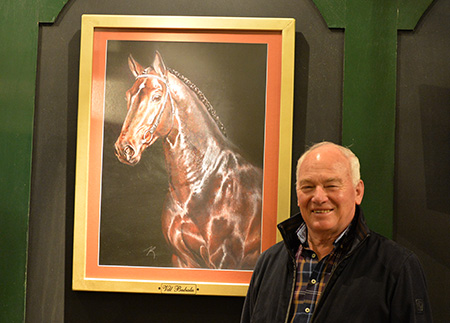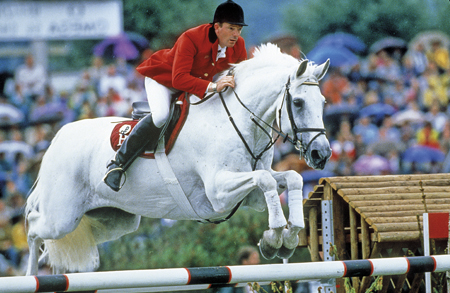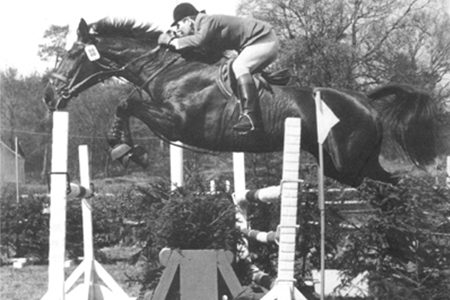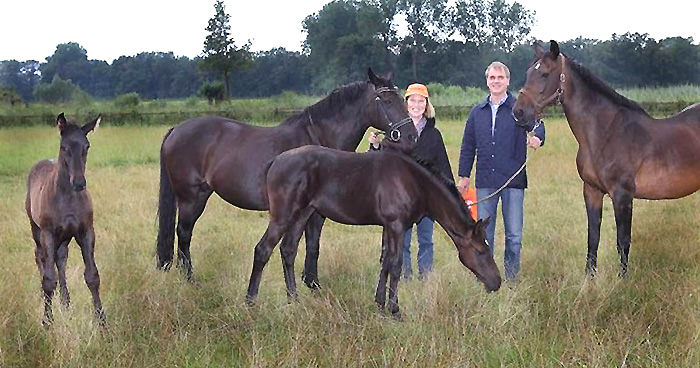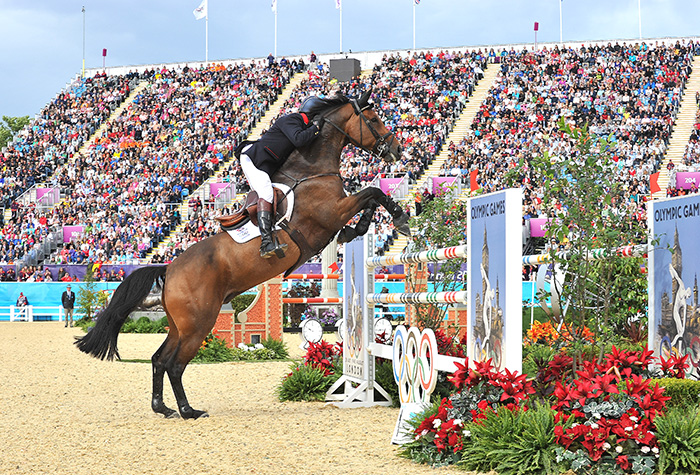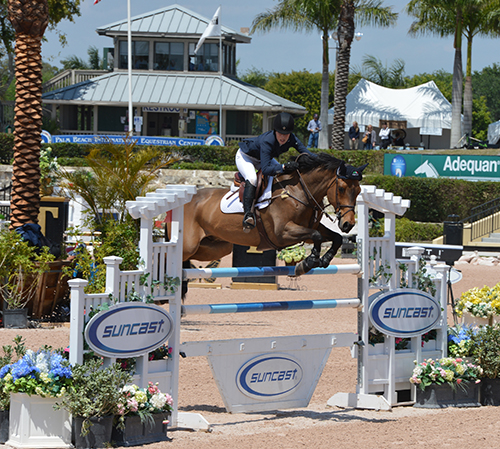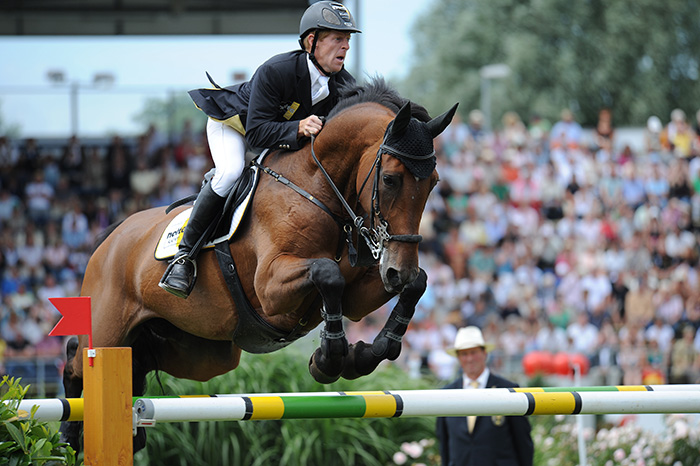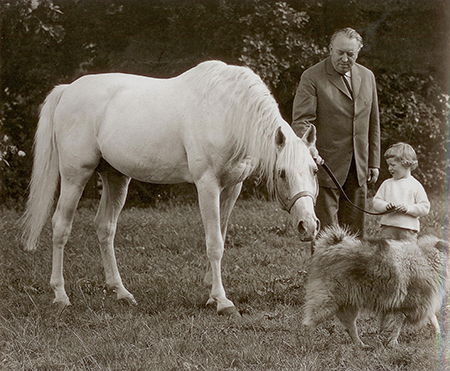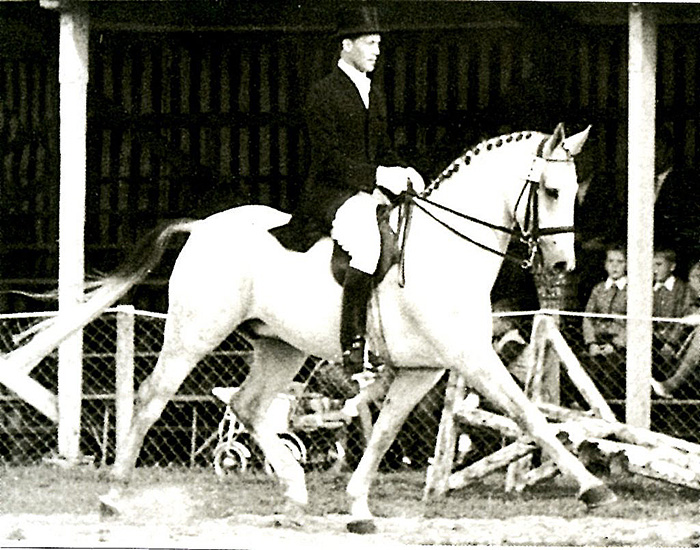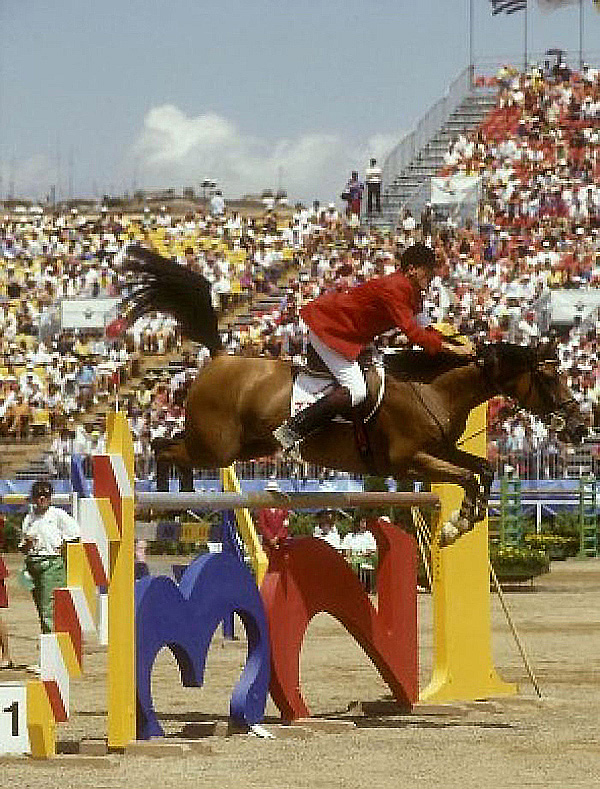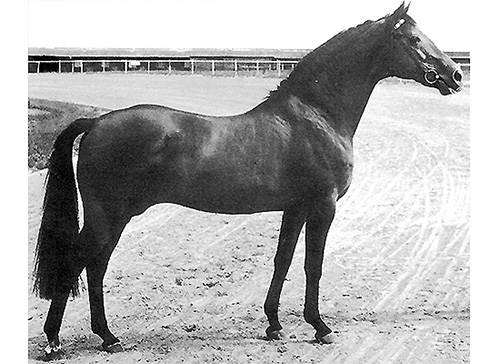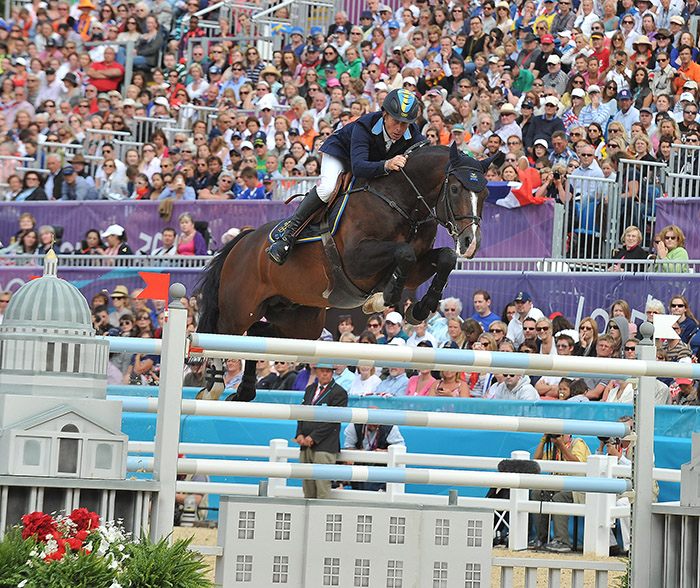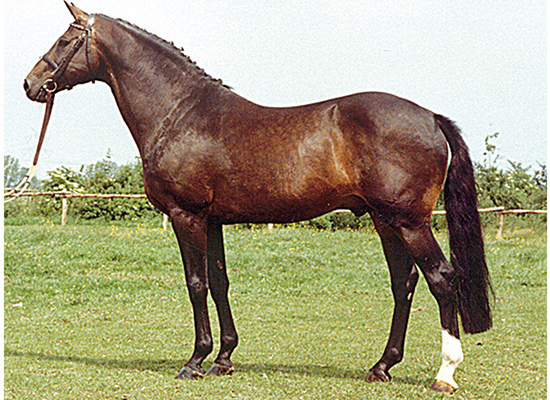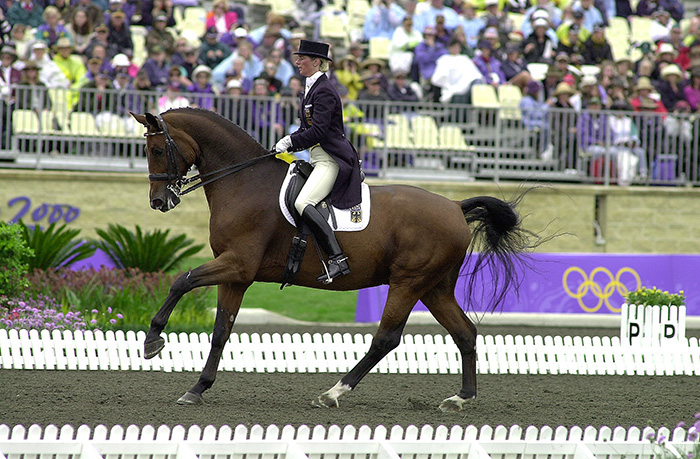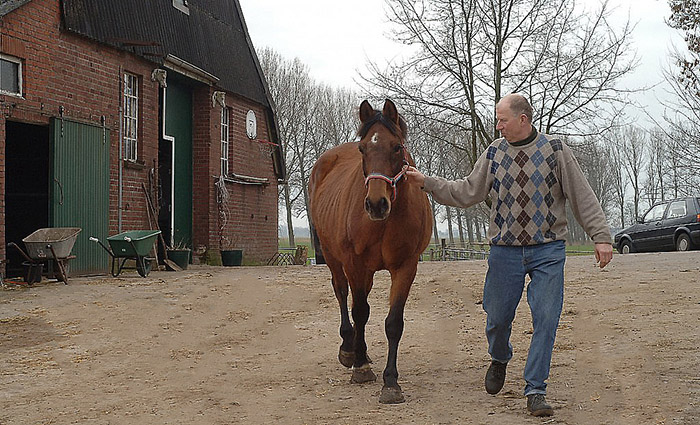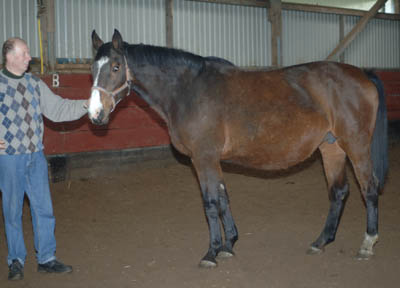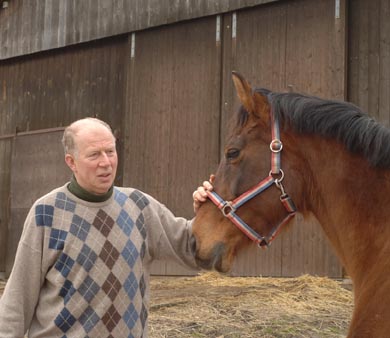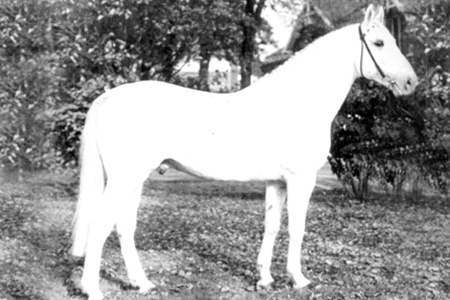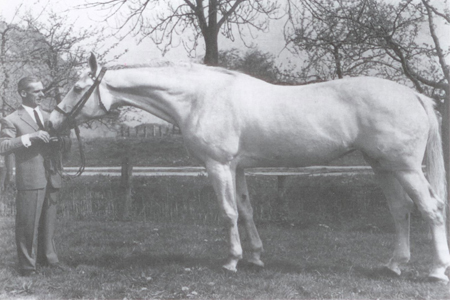by Christopher Hector
I set out to find the greatest showjumping broodmares of them all, and I went to four acknowledged experts to get their nominations: two Germans, Dr Ludwig Christmann and Dr Thomas Nissen, the Dutch expert, Egbert Schep and France’s Arnaud Evain. Little did I realise that really I was starting on the sequel to the book I produced with Roslyn Neave, The Making of the Modern Warmblood – a new book, called The Transformation of the Modern Warmblood…
Here is something like a first draft:
Ludwig Christmann
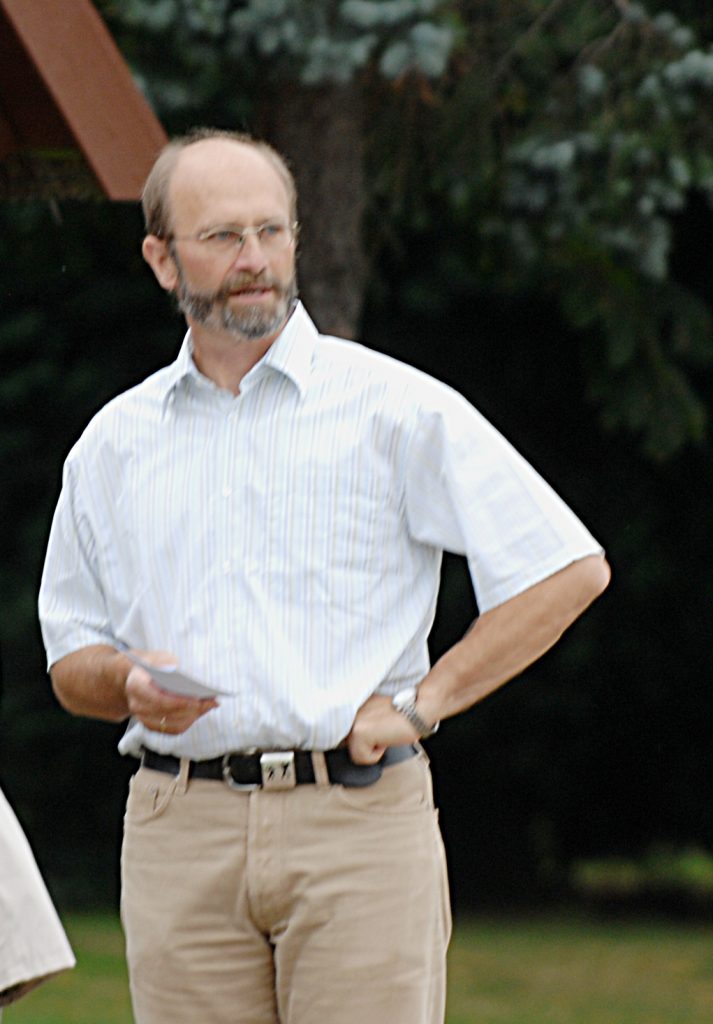
Dr Ludwig Christmann has been a friend and a valued colleague for many many years. He was our group leader on our first Hanoverian Study Tour three decades ago. In his rôle with the Hanoverian Verband as the director of the Department of International Affairs, Ludwig has been instrumental in the development of a world-wide network of Hanoverian breeders, but he is also the mover-and-shaker behind the Hanoverian Jumping program, an important initiative to stop the trend of breeders sending their good jumping mares to dressage sires looking for a better market. He is also a prolific writer, and puts together the Hanoverian Stallion Book every year along with numerous articles on the Hanoverian breed and breeding. Here’s his selection of influential mares…
Alsterröschen
Ludwig’s first choice underlines the need to keep alive those old jumping lines – the mare is Alsterröschen by Agram, indeed line bred to Agram. Alsterröschen is represented in the dam line of Stakkato Gold, one of the leading stallions in Germany today, and Hanoverian Stallion of the Year 2000, his progeny have won €1,253,095.
Agram is one of those names out of ancient history, but perhaps the most interesting aspect of this survey is that while the sport of showjumping has undergone massive changes in terms of the style and demands of the fences, and the showjumper of today looks very different from the old-fashioned Warmblood when you compare the successful ones – you still find those old lines flowing strongly.
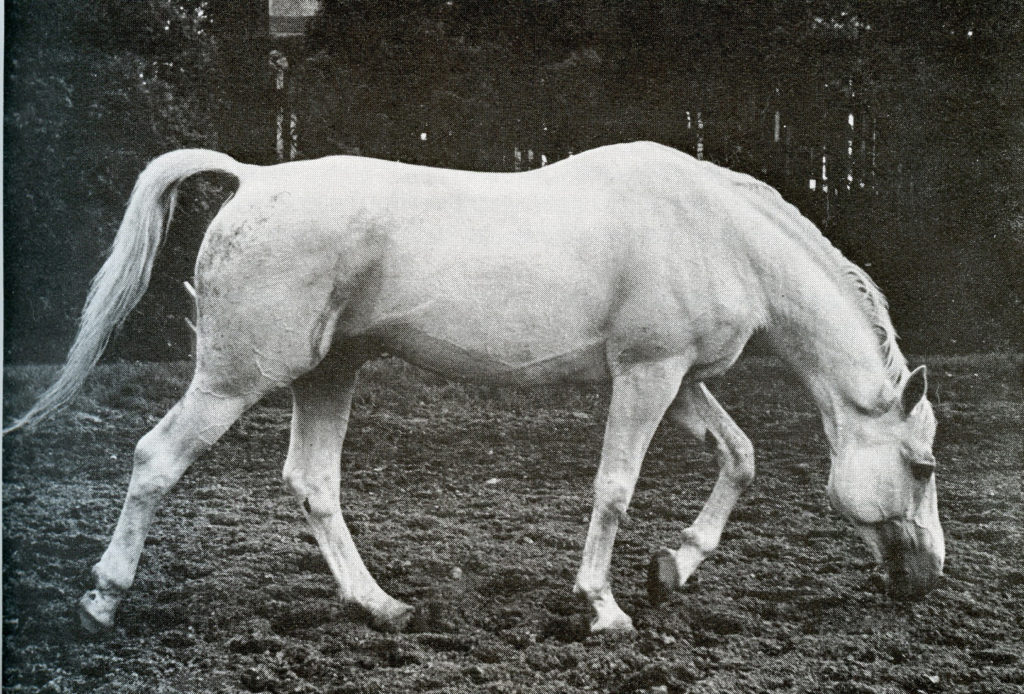
This is Agram, he stood from 1942 until 1962… Agram was by Alkoven I, a descendant of the foundation Thoroughbred, Adeptus, and out of a mare by Amateur who was a descendant of the Shagya Arab stallion, Amurath, who stood at the Celle Stud.
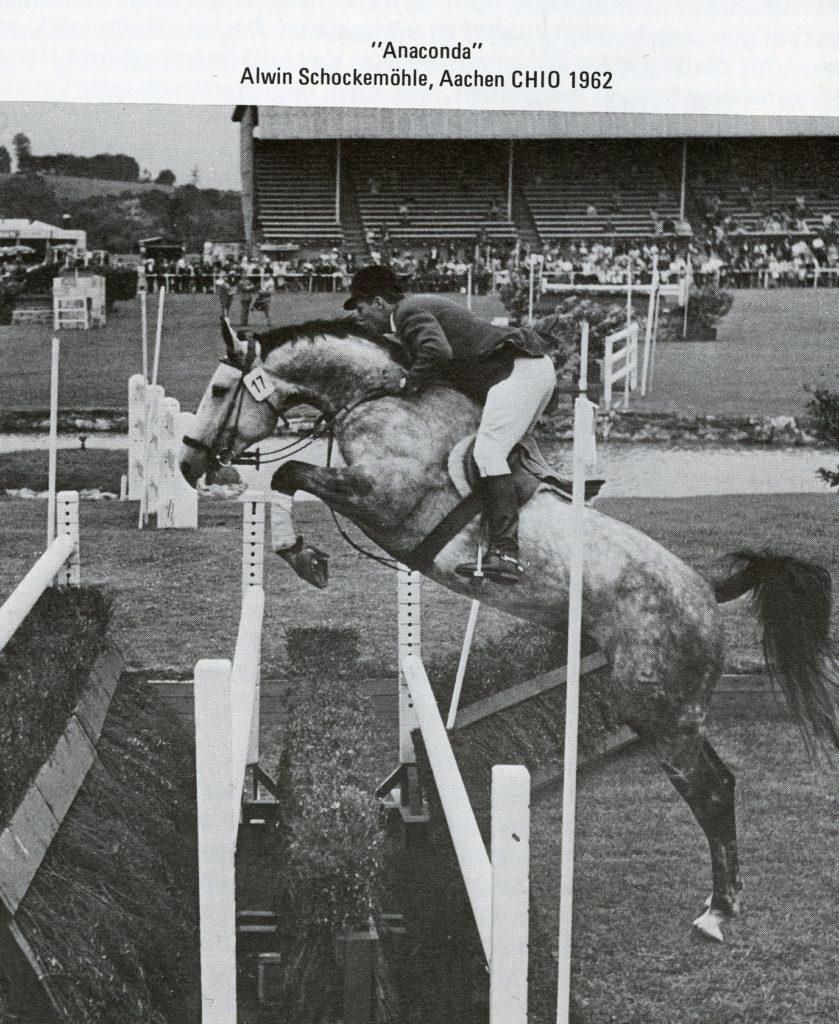
Agram was the sire of numerous international jumpers, including Anaconda (Feudal II) with Alwin Schockemöhle and Mary Chapot, and Paul Schockemöhle’s Askan (Almhügel III)
When we look at the number one jumping sire in Hanover, Stakkato Gold who stands at the Sprehe Stud, we see the influence of the old families and, in particular, Agram.
I am grateful to another of my German friends, Jens Meyer who is a keen student of Hanoverian mare lines:
“I have had many discussions with Paul Schockemöhle about this, how important it is to keep the old families, but on the other hand, how difficult it is, because many of the jumper breeders want to sell foals, and in Germany it is not like Belgium or France where you can sell foals on the pedigree, here you have to have a foal that looks impressive at the foal shows, so there is a danger of losing these families, but when I look at the pedigrees of modern stallions like Grey Top and Stakkato Gold, I am really surprised to see how important the old lines are still.”
Alsterröschen was the product of the breeding program of one those old style breeders who followed their instincts, not the whims of fashion.
Jens tells the story well: “The breeder of Alsterröschen was Franz Luth. He was not happy with the stallions at the local Dannenberg stallion station at the time, and that is why he bred to Agram – at that time they had big strong stallions at Dannenberg, heavy old style horses, and he preferred Agram who was a lighter horse. So he said, I will breed Agram back to an Agram mare, and everybody said, you are stupid, and in the end, the world today must be happy that he had these bloodlines.”
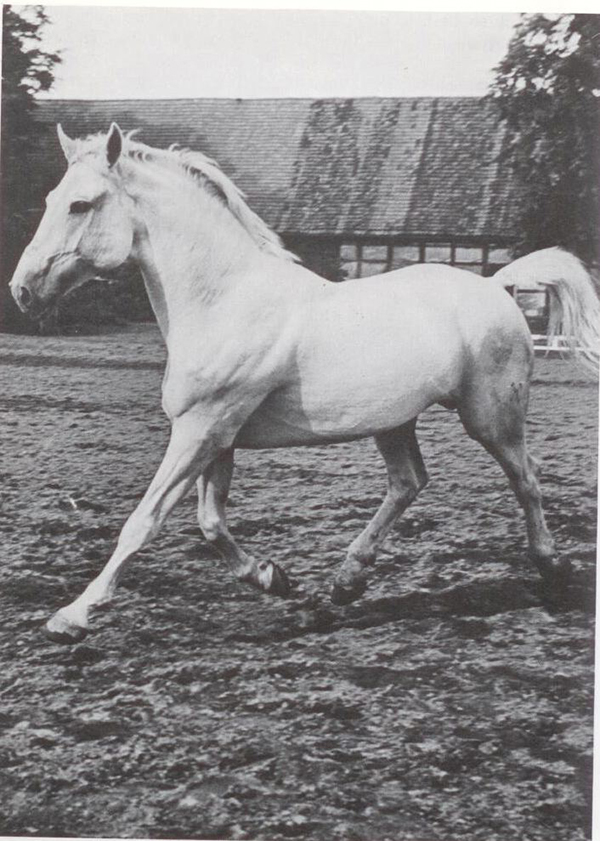
Agram and his dam sire….
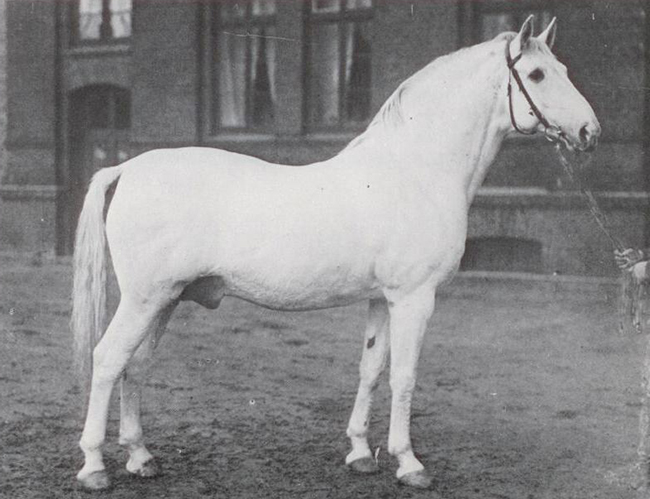
Amateur I
Bred to Domspatz (Dömitz I / Graf) in 1969 Alsterröschen produced Dux Z (Don Rudolpho) who competed 1.50m with Franke Sloothaak, winning a 1.50m GP with Franke at Leeuwarden CSI in 1988. In all she produced seven foals, but it was Wildrose, born in 1980, that earns Alsterröschen her place in this line-up. Again, Jens tells us the story:
“It starts with Algave, she was by Agram out of a mare with just a number, 311516939. Mr Luth bred this mare back to Agram and then comes the mare, Alsterröschen. In 1980 she produces Wildrose by Wienerwald. I was there in ’84 so I knew her as a young horse. She was not a ‘nice’ horse, she was just 6% Thoroughbred so Mr Luth took her to Calypso, the first Holsteiner stallion that Dr Bade brought to Celle, and she produced the filly, Carmen.”
“Then comes Mr Kamphorst from the border near Holland and he buys Carmen from Mr Luth. Where he lives is very close to Jos Lansink, so he breeds to Libero. Mr Luth did not have a son to go on the with the breeding program, but it was possible for another breeder, Arend Kamphorst to keep those lines, and really go straight ahead.”
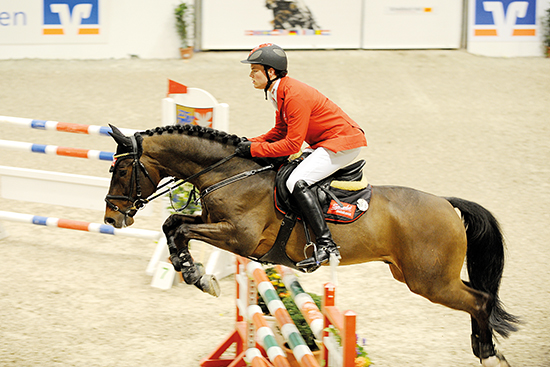
Stakkato Gold
And the Libero filly out of Carmen (the mare by Calypso II out of Wildrose) when bred to Werther, produced Stakkato Gold’s dam, Wertherröschen…
Werther, Stakkato Gold’s damsire
“In the 90’s, Werther was very popular, and with Werther we have the lines Marcio xx, Dolman, Amateur, so in the end, we have very old breeding, and with this old breeding, we have a perfect match and produce this shiny horse, Stakkato Gold. It was a shame that he was only ridden by a junior rider, but I thought Stakkato Gold had the talent for the big sport.”
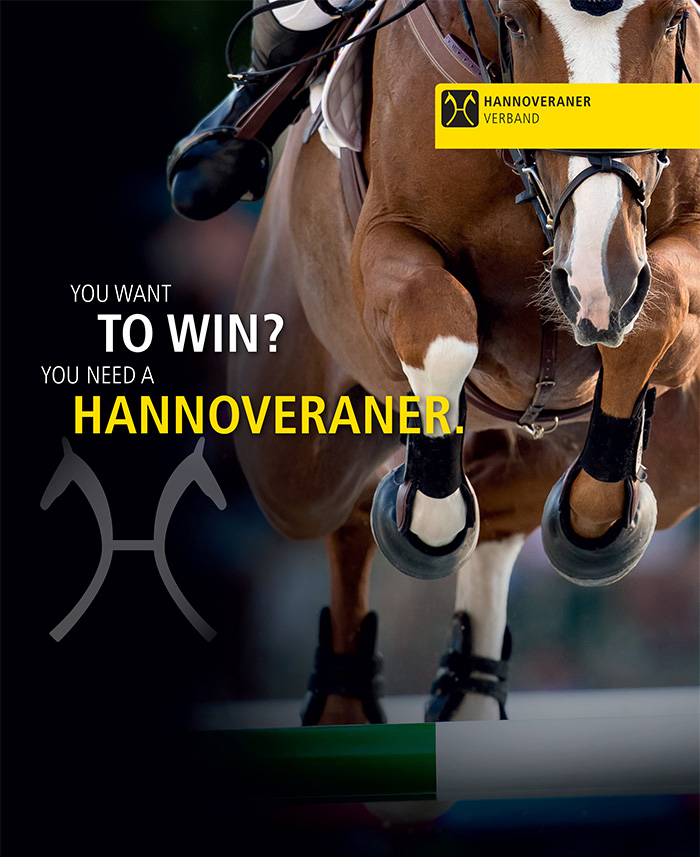
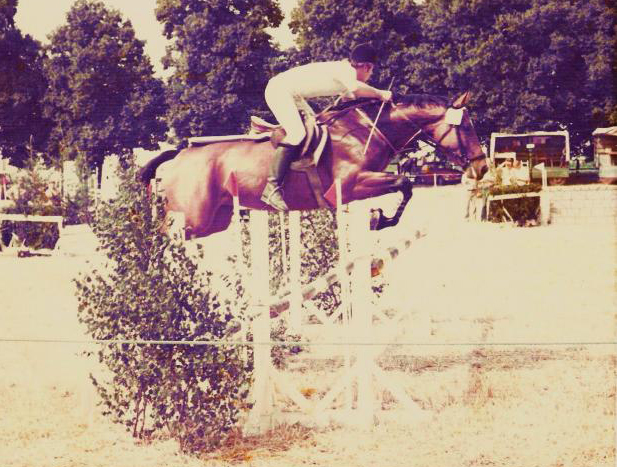
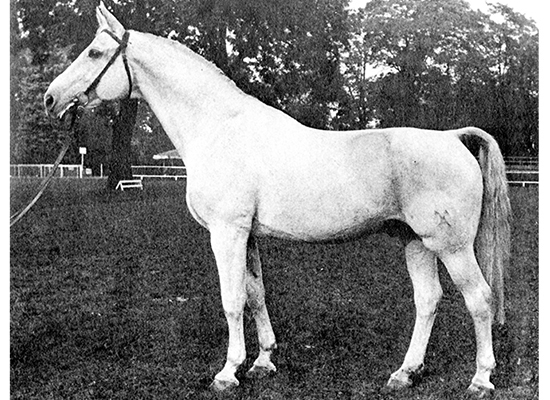
Gotthard, a sire of broodmares…
Even though Gotthard never really established a stallion line, he was an outstanding sire of brood mares, there are just so many influential modern stallions with Gotthard on their dam line – and also he was a great producer of top-level competitors.
For seven years Gotthard was the leading sire of showjumpers in Germany. Gotthard was the sire of international showjumpers: Goya, Goldika, Gonzales, Galipolis, Queensway Big Q, Goldfink, Golden Gate, Graf Sieno and Graf 2. Gotthard’s son, Genever sired Genius, the World Cup Showjumping Champion of 1992. Another son, Goldpilz is the sire of John Whitaker’s Gamon.
Voltaire, the hugely influential Dutch based Hanoverian jumping sire
Gotthard shone as a broodmare sire, and he was responsible for 25 States Premium mares. World Cup winner, The Natural (by Diskus) is out of a Gotthard mare, and Voltaire, the hugely influential Dutch based Hanoverian jumping sire, was similarly out of a Gotthard dam. Indeed Gotthard mares formed the basis of Léon Melchior’s Zangersheide stud, then Studbook, of jumping horses.
The great breeding expert Werner Schockemöhle, in his text Die Grossen Hengste Hannovers, described Gotthard as ‘lucky’ to be accepted into the stallion ranks at Celle:
“At the time he was not really ready. He looked weak and lacking in his expression – he was not developed sufficiently in the shoulder and in the formation of his neck. No one could guess at the time how lovely and expressive the horse would be ten years later. The fully matured Gotthard impressed through his perfect shoulder and his perfect neck, and even his head could be classed as nice – even though he had too strong cheek bones from his Arabian ancestry, otherwise the head was clear and dry with a wide forehead and a lovely big eye. His croup could have been a little longer and a little bit more sloped in the top line. His hind legs were quite good, but you have to admit that his hocks could have been better.”
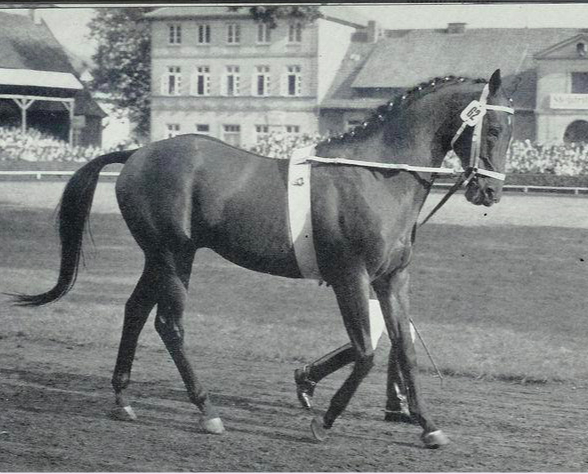
Perser xx
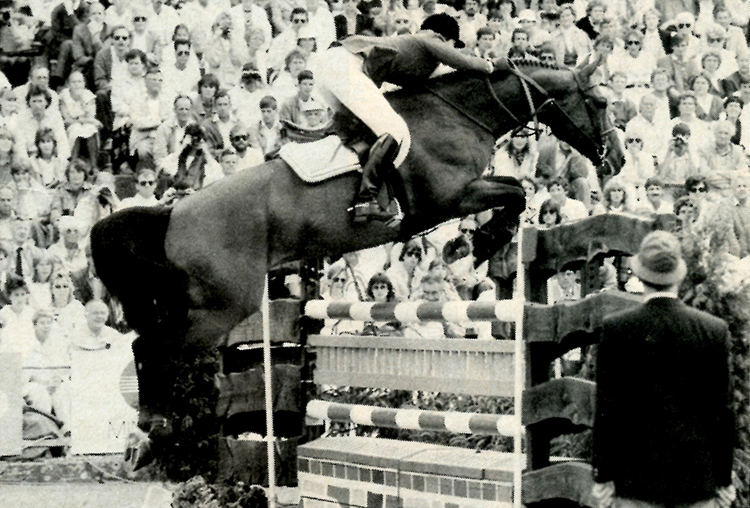
“The mare Goldbanner was a jumper, she competed at 1.20m, 1.40m classes, ridden by Heinz Böttcher’s two sons. The interesting thing is the Thoroughbred breeding, there comes Perser xx, he was a jumping horse producer, then we have Sellhorn by Senator, from the Hanoverian S line, and finally, the great grandmother, Kemenate, she is by the Trakehner, Keith, who is also on the pedigree of Pilot.”
“It’s always interesting to see that those pedigrees have enough Thoroughbred and Trakehner in them. She was bred in the Stade area, and even in those older times, these were riding horses, there was no draft horses – or Warmblood horses in the type of draft horses – in their breeding. When the wealthy people had horses, they had more riding horses.”
Does the Böttcher family still breed horses?
“They are still breeders, they had success with this line but now they are doing more with dressage horses…”
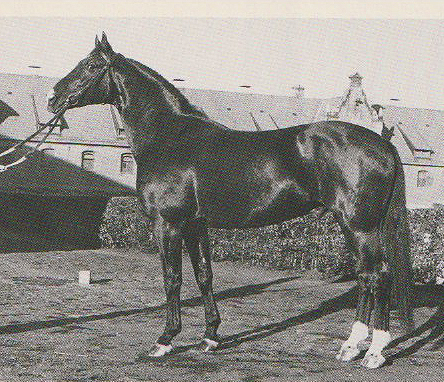
Diskus
“The most famous horse from this mare, The Natural, is by Diskus (Domspatz / Senat) – I was at the station where he stood, Sulingen, in 1980. He was a fashionable horse. The State Stud leased him to Paul Schockemöhle, so after the season, Diskus would go for six weeks to Paul Schockemöhle to breed Paul’s mares. For the bloodlines he had, Diskus was a light horse, he was not the easiest with the temperament. He was a real stallion, always nipping a bit and he was lazy covering mares, ooh so lazy, you cannot imagine how many hours I spent with him in the breeding room with the mares…”
Gute Sitte
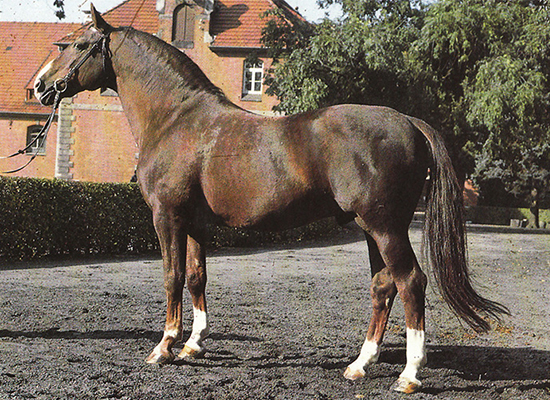
Gute Sitte’s sire was Grande (Graf / Duellant) who was lucky to be born in an era when the breeders were prepared to trust the wisdom of the head of the state stud Celle, the attitude was if he sends us a stallion, then we send our mares to him.Grande was little (just a touch under 16 hands) and not terribly impressive to look at.
Dr Bade – Grande wouldn’t have been licensed…
Dr Bade, long-time head of Celle, cheerfully agreed that one of the greats of breeding would not have made it if he had come before one of the modern licensing commissions:
“Oh, Grande wouldn’t be licensed. But that is the success of our breeding! At the time he was licensed – I believe there were discussions at that time even – because he was anything other than a riding horse, but he was of a good bloodline.”
As it turned out Grande went on to produce 33 approved sons, 34 states premium mares and top showjumping progeny like Grande Giso and Gute Sitte. His grand children seem to have been the real stars – Galapagos with Gabriella Grillo represented Germany at the 1982 World Dressage Championships, and was one of the leading lights of the ‘new’ class, Freestyle Dressage to Music.
Grandeur (Gralsritter) won over a million Deutschmarks in a spectacular showjumping career, and since then has proven himself as a superior sire.
As a competitor, Gute Sitte was a frontline competitor, and ridden by Eric Wauters, she was part of the bronze medal winning Belgian team at the Montreal Olympics in 1976. As a brood mare, she produced three foals. in 1981, the mare, Erle Sitte (Kini),1982, the stallion, Feine Sitte (Lugano van la Roche) and in 1985, the brood mare, Insel Sitte (Major de la Cour) who bred to Avontuur, produced the 150 jumper, Ialta Sitte, with Darco, the approved stallion, Ksar Sitte, and with Carthago, Cordano Sitte Z, who jumped 1.60 with Morrocco’s Abdel Kebit Ouaddar.
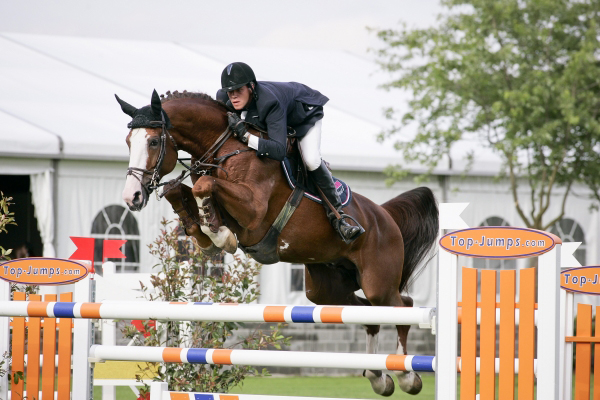
Ogano Sitte
As a brood mare Ialta Sitte was a sensation. Her most famous foal is Ogano Sitte by Darco. He had one win at 1.60m level with Dominique Hendrickx and has since gone on to be an important sire. Ogano has produced one 1.65 jumper, Thelma la Tour (Calvaro), and the current hot stallion Aganix du Seigneur (Chellano) along with another thirty five 1.60 jumpers.
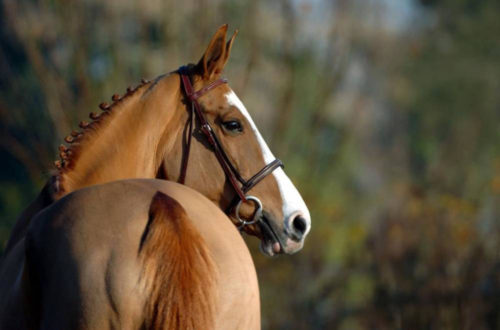
Insel Sitte
Insel Sitte bred to Aramis de la Cense produced Atlanta Sitte who was another sensational broodmare. Atlanta was the dam of Callas-Sitte (Calvaro) a 1.60 winner with Christina Liebherr and dam of another 1.60 competitor Rivella Sitte (Kannan).
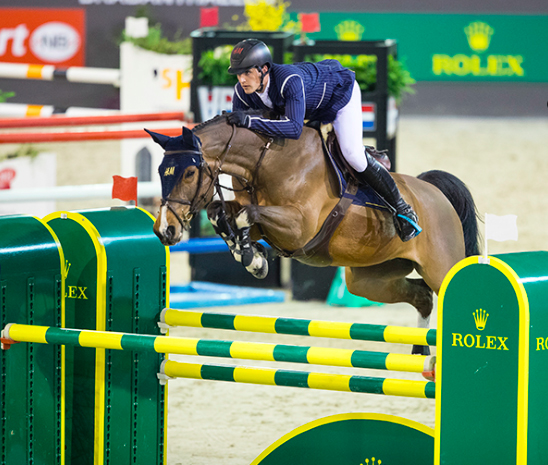
Ustina Sitte
Atlanta is the dam of Riviera Sitte (Parco) who jumped 1.50, and is the dam of Ustina Sitte (Clinton), 1.60 with Nicola Philippaerts and Button Sitte (Ogano Sitte), 1.60 with Ireland’s Richie Moloney. Atlanta Sitte’s daughter by Nabab de Rêve, Nacre du Seigneur is the dam of Alcazar Sitte (Rexar du Houssolt) a 1.60 jumper with Japan’s Mike Kawai.
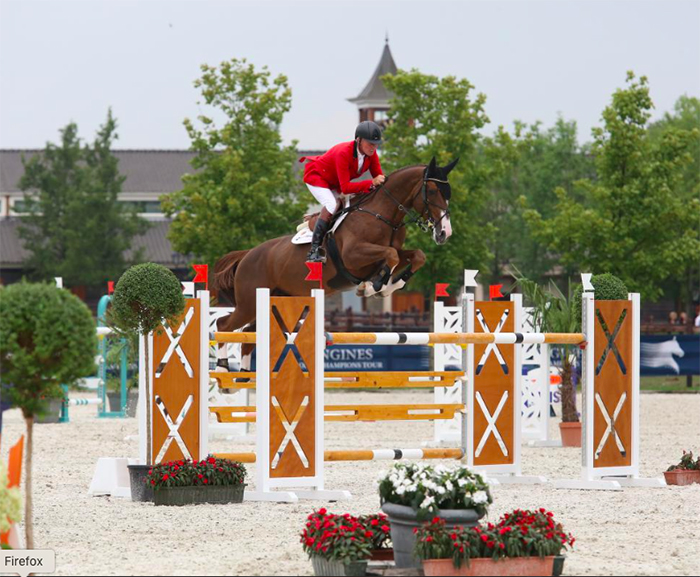
Aganix du Seigneur
Another Atlanta daughter, Cadix du Seigneur (Chellano Z) produced Arsouille du Seigneur (Schilling), 1.60 with France’s Robert Breul along with Aganix du Seigneur (Ogano Sitte), 1.60 with Jos Lansink and another 1.60 jumper, Eganix du Seigneur (Ogano Sitte).
The Atlanta son, Atlanta du Seigneur (Schilling) has had one win and five placings at 1.60 level with Gudrum Patteet.
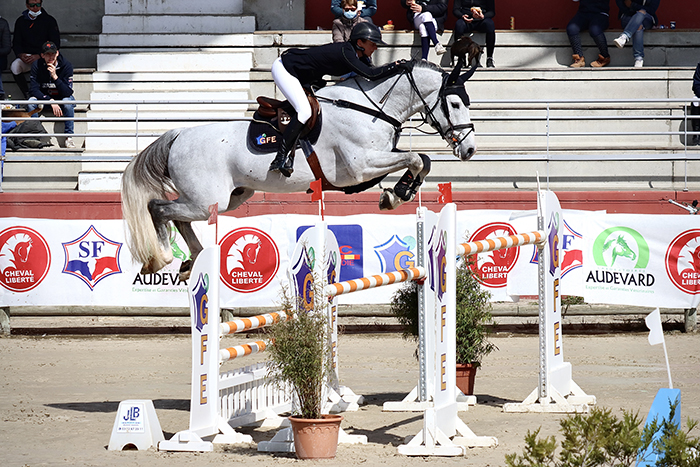
GFE Excalibur de la Tour Vidal
The blood of Gute Sitte continues to produce great results. At the Grand Prix of Rome in May 2021, Penelope Leprevost was 4th in a 1.60 Grand Prix with GFE Excalibur de la Tour Vidal. The grey stallion is by Ogano Sitte and out of Thelma la Tour Vidal who is also by Ogano Sitte. Excalibur has won €168,098 so far, Penelope rode him in 7-year-old classes in 2017, and 2020 was their first year competing 1.60m.
Ratina Z
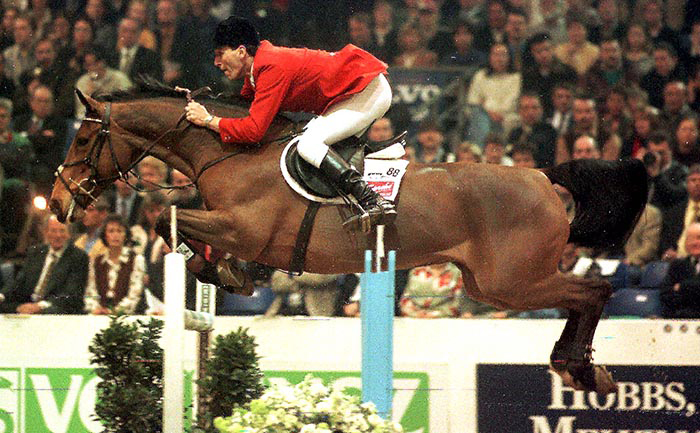
Rounding out Ludwig’s quartet is Ratina Z. This is something of a controversial selection, indeed, the distinguished Dutch Breeder, and veterinarian, Jan Greve uses Ratina as an example to support his argument that you can’t combine breeding and a competition career:
“I’m not sure why this happens but it seems to me that you cannot use the animal’s body twice – to have it a showjumper until it is 14/15 and then into the breeding, it hardly ever works. Ratina didn’t work. It might just be that it is too much to expect from the body. It’s funny but every body has a certain age when it produces the best, with a milking cow, it is the third to the fifth calf that gives more milk. I cannot explain why it happens with horses but it does seem that you can’t use the body double, to be a good sporthorse and then to be a good producer.”
A memorial to Ratina…
Admittedly, Jan made this statement some years before Ratina’s son, Comme il Faut (Cornet Obolensky) appeared on the scene, but the fact remains that Ratina and her clones produced many many foals, but not many of them were top competitors and one of her more successful products was Calipa who was Ratina’s first foal, born before the mare’s jumping career got serious.
First to Ratina’s breeding. She is the product of the founding philosophy of Léon Melchior’s Zangersheide Stud as the late Mr Melchior explained to me in an interview in 1993:
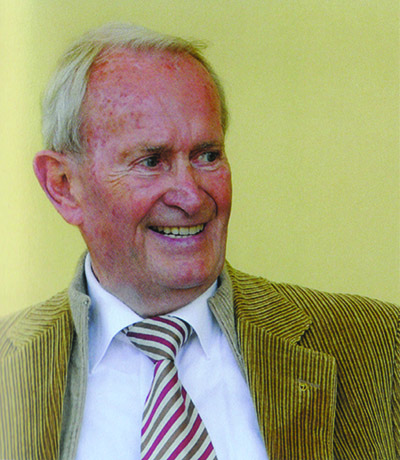
“If you start in Hanover with the best level of jumping horse you can find, that means you start with Gotthard and horses like that, then you have to cover those mares with another good horse – so you go to a horse like Almé. Why? Because Almé is from France, very far away from Hanover, and you get the outcross effect. The outcross effect means that if you have two or three breeds of dog, they are always more healthy if you cross them than if you keep line breeding the same breed of dog. If you cross two different horse lines then the result is stronger, healthier, more robust.”
“So that’s what we did with the next generation from Almé. If you cross the result with the best of the English Thoroughbred and the Arabian from Ramzes, that’s what we had in Ramiro – then we are once again crossing a completely different way – the out-cross effect again. Then with the results of breeding with Almé and Ramiro, we can cross them again without any danger at all – then you have the best results of inbreeding.”
Ratina is by Ramiro, and out of the mare, Argentina Z by Almé out of the founding mare of the stud, Heureka, a top jumper in her own right, and winner of the Aachen Grand Prix in 1970 with Hermann Schridde. Although Heureka was branded Hanoverian, her breeding was entirely Holsteiner, by Ganeff out of a Falerner mare.
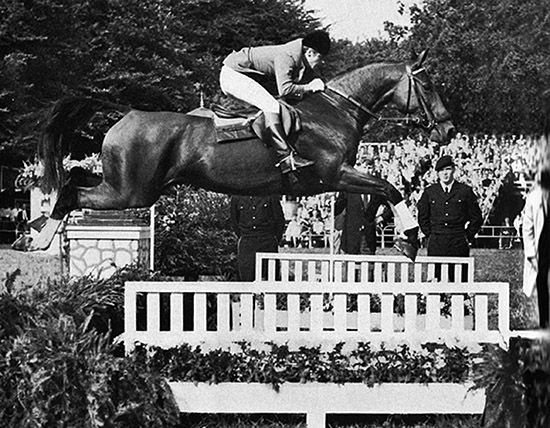
Heureka
When he established his stud, Melchior was registering his horses with the Hanoverian Verband, but as the percentage of Hanoverian dropped and dropped until it was virtually non-existent, the marriage of convenience led to divorce and the founding of the Zangersheide Studbook in 1992.
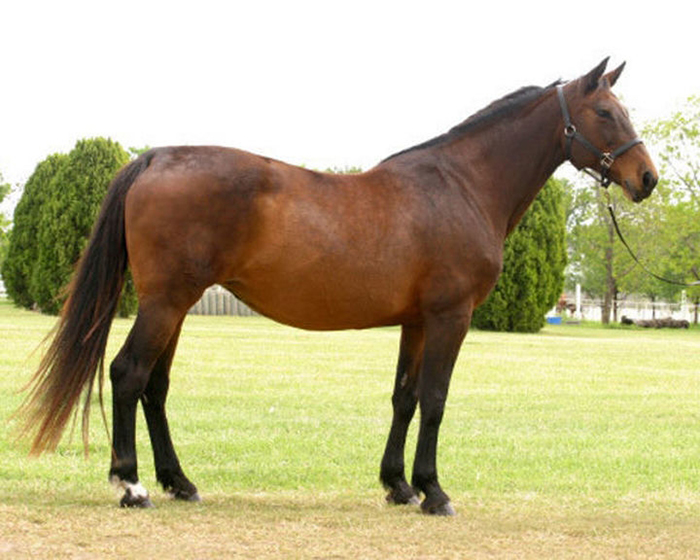
Calipa Z – Ratina’s most successful brood mare daughter…
Ratina had her first foal as a four-year-old, Calipa Z by Cor de la Bryère – in keeping with his motto the best to the best, Melchior leased Corde from the Holstein Verband for one season, 1985. After producing a couple of stallions that disappeared, Calipa foaled Chicago I Z by Caretano. Although Melchior complained about people dropping the Z from his horses names, he more than made up for it by decorating any horse that came into his hands, even horses that he had had nothing to do with their breeding, with the letter Z. Caretano was born in Holstein to a Holstein breeder and was by Caretino out of a Reichsgraf mare. Thus Caretano, one of the most successful of the Z stallions, acquired the suffix after his purchase – sort of branding by chequebook.
Calipa produced three more 1.60m jumpers. The stallion, Camillo La Silla (by Montebello La Silla, more branding by cheque book, this stallion started life as Portofino and was Westfalien through-and-through – by Polydor out of a Parademarsch mare….) Camillo had ten placings at 1.60m with Jeroen Dubbeldam.
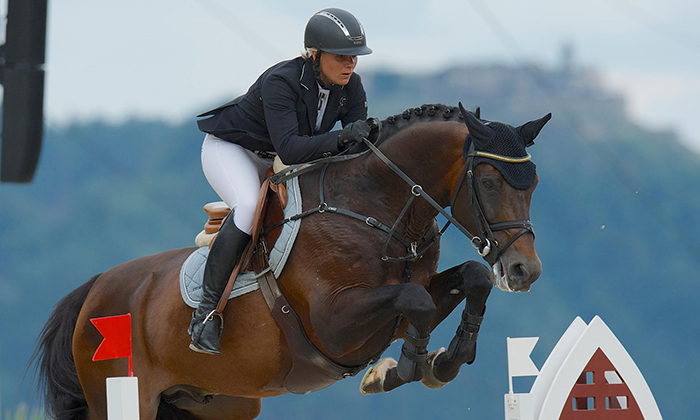
Sterrehof’s Cayetano Z
Another stallion, Sterrehof’s Cayetano Z (Caretano) had two wins and 15 placings at 1.60m with Austria’s Julia Houtzager-Kayser.
Back to Ratina, her 1988 colt foal, Rex Z, illustrated Melchior’s belief that once he had his outcrosses, he could breed the progeny close without the risk of inbreeding. So covering Ratina with her full-brother Rebel Z I, produced Rex Z. Like his sire, Rex Z was not hugely successful at stud and does not seem to have competed.
Crown Z
2000 saw Ratina produce three foals, the mare Clever Z (Carthago), Treasure Z (by Tlaloc la Silla) who jumped 1.60 with the Egyptian Wael Mahgery, their best placing 9th in the CSI2 Alexandria, and Crown Z, who competed with Melchior’s daughter, Judy Ann at 1.60 level, with one placing at 1.50.
Comme Il Faut – Ratina’s only real star
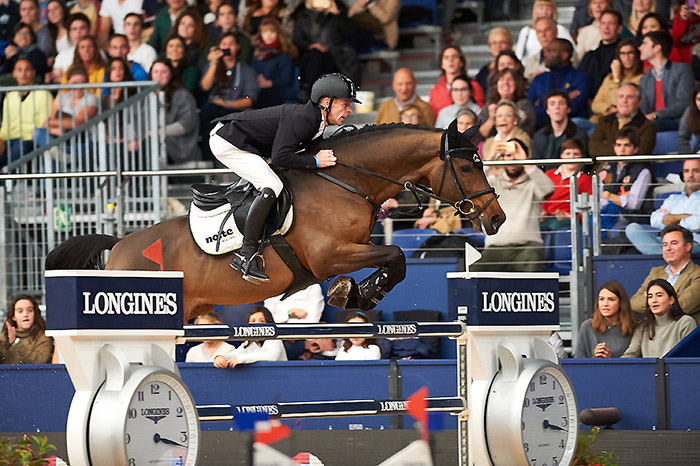
Comme il Faut, a winner with Marcus Ehning
In 2005 Ratina at last produced a genuine superstar, Comme il Faut by the great Cornet Obolensky. Six wins and 35 placings at 1.60 (six 5* wins) with Marcus Ehning.
Ratina herself is listed with fourteen offspring, but she was also cloned on a number of occasions, thus we have Ratina Gamma Z, Ratina Alpha Z, Ratina Beta Z and Ratina Delta Z. So far as I can tell, not one of them produced a 1.60m jumper.
Ratina Z and Ludger Beerbaum at her competition retirement at Aachen
Ratina Z was retired as a broodmare in 2005, and lived the rest of her life at the stables of Ludger Beerbaum. She died in 2010 at the age of 28…
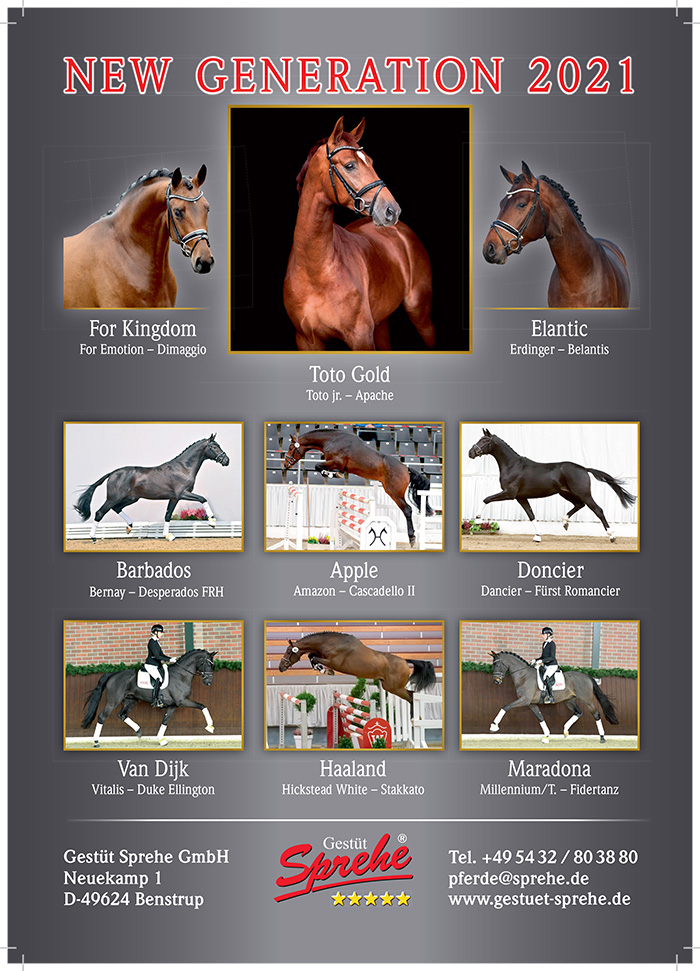
Egbert Schep
Egbert is an influential Dutch breeder and an acknowledged expert on bloodlines. Starting out as an 18-year-old horse dealer, Egbert’s business just grew and grew until in 1990, Egbert and Annemieke Schep decided to build new accommodation in Tull en ‘t Waal. These days, the business has changed from dealing towards the breeding, rearing and training of young horses. Stal Schep also stands a collection of exciting stallions.
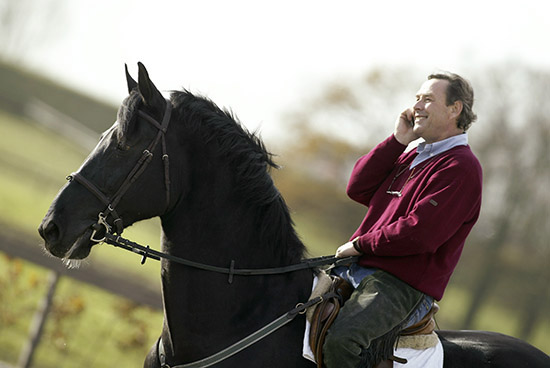
This was Egbert’s response to my question:
“It’s quite difficult to give really a top five of favourite brood mares, but checking offspring, the five mares in Holland I think are very good are:
- Lady Third Black (Burggraaf x Nimmerdor)
- Oase van de Heffinck (Elmshorn x Major de la Cour)
- Elottie W (G. Ramiro Z x Farn)
- Ovanta I (Lux x Nimmerdor)
- Ulen (Niagara x Harmonie)
Lady Third Black
Lady Third Black was foaled in 1993, and by Burggraaf, out of a Nimmerdor / Pericles xx / Joost mare. Burggraaf was a hugely influential stallion in the emergence of the Dutch showjumper. He brought the blood of the great Holstein founding fathers, Landgraf and Cor de la Bryère to The Netherlands, he was by Landgraf, from a Cor de la Bryère mare … but not without some drama!
While Burggraaf was undertaking his KWPN stallion test at Ermelo, he was sent home in very controversial circumstances. Burggraaf’s blood test showed that Landgraf could not be his sire.
Burggraaf’s German breeder was contacted, but was sure that no other stallion could have covered the mare – so the Holstein Verband was contacted and asked for a blood sample – whereupon it was revealed that the Holstein Verband had made an error in the recording of their leading sire’s blood type. Burggraaf WAS by Landgraf, and the young stallion was back into the 100-day test.
He was successful in that test and received 8.5 points for his jumping and 9 for his character (on a scale of 1 to 10).
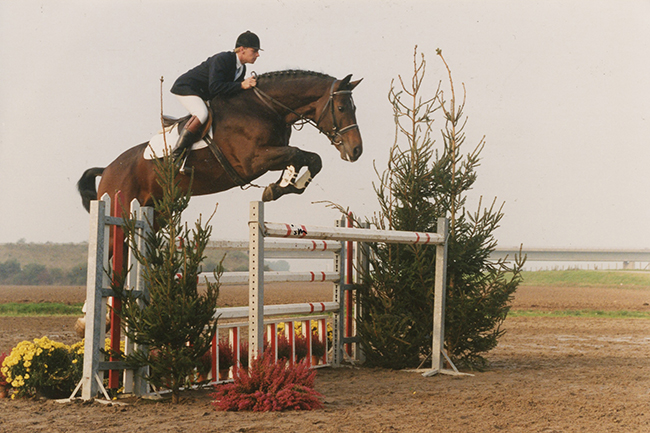
Burggraaf (photo – Jacob Melissen)
However, like many of the greatest stallions, Burggraaf had difficulties with the Dutch Licensing Commission. After inspecting his first crop of foals, he was only awarded a reserve premium, but fortunately his progeny soon proved their sire’s worth.
Burggraaf stood for many years at the Nijhof Stud, according to Jeanette Nijhof: “Burggraaf stamped a lot of his babies with the nice Landgraf face. Most of them were good movers and jumpers. His best combination was with some Thoroughbred on the mother line, for instance, he crossed well with Furioso xx bloodlines, through the stallions, Voltaire and Le Mexico.”
Lady Third Black is out of a mare by another of the Dutch Jumping Greats – Nimmerdor
Wiepke van de Lageweg bought Nimmerdor at a stallion show as a two-year-old, for the (then) considerable sum of 25,000 florins. Nimmerdor was to transform Wiepke the cattle dealer, into one of the world’s leading stallion keepers…
Wiepke had started to develop his interest in horses, and purchased his first horse in June of 1972; coincidentally, Nimmerdor the horse that was to make Wiepke’s name, was born that same month as Wiepke! He purchased the then three-year-old stallion from breeder J.A. Dijkstra of Woudsend.
Nimmerdor, the first success for the VDL stud
Jenneke Smit tells the story in her article, Quality wins the Contest in IDS magazine, 2009, the year the family van de Lageweg were declared KWPN breeders of the year.
Wiepke told Jenneke:
“In 1975, I took my first stallion, which I found in Holstein, to the selection in Zuidlaren. Unfortunately, he wasn’t good enough and didn’t make it past the second round. After that, I decided to sit in the stands until I saw the best stallion of the selection. When Nimmerdor came into the ring, I liked him right away; he was my kind of horse: athletic, youthful, and with a nice head. At the time, I really didn’t know anyone in the horse world, so I approached the breeder there at the selection, but Nimmerdor wasn’t for sale.”
“That was a Saturday evening. On Monday evening, I went to the breeder’s home. He told me again that Nimmerdor wasn’t for sale, but he let me look at his dam and granddam in their stalls. The dam was really beautiful, and I liked the granddam as well, although she was a heavier type. The breeder asked if I wanted to sit down for a cup of coffee, and things got better from there. Ultimately, he said that he would only sell Nimmerdor for ‘a lot of money’. Then, I got up, walked into the hallway, and said that he should discuss the matter with his wife and knock on the door when I could come back in the room again.”
“Then he named his price. It was a lot of money for a still unapproved stallion, but I wanted him. I had to buy Nimmerdor!”
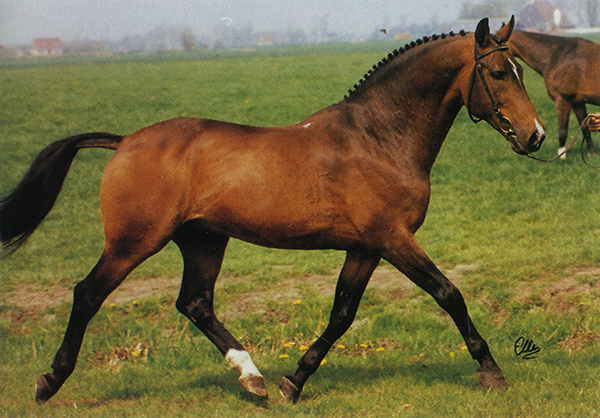
Nimmerdor
As a brood mare Lady Third Black was a sensation, just look at her foals:
1998 – Rady Third Black (by Concorde), 1.50m with Matthew Boddy (GBR)
1999 – Fadl Allah (aka Silvano Black) also by Concorde, 1.60m with Emile Hendrix
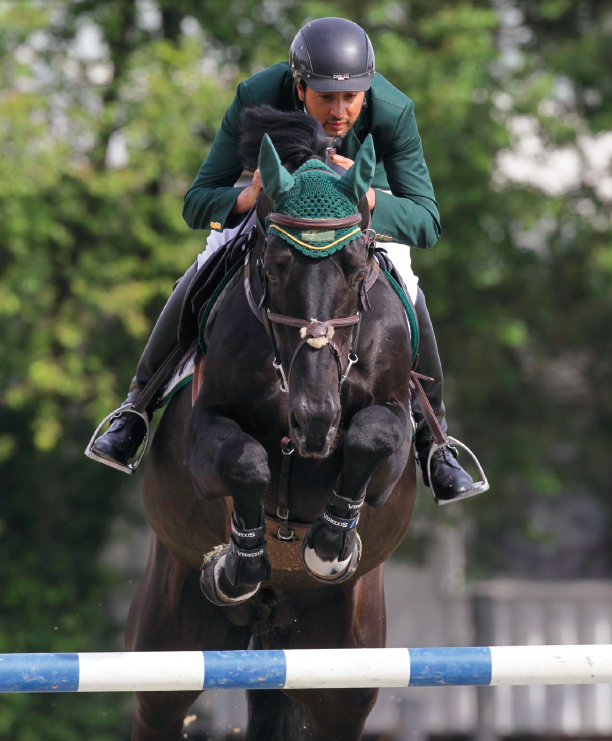
Vanhoeve (photo Julia Rau)
2002 – Vanhoeve (Concorde again) 1.60m with Khaled Abdulaziz Al Eid
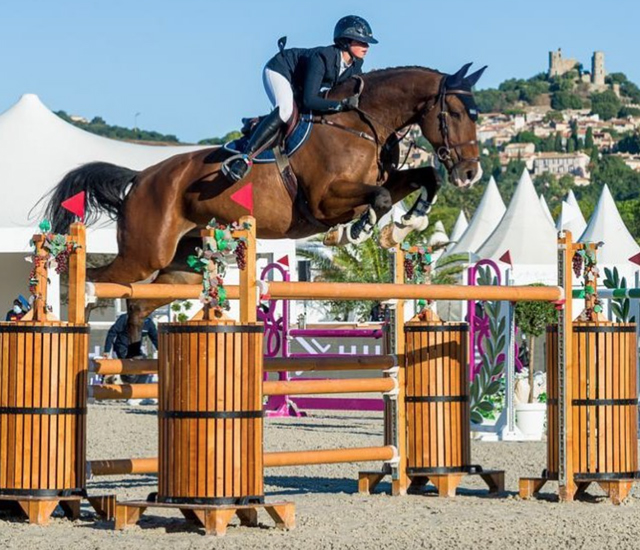
Erfurt
2009 – Erfurt (Tangelo vd Zuuthoeve), 1.50m with Emanuel Massimiliano Bianchi (ITA)
2013 – High Five (Toulon) 1.45m with Julia Houtzager Kayser (AUT)
Licensed sons: Goldstar H (Tangelo vd Zuuthoeve) with KWPN and Zippo RN (Quattro B) AES
This great producing mare, Lady Third Black, was bred by B.T and W. Geesink, but she was bought as a broodmare by Henk Hoeve in 1998. Lady Third Black is the mare in the KWPN studbook with the most progeny in international sport – from 17 foals no less than nine made it to international sport!
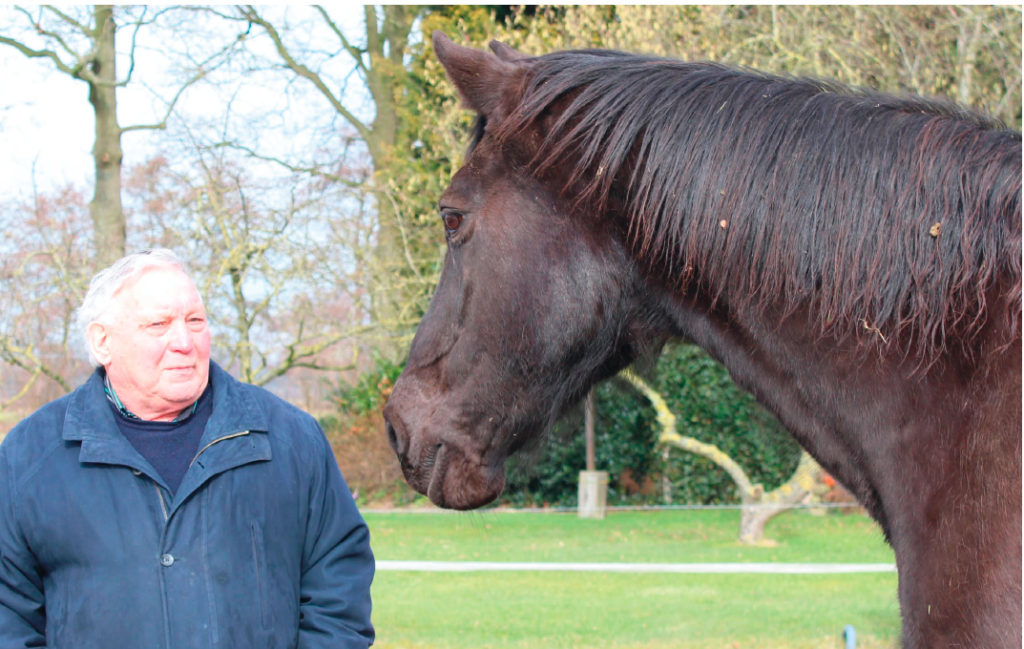
Henk Hoeve and ‘The Black’ (photo – Karin de Haan)
“What is quality? You won’t hear me say I know. I also don’t like people who are in the front with the opinion. Over the years I’ve had some good times and some not. I am now 82 years old and have learned a few things through trial and error. Then what is it? Quality is a feeling in a horse, I can’t explain it well. You tell us,” Dutch breeder, Henk Hoeve turned the question on journalist, Karin de Haan when she interviewed him in July 2013 about the mare he calls The Black, for the KWPN magazine, IDS.
As we talk, looking through the window of the farm house of Hoeve we see the twenty-year-old black Lady Third Black strolling past in the meadow. That helps…
“I like to see a horse with a beautiful head, an expressive eye, a height of between 1.65m and 1.70m, a mare with length and depth and a certain appearance, says Henk. “And yes, The Black has always had that combination of factors. Her children too. That is what makes her so valuable as a broodmare.”
“I remember when I bought her. She cost serious money back then. But she had ‘something’. And her Concorde foal was very good. In the end, quality pays off, as in this case too. Just the Concorde that came with it, I sold for about twice the amount I paid for the mare and foal. That is why I think that quality in your breeding is extremely important.”
“I started with harness horses sixty years ago, then I had ponies, and for the last twenty years I have been in showjumping horses. I only skipped the dressage horses, I don’t like that world of ‘nitpickers’. But whatever you breed, if it performs what it was bred to do, you’re doing it right.”
“In show jumping horse breeding this means that they have to jump at a high level. That does not mean that I necessarily think that broodmares should participate in the sport themselves. The Black has never run in sports either. What matters is that the children of a broodmare perform. That goes well with The Black.”
“As a breeder you will find out over time whether your mare breeds well or not. You just have to keep your eyes and ears open. I prefer to sell my breeding products young. Then the investment was the least large. Having a rider involved is simply a too expensive affair.”
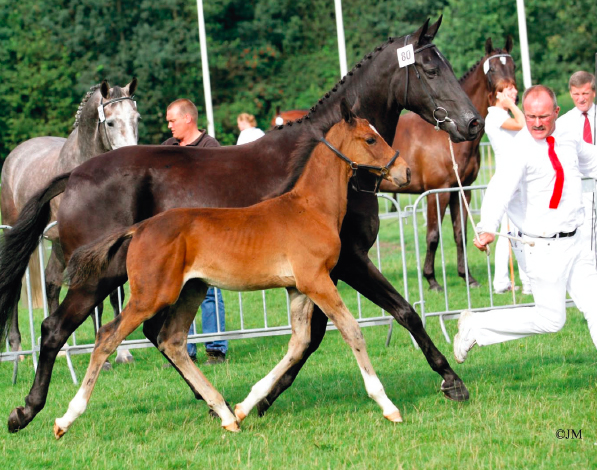
The granddaughter of Lady Third Black is this keur mare Zopina H (v.Tangelo v.d. Zuuthoeve), here in Exloo 2008 with a foal by Berlin (Photo – Jacob Melissen)
“The first two Concordes I had out of The Black I sold as fairly green horses. And well sold, may also be said. They stood out in sports. Of course you also need a bit of luck, but I think quality always comes up in the end. You can have your expectations, but they also have to be fulfilled.”
“The Black comes from the Pina bloodline, that was what made her interesting to me, and why I went to see if I could buy her. The Pina strain is a good breeding strain. The important characteristic of good breeding stock is that good progeny don’t happen once, but time after time. You don’t have to rely on a fluke in breeding. I also think that the combination of Viscount with Nimmerdor and behind it an English Thoroughbred (Pericles xx) fits well. You need a dash of blood in today’s breeding. That gives blood, hardness and appearance. Things that belong to quality.”
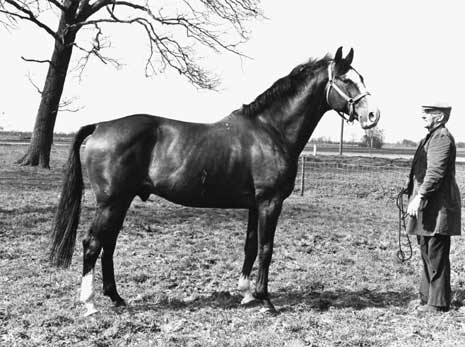
Joost was another of the foundation sires brought from Holstein to The Netherlands. He was by Consul by Cottage Son xx, out of Ulana by Anblick xx
The dam line starts with the mare Pina (by Joost). This mare was born at the farm of J.A. Ter Borg Folkers in Sellingen on May 7th in 1974. She was tall, 1.71m and was awarded the ster and preferent predicate. She comes from an NWP line. She produced two daughters who were very important in the jumping horse breeding. Upina (by Cadmus xx), has a lot of influence on the breeding of Familie Venderbosch, The Radstake.
Oase van de Heffinck
Another of the five mares chosen by Egbert Schep is Oase van de Heffinck. The mare is by Elmshorn, who started life in Holstein as Lorrado. He is a mix of the stallions that kick-started the jumping breeding in the marshes: by Lord out of a mare by Corvado, who combines Cor de la Bryère and Ramiro. Elmshorn was the sire of two 1.60m jumpers, Victor and Wilson.
Oase van de Heffinck was bred at the van Heffinck Stud by Hamerlinck family. Melanie Hamerlinck explained to me that she moved to another stud early in her life:
“Oase was bred here, my father rented the mother of Oase because he liked the pedigree and the type. Oase was a great mare and had super jumping qualities with a great mentality, a bit short in her body so to breed with her, you needed a longer stallion.”
“We sold Oase at age of five to the family Van de Plasse. They rode her really well, won a lot 1.40m classes and breed successfully with her.”
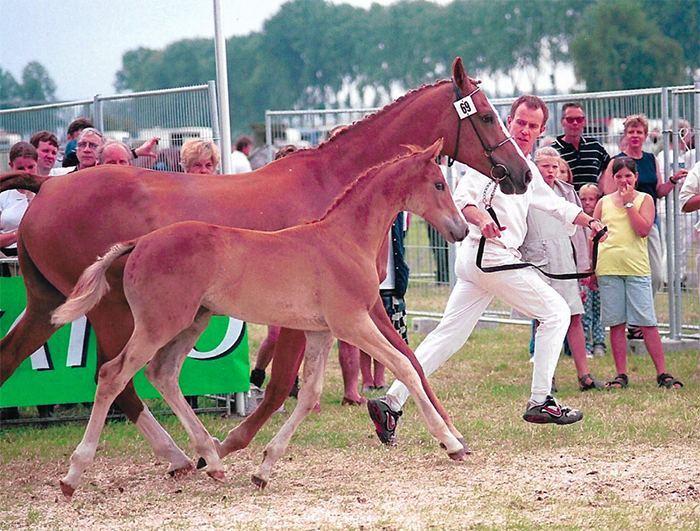
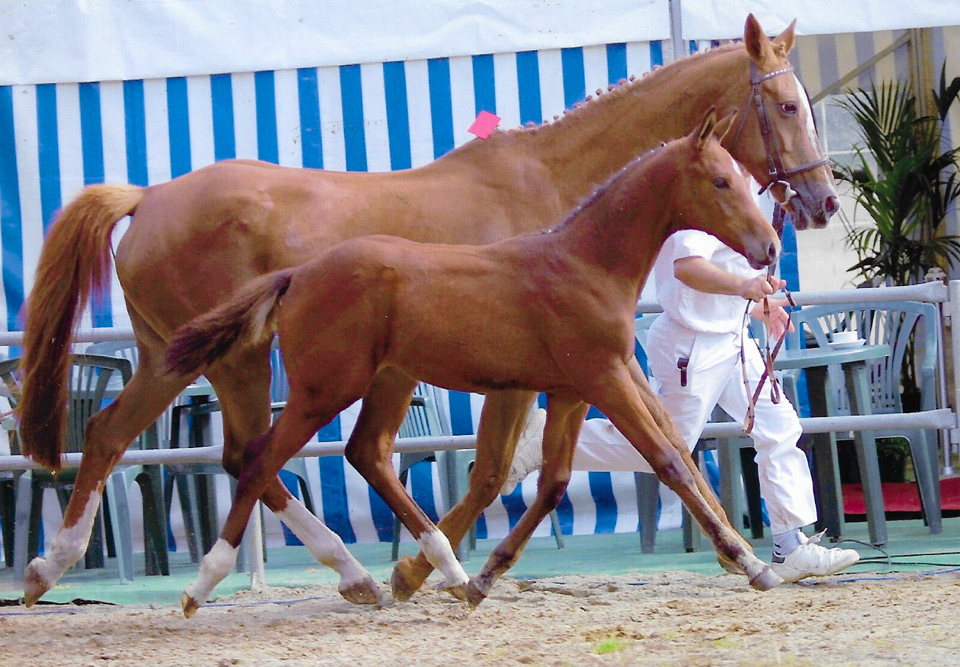
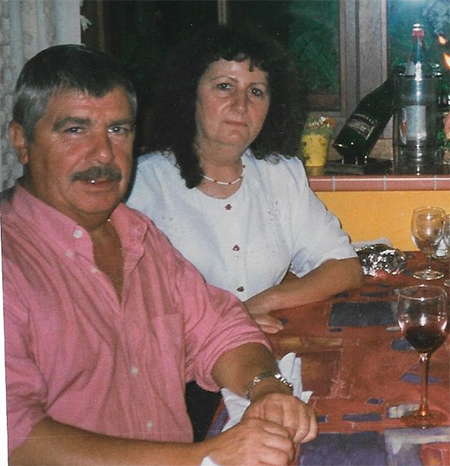
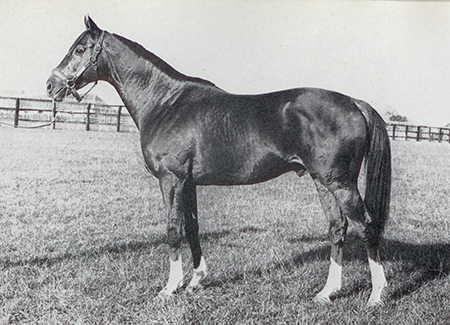
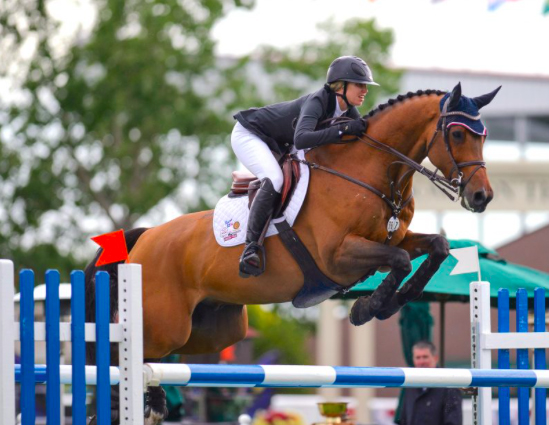
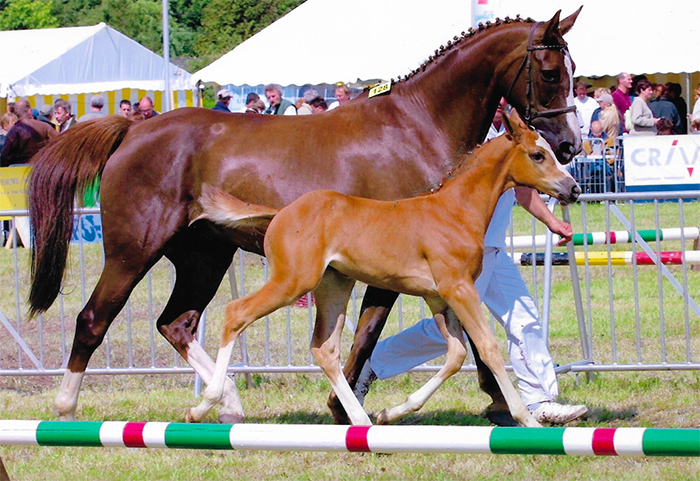
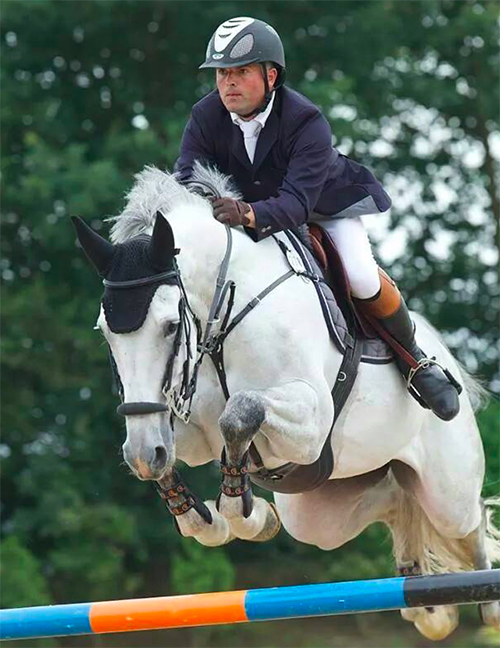
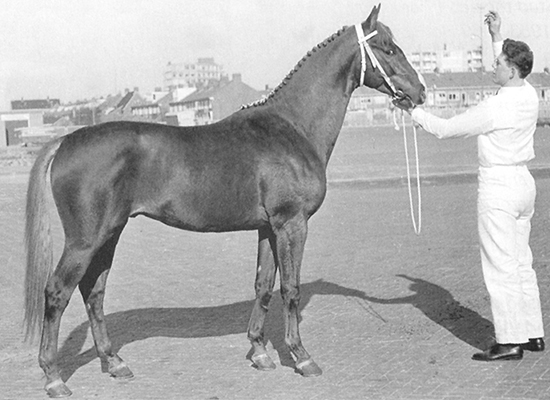
A delegation of Dutch breeders travelled to the Trakehner stallion licensing in 1964, headed by the Dutch inspector, J. K. Wiersema looking for new blood for the emerging Dutch Warmblood. They purchased Marco Polo for a very reasonable DM7,000 but the reception back home in Holland was not encouraging. According to Jacob Melissen in his Leading Stallions of the Netherlands 1992/3:
“When the chestnut was presented to the public in Zuidaren, they were far from pleased with this newfangled ‘upgrader’. True enough, Marco Polo was a rather smallish, still undeveloped stallion at the time, standing 1.60 m, a typical blood horse with long lines. His head was a trifle too long as well, and slightly convex between the eyes, not really a Trakehner type of horse. But Marco Polo would later not only grow into a good riding-type horse of sufficient size and volume – a half-bred looking like a Thoroughbred – but also into one of the greatest sires of the Netherlands, famous for his hereditary jumping talents and obliging character.”
Although Marco Polo didn’t serve many mares in his first seasons, it soon became apparent that his progeny could jump, and suddenly the chestnut was popular.
The first horse to really announce the arrival of a new jumping sire, Marco Polo was the mare, Elzette, who teamed with a 15-year-old Franke Sloothaak became Royal Dutch Federation Champion in 1973. The following year, Franke rode another, Polo Marco to become Champion of the Young Riders. Another future Dutch jumping star, Henk Nooren, had his initial successes with Jonker Arno, while in the United States, Katie Monohan was successful with Polo Boy, as was Melanie Smith with Vivaldi. Phillippe Guerdat rode Pybalia for Switzerland at the Los Angeles Games in 1984, and was reserve for the Seoul Games. Four years later. In Britain, Marius was a sensation with Caroline Bradley – winning the Birmingham Grand Prix, the Queen Elizabeth II Cup and the title, Showjumper of the Year 1977. Marius was out of a Sinaeda dam, and went on to sire Milton, one of the most famous showjumpers in history with John Whitaker.
Milton and John Whitaker
Jacob Melissen is a Marco Polo fan: “His products were not just good jumpers, they were always eager to go, ready for any fence, in fact they threw themselves into their work. And if you have a very capable jumper that never says no, the temptation is great to ask too much of it. This was often the fate of the young Marco Polos. Besides, they were late-developers, just like their sire had been. Used improperly, and with violence, even the strongest chain would break.”
Other famous progeny include Paul Weier’s international showjumper, Irco Polo (sire of Casimir, grandsire of Marcoville), Ico (sire of high-jumping specialist Nekoma), Interpol (international showjumper under Freddy Walsh), Legaat (sire of Gräfin and Stoppelhaene), Matador, Otto, Plutus, Recruut (another international jumper for Paul Weier), Salvadro and Topas.
Marco Polo was also a successful broodmare sire. His daughters produced Zadok (by Nimmerdor) and Concorde (by Voltaire). In the USA, Hap Hansen’s Dalfsen and Debbie Schaffner’s Den Ham were both out of Marco Polo daughters.
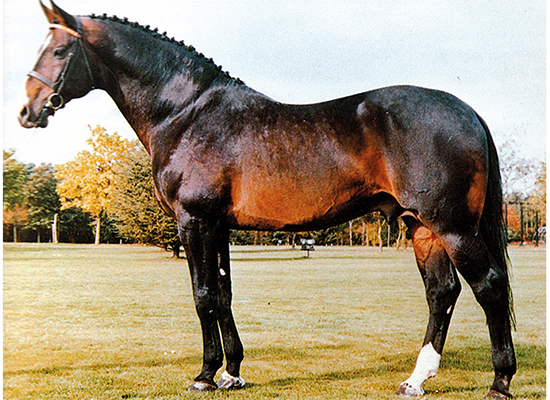
Ramiro
Elottie W is by Ramiro by Raimond, a son of Ramzes aa, out of a Cottage Son xx mare.
Conceived in Holstein, born in Westfalia, licensed at Neumünster, and himself an international performer under Fritz Ligges, Ramiro influenced nearly all European Performance Studbooks.
Ramiro was the most popular representative of the Ramzes line and at one stage was the most frequented sire in Germany. He stood at stud in Westfalia, Holstein, Zangersheide and Holland.
When Ramiro was presented for selection, he was described as the ideal type of the modern Holsteiner – strongly imprinted by his dam, tall and elegant, showing the top line of his grandfather, Cottage Son xx, with powerful frame, a glorious face and large, clear eyes. His excellently formed neck, beautifully set, could still be seen – even when he was an old horse – and is stamped on his progeny. Ramiro displayed a very good walk, a normal trot, and a great canter.
Ramiro was by the Ramzes son, Raimond who was born in 1960 out of Infra by Fanaticker. According to The Holsteiner Horse, “his progeny were very uniform, true-to-type and of good character, were trustworthy and easy to ride. Raimond sired well over 120 daughters who were held in high esteem, especially when they were out of Thoroughbred mares.” He was the sire of eight approved sons but only Ramiro, born in 1965 out of the Cottage Son daughter, Valine, was successful. He was the only foal of Valine, who went to Italy where she was a successful jumping competitor.
Valine H, the mother of Ramiro
Again, let The Holsteiner Horse, tell the story:
“Even as a yearling, Ramiro radiated high quality and sovereignty. As a two-and-a-half year old, he was runner up at the Holsteiner licensing in Elmshorn. He was very big, already standing 1.75 metre high as a three year old, with a clever head on a long, beautifully arched neck. Gentle to handle, just like his grandsire, Ramzes, he was very talented at jumping, which he not only proved by finishing the stallion performance test in Westercelle as the best of his year, but also later at international level with Fritz Legges. However, at the time he was already a self confident stud stallion and occasionally tested his rider with a trial of strength.”
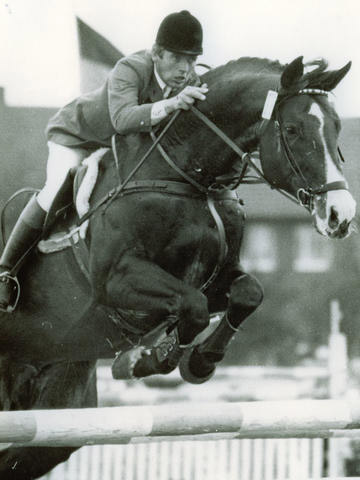
Fritz Legges and Ramiro
Ramiro was one of the first showjumping stallions to actually showjump, and after a successful career with Fritz Legges, he was retired from competitionIn 1974. Ramiro was first sold to Fritz Legges’ sponsor, Rudolf Hirschmann, but he was then acquired by Zangersheide Stud where he became part of Leon Melchior’s two pronged breeding program – Almé and Ramiro.
Peter proudly recounts the exploits of the mare the couple bred:
“We bred Elottie W ourselves, that makes us more proud to be the breeders of such a mare. The qualities she gives to her offspring is in one word – Jumping-power. She gave four 1.60m horses and one approved stallion: Lottie W, 1.60m from Nimmerdor = sport name Jazuli; Jarno W, 1.60m from Notaris; Tennessee W,1.60m from Concorde and Amadeus, 1.60m from Guidam.”
Vindicat W and Peter Charles going for Gold at London
“One of her daughters is Oklahoma II W, she is by the stallion Libero H. She gave two 1.60m jumpers and one of them is Vindicat W, the horse Peter Charles won the team gold on at the London Games in their last ride. After a few months he sold Vindicat W to Jessica Springsteen. Jessica made her entrée in the highest level of show jumping with Vindicat W, and she won with him the American Gold Cup. She also started him several times in the Gloabal Champions Tour.”
“We are most proud because we did breed three generations of an Olympic Gold Medalist. Vindicat W himself, Oklahoma II W and Elottie W. Thinking in generations, and all born in our stables.”
“The selection of the stallions we use is a long process were we try to find the best combination by following the sport, study of bloodlines and of course breeders instinct.
The two mares Elottie W and Oklahoma II W gave in total six 1.60m showjumpers and all in a natural way. We do not use transplantation technics or Ixci.”
“The breeding of horses , showjumpers, started, and still is, a hobby. Let’s say a very intensive hobby. We do have five brood mares and in average three to four foals each year. The broadmares are all out of Oklahoma II W. We do sell our foals and sometimes we keep one. We do not buy any horses, we breed only with the line of Elottie W.”
“We are not from a family of breeders, I come out of a family of veterinarians, and we all had a horse, but not real breeders. For us, it started with horse riding, then I met my wife and we got married. We bought a small house in the countryside with some acres of land – and we thought, why not try breeding? We wanted something else, not something that everyone looked for… Then the stallion Ramiro came to The Netherlands, then Belgium, and that was really something special, so we covered with him, and then came the pearl, Elottie W – the W comes from the first initial of my last name.”
You had a profession away from horses?
“I am retired now, but I was the managing director of a publishing company and my wife was a teacher. We both had heavy jobs, but we had fun with the horse breeding. Now we still have six brood mares and we get three to four foals every year. Sometimes we keep one, the most we sell. We have only mares, nothing to do with stallions.”
Which stallions are you using now?
“What we like now is Grandorado by Eldorado. Every year we use one or two proven stallions and two or more younger stallions, the rising stars.”
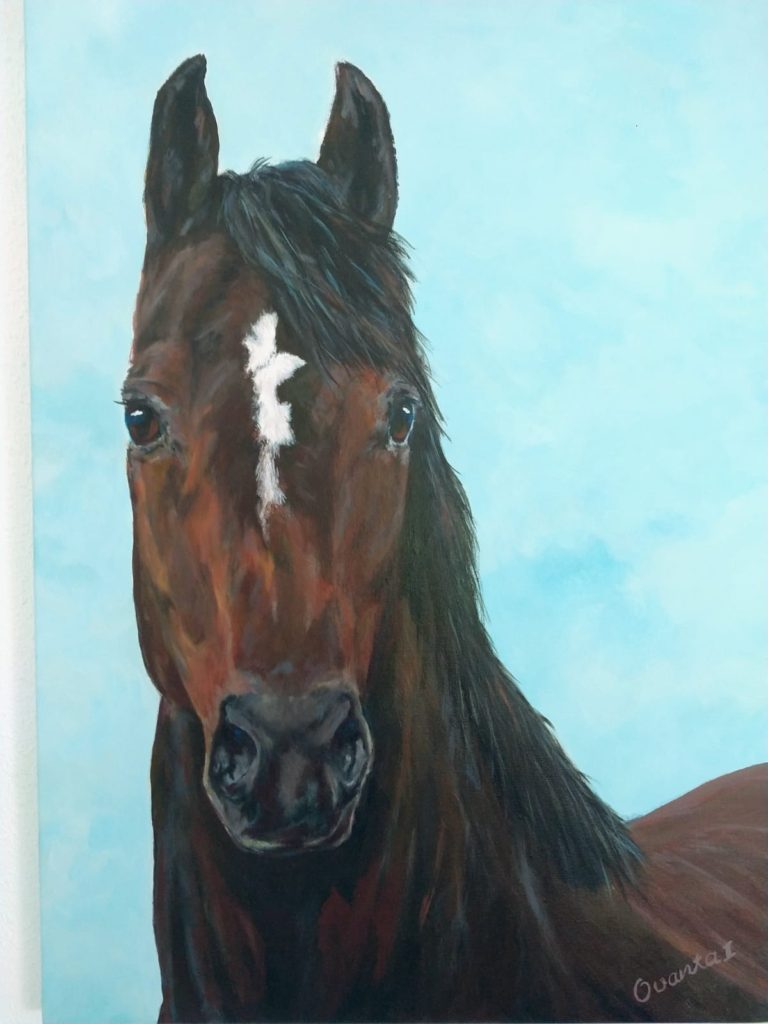
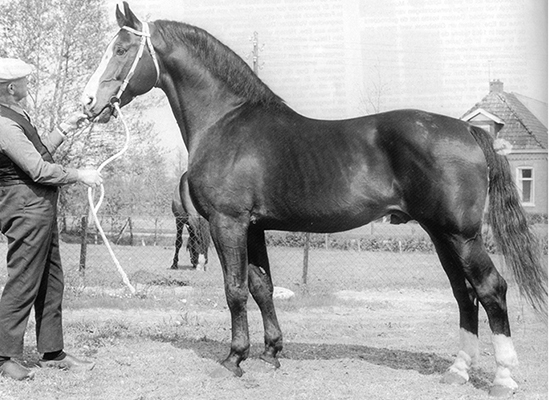
Farn was born in Holstein and descends from the Achill or ‘F’ line that began in 1877. Next to the Ethelbert line, it is the oldest Holsteiner stallion line. Farn himself left only a few offspring in Holstein, and his description in the official Holstein stallion book is less than glowing: ‘Somewhat unharmonious stallion with a lovely head carriage. Built slightly ‘down hill’, good shoulder, flat back, heavily padded loin. Heavy bone, weak pasterns. Good mover.’
However he impressed the visitors from Holland, the NWP committee members who purchased him, hoping his daughters would upgrade Dutch breeding – and he eventually became one of the great stallions of the Dutch Warmbloods.
At the time Farn was brought to Holland, the old agricultural horse was being transformed into the modern sporting model, but the farmers were still wary of the lighter types of Trakehner and Thoroughbred horses that were to play such a vital role – Farn with his Holsteiner heritage and substance was more their sort of horse. However the lighter stallions gained popularity and the breeders in the north lost interest in Farn. Jacob Melissen takes up the story in his1994/95 edition of The Leading Stallions of the Netherlands:
“In the South however, the heavy stallion was received enthusiastically. Southern breeders had been almost overshooting their mark, when trying to generate a fine riding-horse with intensive use of Thoroughbred blood, which had resulted in loss of size, and funny necks. They wanted to restore volume and bone. Farn broke the service records. In 1979 he was offered 236 mares. In 1978 he had been awarded the ‘keur’ predicate, in 1991, he was declared ‘preferent’, seven years after his death. He left eleven approved sons, 123 ‘ster’, 31 ‘keur’, 14 ‘preferent’ and 6 ‘prestatie’ mares.”
Farn was the sire of a number of notable international showjumpers, including Odin N, Black and White, Design and Olympus. Aside from Nimmerdor, Farn sired a number of stallion sons, including: Fanfare, Felix, Garant (ex Flipper), Safari, Telstar and Uddel. By the end of his breeding career, Farn was the sire of 13 approved sons.
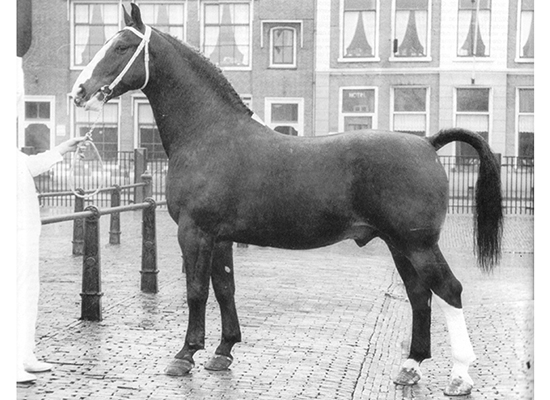
Jacob Melissen in The Leading Stallions of the Netherlands, 1994/95 recounts the historic split in Dutch breeding between the southern based Dutch Improved Agricultural Driving Horse Association (LN), which ‘opted for the Anglo-Norman breed, the invasion of l’Invasion had begun, at the autumn stallion examination of 1947’ and the northern North Netherlands Warmblood Studbook (NWP) which covered the provinces of Groningen, Friesland and Drenthe and traditionally used material from northern Germany.
This northern base produced Sinaeda, another of the foundation sires of the modern Dutch sporthorse.
In 1951, the NWP Stud Book manager purchased 17 three to six year old Holstein mares, which were distributed to NWP members. Of these, the most important was Morgenster – a large and noble beast, standing 1.64 m, with a cannon bone measuring 21.5 cm, and an ample chest that came in just on 200 cm.
Her sire, Gabriel, was a representative of the famed Holstein line of Ethelbert. Ethelbert was ‘a beautiful, elegant refined stallion of totally modern conformation,’ but according to the historian of the Holsteiner breed, Romedio Graf von Thun-Hohenstein, ‘Thanks to his heavy boned, high quality dam, Adophine 6, he passed on more bone and substance than he himself possessed.’
In her new home in Holland, Morgenster produced two approved sons, Senator (by Paladijn) and Sinaeda (by Camillus) – she also produced the mare, Lyda, who returned to Germany where she was the grand dam of the World Cup winner, Anka.
Sinaeda’s sire Camillus was by Cambrinus, by the foundation NWP stallion Kambius. Kambius, born 1936, was one of the more elegant offspring of the Oldenburg stallion Gambo, who came to the Netherlands in 1928 and who was, for the 25 years or so that the heavy Warmblood stood, the most important Groninger stallion.
Camillus was out of Anita, who was by another stallion of Oldenburg breeding, Godin.
Now to modern eyes, Sinaeda might look like an old fashioned ‘clumfer’ but to the conservative Dutch farmers, his progeny were the ultimate modern type and took some getting used to!
According to Jacob Melissen: “His 24.5 cm cannon bone and 215 cm chest were not abnormal at the time. It was his size of 1.68 m, his luxury appearance and remarkably free shoulder action that amazed them. In ten years of service, Sinaeda produced 14 approved sons for the NWP and two for the VLN. The full brothers Senner and Sportman (out of Ritta by Tello) were the most valuable for the breed. Lineages rooted in a Sinaeda, Senner or Sportman daughters are still expensive assets.”
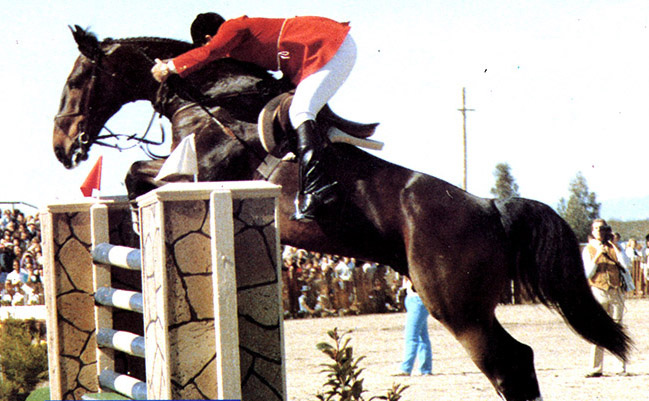
Armand Leone and Jonker
And they could jump. American rider, Armand Leone finished 11th at the 1985 World Cup Finals in Berlin, riding Jonker, a fifteen-year-old gelding by Sportman, out of Tondria by Senator by Camillo.
No Mercy, the silver medallist at the 2005 European Championships, and a competitor at both the Athens and Beijing Games, is by Libero H but out of a mare by Dillenburg – and Dillenburg is out of a mare by Naturel by Lucky Boy out of a mare by the Sinaeda son, Sportman.
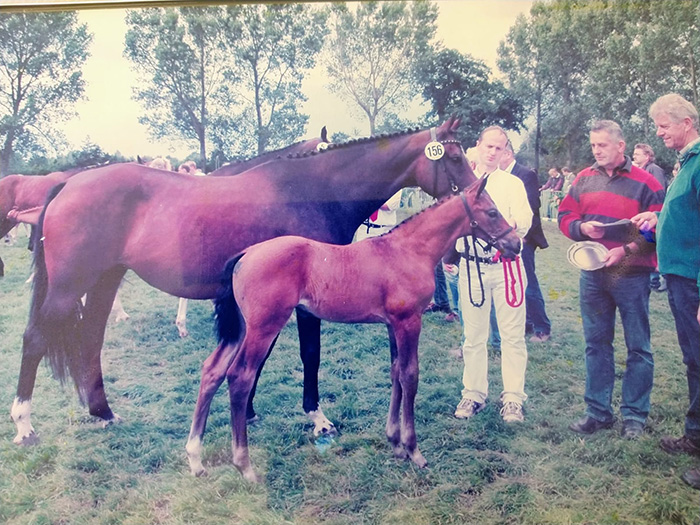
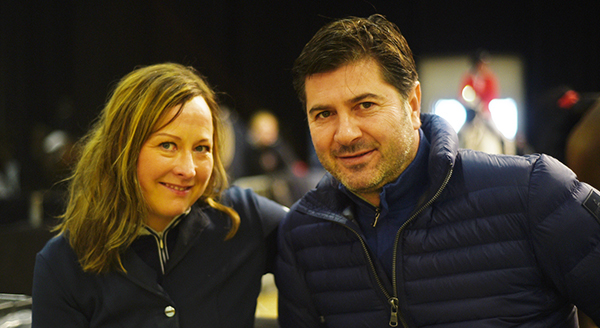
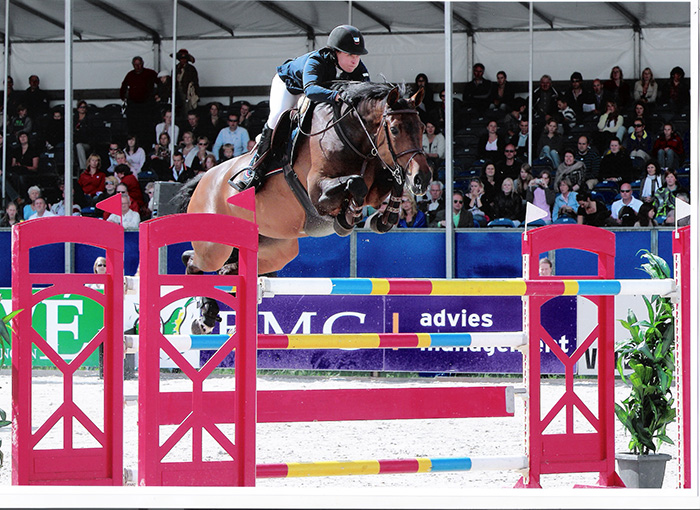
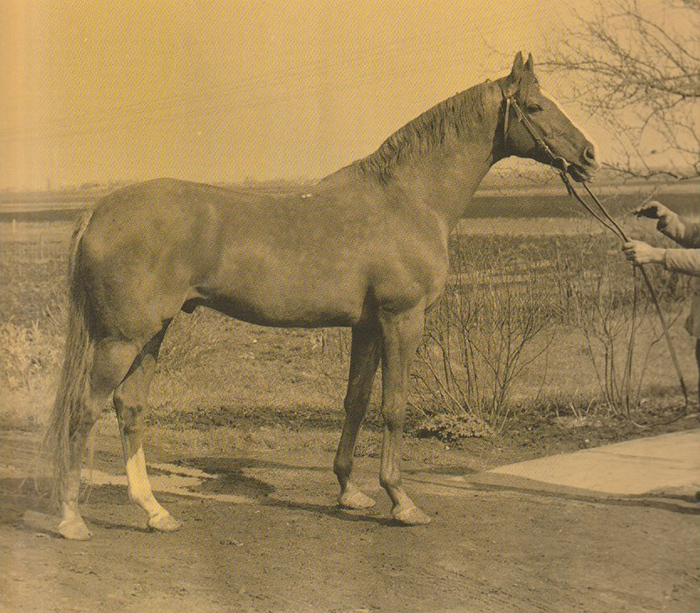
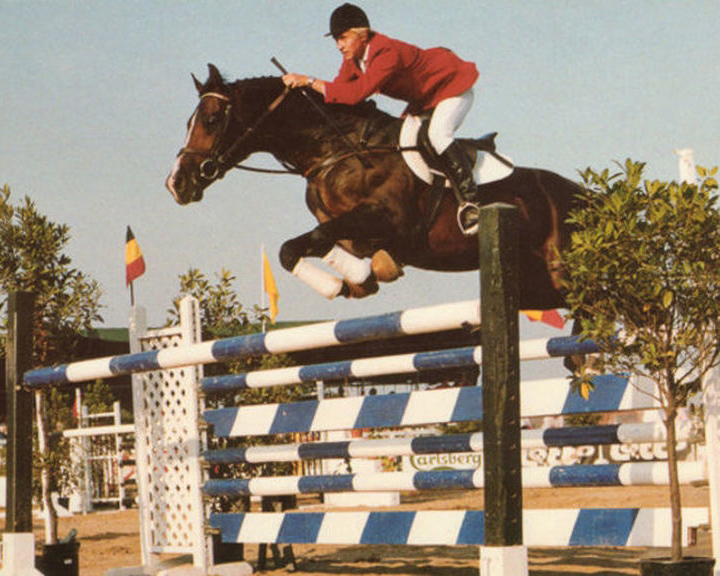
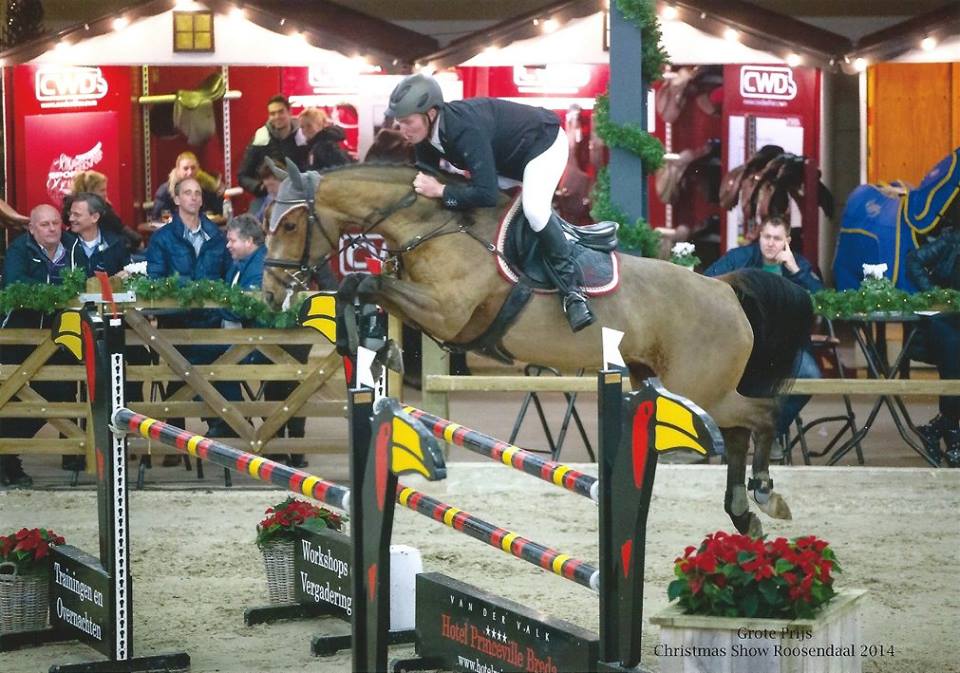
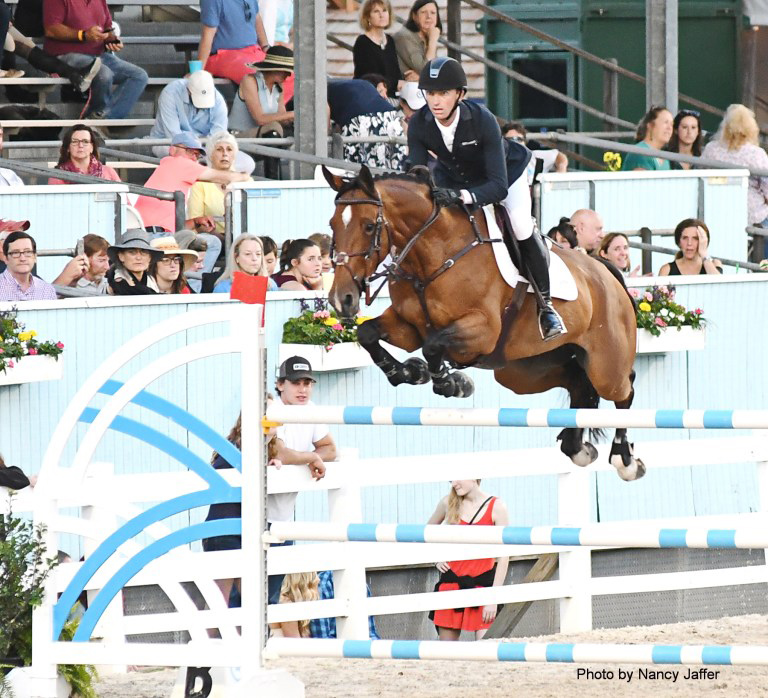
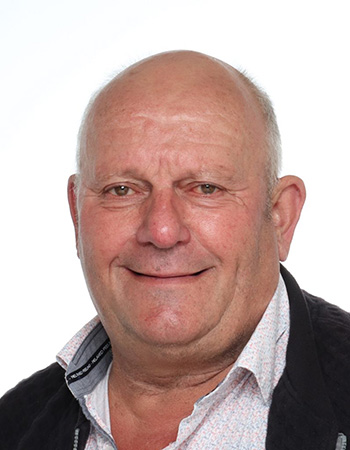
“We started to breed for the hobby. I have competed with harness horses and my daughters mostly showjumping. When they got older I wanted to breed with showjumping horses to follow up the kids ponies. I started breeding with showjumping horses in 1998. We had a pig farm. I had to quit the pig farming because I was allergic to them. In 2006 we went all over to the horses.”
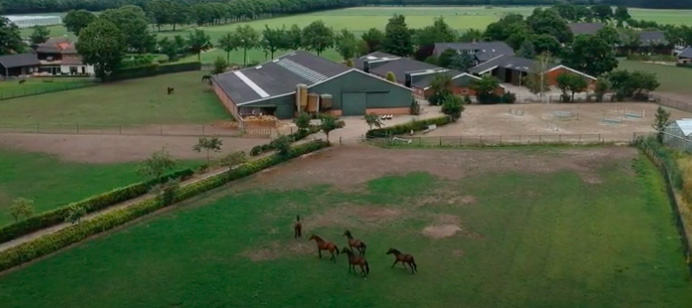
“Now we breed between 10 and 15 foals each year. Only with homebred mares. We want to breed good looking horses who can move with a lot of suppleness. Also we breed mostly with young stallions because we also have to look at the pricetags. I am convinced you move faster forward with young stallions, but they have to go to a great dam line.”
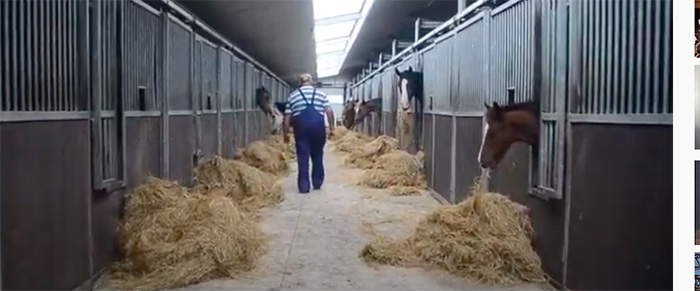
“The harness horse mother of Ulen was a special character. She gave it also to Ulen we can write a book about her special character. Now she is 20 years old. She has a filly from Mattias (Comme il Faut / Catoki) and we have bred her back with Mattias.”
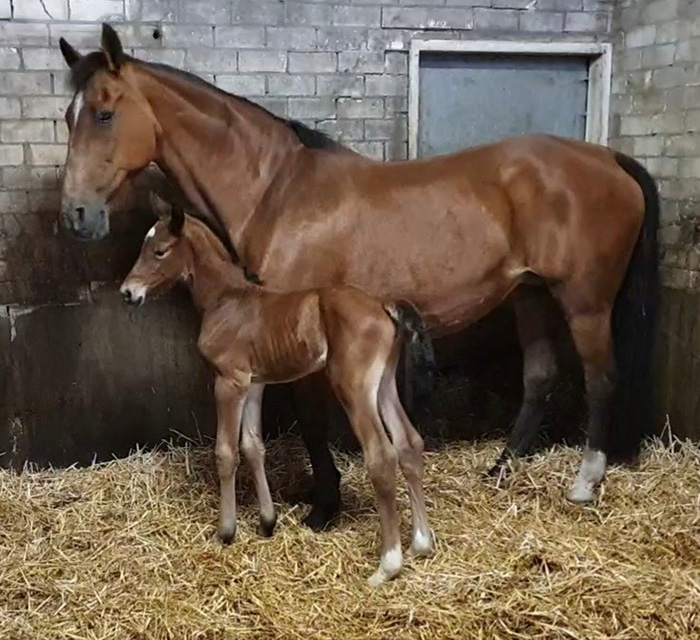
The photo of Ulen with her latest foal, born in April 2021. The foal was just born.
“Huntelaar, the colt that was in seventh place, the Zirocco Blue out of the Triomphe mare, comes from the line of one of the first breeders of jumping horses in Holland, Wim van Dam.”
“He was a good breeder, and he was a farmer and also a rider in the 60’s. He was right from the beginning breeding jumping horses – he was one of the first to do that. He bred the stallion Grandioso, who competed internationally, he also bred the stallion Damiro, he bred a lot of stallions.”
“In the beginning he bought in Germany, K. Torette, a Hanoverian mare. It was a very difficult mare and at that time we had no riding horses in Holland, just horses to work in the fields. Because the Hanoverian was very difficult, he asked the advice of a famous breeder from the Trotters, and he told Wim to take Peter Spencer, a Trotter stallion, and that was the beginning of his dam line, the line that produced Huntelaar!”
Thomas Nissen

At the end of 2020, Dr Thomas Nissen retired after 32 years as the breeding manager of the Holsteiner horse and as the Verband’s director. In 1988, following his final university examination, Dr Nissen became the breeding manager of the Holsteiner Verband, taking over from Gerhard Gramann.
Dr Nissen had been always a promoter of the targeted use of outside stallions, especially English Thoroughbreds and French sires which had great influence on refining and modernization in the Holsteiner horse. Here is his response to my request for the five best mares, and not surprisingly given the key rôle the Holsteiner has played in the development of jumping breeding throughout the world, he came up with a rather larger list, saying ‘take your pick they are all top mares’:
Waage I v. Calypso II – Royal Wash xx (Stamm 4965) u.a. Clinton I + II and Hirtin u.a. mother from Levisto
Ungarin III v. Fernando – Roman (Stamm 4063) u.a. Lambada and Jefferson
Furgund v. Colombo – Herwin (Stamm 7673) u.a. Calando I to V
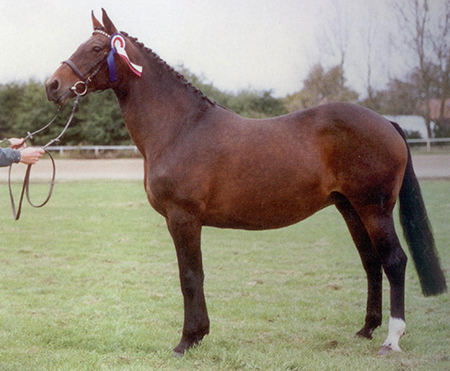
Ramiro was by Raimond, by the Anglo Arab Ramzes out of a mare by the Holsteiner Fanatiker.
Ramzes was foaled in 1937 in Poland, he was by the Belgian bred Thoroughbred – and successful racehorse – Rittersporn, who was a grand-son of the great French Thoroughbred jumping sire, Le Sancy. Ramzes was out of the Shagya Arab mare, Jordi. During the war, Ramzes was stabled at the Polish Stud, Janow Podlaski, where he was a popular riding and carriage horse. With the Russian forces advancing, the Polish studs that were under German occupation were relocated to Germany, and Ramzes was one of the horses that crossed the border. He was purchased by Clemens Freiherr von Nagel, who bred sport horses at his property in Vornholz in Westphalia. He knew Ramzes from his time as Director of the Polish Racot Stud during the war.
Baron von Nagel and Ramzes
The Westfalien studbook was not impressed with Ramzes and he stood at the Holstein Stud in 1951 and 1952, to refine the heavy Warmblood horses of the area. The first foals that were born in Holstein in 1952 were disappointing, they were lightly built, not very big and difficult to sell – many ended in the slaughter house. It was also difficult for his sons to be licensed, their cannon bone circumference of around 20 cm was considered very fine in an era where 24 cm was a more common measurement for stallions.
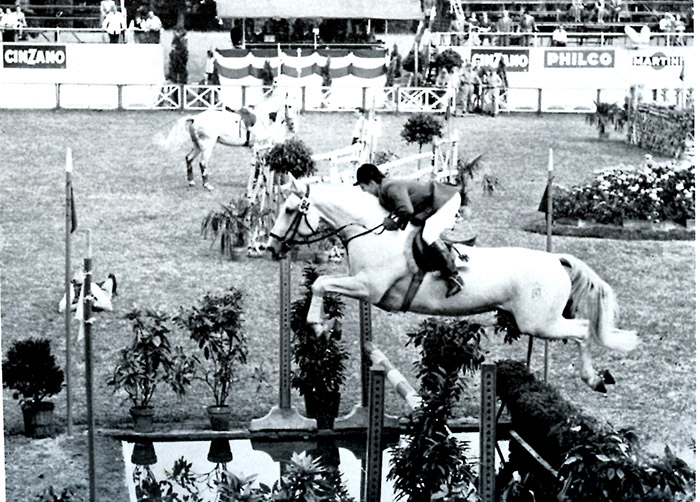
Ramona and Alwin Schockemöhle
But his jumping offspring from that first period in Holstein turned the tables. They were stars: Retina, ridden by Fritz Thiedemann, Romanus with Hans Günther Winkler, Ramzes XIII with Kurt Jarasinkski and Ramona with Alwin Schockemöhle, established Ramzes’ fame in Holstein, and resulted in him standing there for two more seasons, in 1959 and 1960.
Four licensed stallions were bred in the second stud period in Holstein: Roman, Rigoletto, Raimond and Rhenus. Rigoletto was sold to The Netherlands, while Rhenus ended his days in the circus tent. Roman became a good competition horse, and an excellent sire of broodmares. Raimond was a more attractive type than Roman and sired over 120 daughters and eight stallions, but of these, only Ramiro was a success.
While in Holstein, Ramzes bred showjumpers, in Westfalia, he produced dressage horses. The Ramzes son, Remus won individual dressage silver and team gold at the Tokyo Olympics, where he was ridden by Harry Boldt.
Harry Boldt and Remus
Two years later, another son, Mariano, ridden by Josef Neckermann, won the World Dressage Championship, with Remus collecting another silver medal. Mariano won silver at the 1968 Games – and four years later, at the Munich Games, another son, Robin was a member of the German gold medal winning showjumping team.
Based at the Zangersheide Stud, Ramiro was presented with a selection of superbly bred jumping mares. His most famous ‘nick’ was with the foundation mare, Heureka (Hanoverian branded, but all Holsteiner blood, Gaenff / Falerner.) Argentina Z, the Heureka daughter by Almé, produced with Ramiro the stallion sons: Rebel I Z, Rebel II Z, Rebel III Z and Rock Z, none of whom were wildly successful, but their full-sister Ratina Z was a superstar. Ridden by Piet Raymakers and Ludger Beerbaum, she won World Cup Finals, the European Championships, the Grand Prix of Aachen, individual Olympic Silver, double Olympic Team Gold, Team Gold at the WEG, and twice team gold at the European championships.
Ratina – superstar
Bred to Almé, Heureka produced Ahorn Z who was to take the blood of the French champion into Holstein thanks to the visionary Maas J Hell.
Like his grandsire, Ramzes, Ramiro was more a broodmare producer than a stallion maker.
Gofine was out of a mare by one of the Thoroughbred stallions who played a key rôle in transforming the Holstein horse from an agricultural worker to a sports star – Ladykiller.
Ladykiller, 35 stallion sons
Ladykiller was born in England in 1961 but he was no hero on the racetrack, racing three times in two years and rating only a 80.5 kilo handicap – which luckily for him, was 0.5 kilos more than the minimum required for a Thoroughbred stallion to be accepted into German breeding ranks. Before his death in 1979, he sired 35 stallion sons including the twin pillars of Holstein sport horse breeding: Landgraf and Lord. Both, it should be noted, out of mares with a good percentage of Thoroughbred blood – Lord’s dam was a full blood, while Landgraf’s dam was 25% Thoroughbred.
Ladykiller’s breeding features all the usual suspects found on jumping Thoroughbred pedigrees – Blue Peter, Phalaris, Son in Law – the great descendants of Bay Ronald.
According to The Holsteiner Horse: “Gofine was a classically bred mare from the Haseldorfer Marsh. The sires that appear on the dam line were all stud stallions at the Haselau Station… Niko Detlef, who was looking specifically for a Ramiro daughter, bought Gofine was a three-year-old from Max Detjens of Seestermühle… In 20 breeding years Gofine gave birth to 17 foals, all of whom, with the exception of the mare Goldküste by Lord, competed in sport. The mare Ulina by Chicago was a particularly successful jumping horse and Susanne Behring claimed the German Championship title with her in 1992. Ulina’s grand-daughter, Think Twice by Corrado I, achieved many victories and placings on the international jumping circuit with the Dutch rider Leopold van Asten.”
“The offspring of Gofine’s daughters also achieved convincing sporting performances: Fine Kiss by Caletto I out of M-Laureen by Leander took part in the 2002 World Championships in Jerez and at the 2003 European Championship in Doneaueschingen with the Austrian rider, Tatjana Freytag von Loringhoven. The full-brother to Fine Kiss, Calisken, was ridden by the American rider, Candice Schlom-King. Akelei by Landgraf I was the dam of the controversial winner of the stallion licensing in 1992. Cassandro, who unfortunately was not stationed in Holstein. In the year 2000 the Italian rider, Jerry Smit, won the Grand Prix of s’Hertogenbosch with the stallion as well as recording many further victories with him.”
]In 1984, Niko Detlef bred Gofine to Calypso II, and she foaled one of the most influential stallions of modern times – Contender.
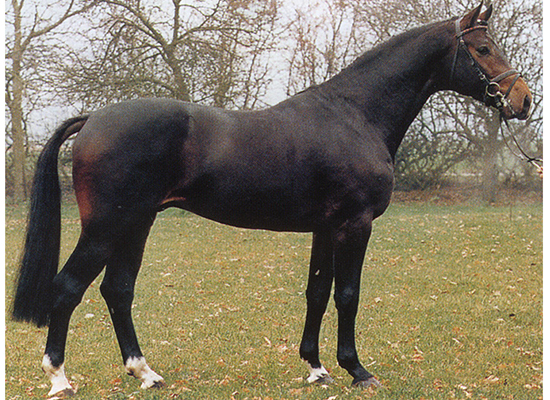
Contender
Four years later, covered by Caletto I, Gofine produced another influential stallion, Cornetto, who was a 1.60 competitor (ninth at the 1999 World Cup final) with Lars Pedersen, although he has not been as influential as a sire as Contender.
Deka
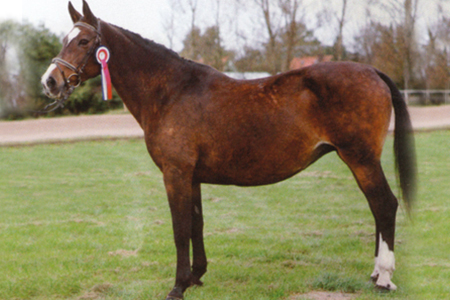
Once again I turn to the authoritative The Holsteiner Horse by Dr Thomas Nissen, Gabriele Pochhammer, Donate von Preußen and Joachim Tietz:
“The mare Deka by Consul, descends from line 730b… This mare is part of Holsteiner breed history. In addition to the two stallions Caletto I and II, she also produced, when paired with Cor de la Bryère, the winning mare of the elite mare show in 1976, Legende, who competed successfully in eventing under the name Cordeka with Herbert Blöcker. Deka was also the dam of the stallion Gonzales by Grandioso, with whom Peter Weinberg and Hugo Simon won numerous advanced jumping classes and who was stationed in Wöhrden after his sports career.
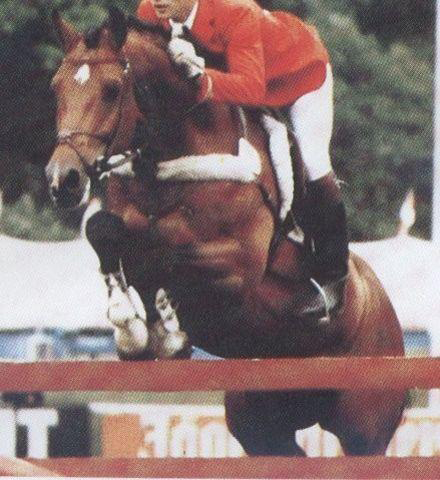
Gonzales – international jumper, sire….
A further Deka daughter, Nathalie (Follywise xx), produced the stallion, Telstar by Nimmerdor in the Netherlands. The stallion Lysander by Landgraf I, had a very promising sporting career ahead of him, but unfortunately this was brought to a premature end due to an injury. He was then licensed in Switzerland, where he was used as a stud stallion for many years. A full-sister to Lysander, Landrätin, won the Young Riders European title under Hauke Luther in 1986 in Reims.”
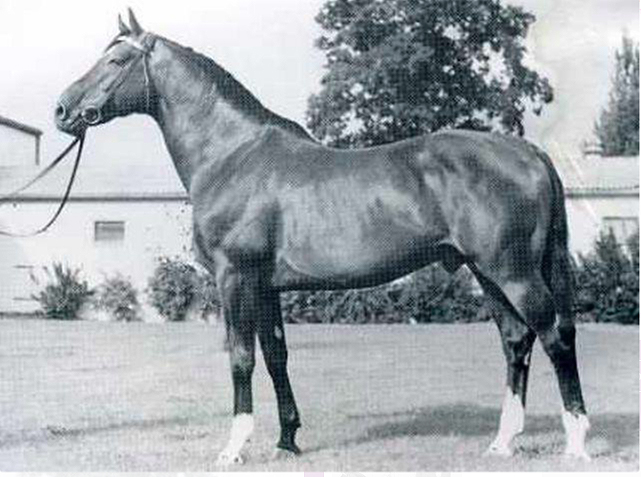
Consul
Deka’s sire Consul is described by that most knowledgeable of breeding commentators, Claus Schridde, as “noble, bay, and the best stallion son of Cottage Son. He typified the horse of a grand exterior and good inner values; he was muscular with a good shoulder formation, had a very impressive profile, and knew exactly how to move. His good foundation was slightly affected by minor displacement at the left front. He was self-confident and filled with temperament. His ridability suffered under tension, and he couldn’t sufficiently be tested in the long run because of a coffin bone fracture. There were times when tension and temper outbreaks were observed with his more colorful offspring. All the same, he is considered to be an absolute positive genetic transmitter and, in today’s day, has become the valued, resounding transmitter of the brawny and fighting spirit.”
The only stallion son of Consul to make a mark was Joost (out of an Anblick xx mare) who was exported to Holland. Consul’s most successful foal was Granat, a dressage star with Christine Stückelberger (World Champion in 1978, and individual gold medallist at the Alternative Olympics in 1980). Granat was out of Salmei, who was one year older than her full sister, Tabelle, the dam of the Calypso brothers.
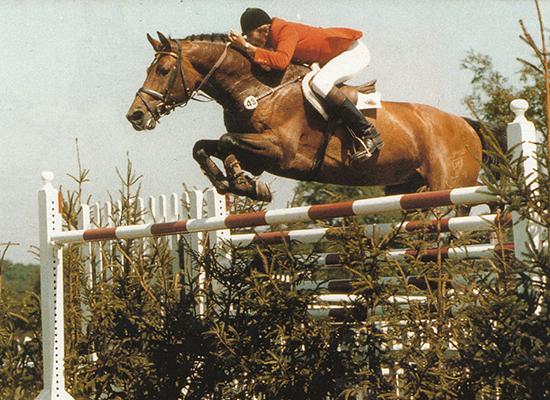
Caletto I
The Caletto brothers continue to have enormous influence over jumping breeding. One of the dominating sires of the moment is Chacco-Blue, whose sire, Chambertin is a grandson of Caletto I. Caletto I is also the sire of Calvaro who was a superstar jumper with a number of riders, competing at the Sydney Games with John Whitaker. Calvaro was not licensed for the Holsteiner breed because his great-grandam Zermola was by the Hanoverian, Sesam I, and therefore he lacked the required five generations of registered dams in Holstein (how times have changed with Holstein licensing stallions from everywhere now…!) Decorated with the obligatory ‘Z’ Calvaro was used at Zangersheide. On the hippomundo database Calvaro is listed with one 1.70 and one 1.65 jumper and a staggering 107 who have competed 1.60.
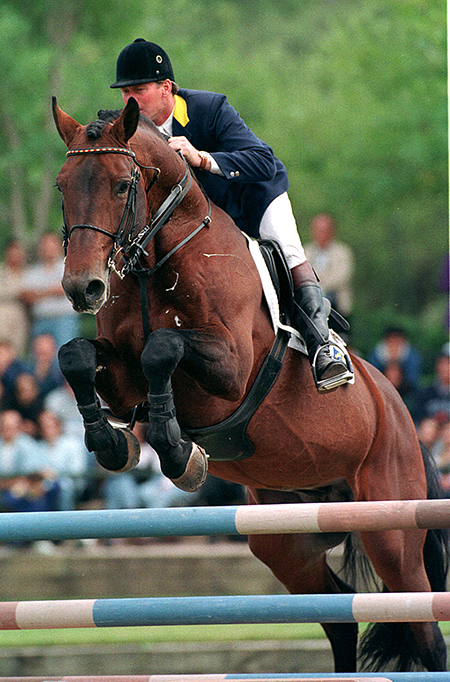
Calvaro and Jos Lansink
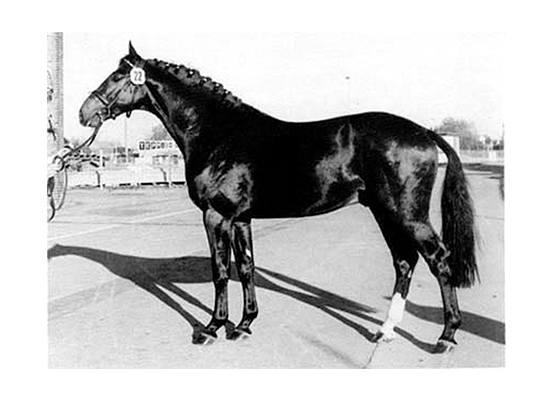
Caletto II
Caletto II has been most influential through his son, Caretino (Metellus) who competed internationally with Bo Kristoffersen. The stallion Casall (Caretino / Lavall I) who after a brilliant career in showjumping at the highest level is proving a very successful sire, is the most prominent carrier of Caletto II’s legacy.
Casall at the 2012 London Olympics
Story continues below the advertisement
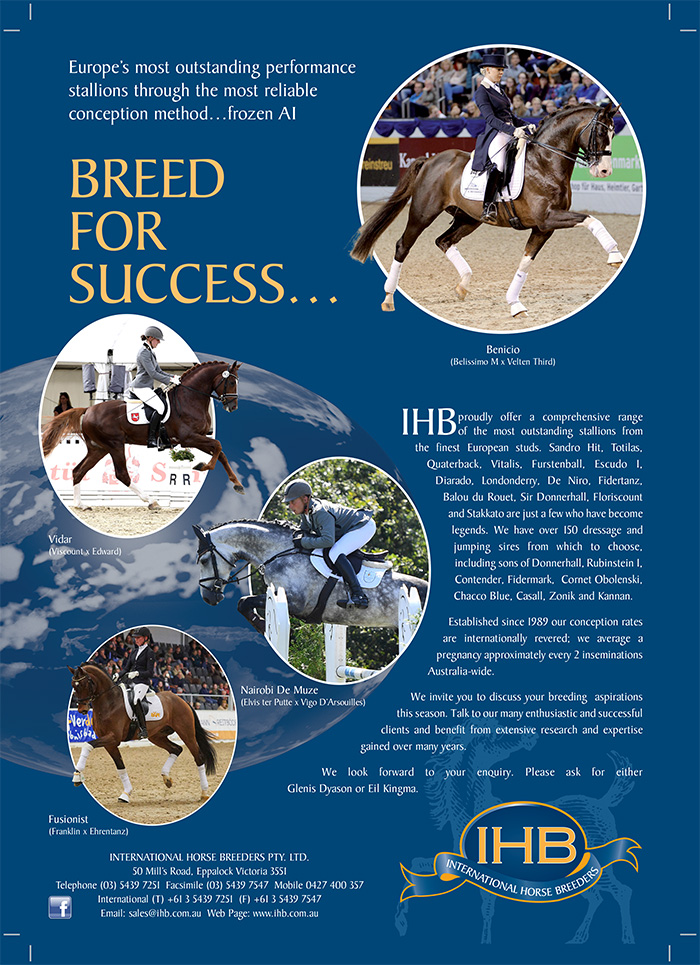
Tabelle
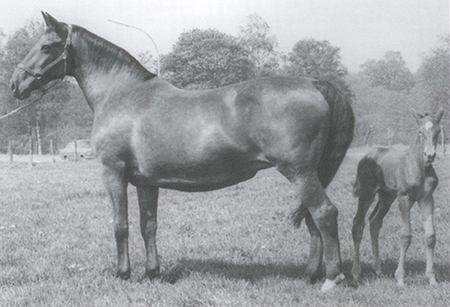
Tabelle by Heißsporn out of a Lorentin mare, is most famous for her five sons by Cor de la Bryère, the Calypso brothers. Here is what The Holsteiner Horse has to say about the mare: “Tabelle was a large, heavy-built, true-to-type Holsteiner dam of first-class descent. The pedigree shows that she was strongly inbred to the top stallion, Tobias, who was Achill’s best son, as well as carrying the blood of Ethelbert via Lorentin/Loretto, who is a guarantee for excellent movement and rideability. Tabelle’s line, 6582 gained world wide fame through the dressage horse, Granat, whose dam is a full-sister to Tabelle… Tabelle’s granddaughter, Tibris by Cor de la Bryère produced the licensed stallion, Askari by Acord II. All the Calypso brothers were different in colour, size, conformation and build. The oldest brothers Calypso I and II achieved the greatest reputations.”
All the Calypso brothers were by the French import, Cor de la Bryère. At the end of the 1960’s the Holsteiner horse had been greatly refined thanks to the introduction of Thoroughbred blood. Of the 37 stallions at stud in Holstein in 1970, 14 were Thoroughbreds and 15 the grandsons of a Thoroughbred.
Again we turn to The Holsteiner Horse: “The Thoroughbred stallions did indeed improve the action potential in canter, the type, leanness and certain riding qualities but this was also sometimes coupled with a loss of leg technique and jumping style.”
The hunt was on for new blood and the Verband looked to Normandy, where many of the successful stallions shared the same genetic heritage at the stallions in Holstein: Ladykiller xx, Cottage Son xx and Marlon xx. The Holstein Commission was given the opportunity to lease the Furioso son, Urioso but while they were doing that deal, Maas J Hell was taken with one of the younger colts, Cor de la Bryère, although the Holstein breeders were initially unimpressed since he was still very foal-like on his arrival.
Cor de la Bryère
Urioso disappears, and ‘Corde’ becomes the single most influential jumping stallion of our times. After he easily won his performance test, Cor de la Bryère found just the mares he needed. Indeed the French breeding authority Bernard le Courtois suggested that it was only the trip to the north that made him a sire:
“Some stallions cross very well in a particular situation. For example, Cor de la Bryère. He was exceptional in the 70s in Holstein because he was a horse that was very quick with the front legs. He did not have the power on the back side, but he was a very electric horse, with the blood of the Thoroughbred, Rantzau, and mixed with the heavy Holsteiner mares, he was fantastic. But when we tried to breed Cor de la Bryère with the French mares, we had rabbits. Cor de la Bryère needed a very strong mare, and we didn’t have this kind of mare in France.”
In The Holsteiner Horse the authors are very complimentary of Calypso I: “A significant stud stallion with a great outline. Plenty of expression, a good neck, nice shoulders and withers, rather straight croup; long-legged with a certain spring of ribs; strong, correct legs with high-set hocks; well pronounced joints; excellent movement. Sturdy despite his aristocracy.”
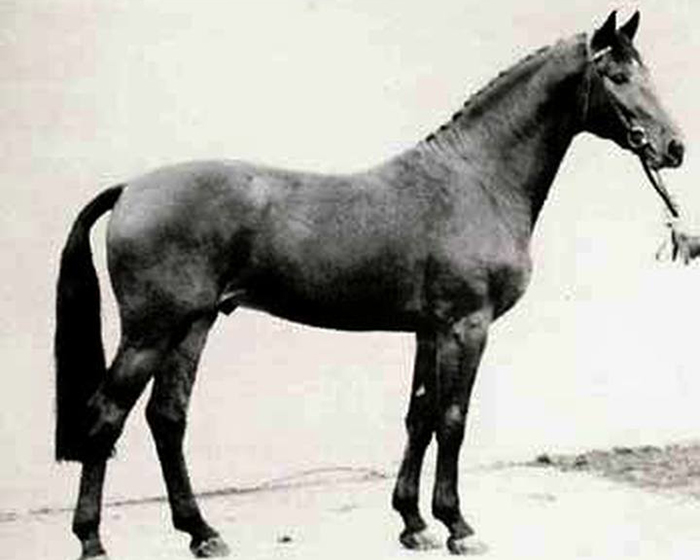
Calypso I
And yet, they also note that the Calypso I sire line has died out in Holstein – and really his only star was a dressage horse, Alexandra Simons-de Ridder’s wonderful Chacomo, a European and Olympic gold medallist.
Chacomo at the 2000 Olympics with Alexandra Simons-De Ridder
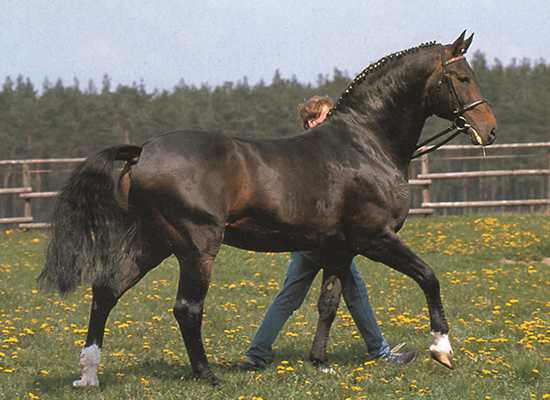
Calypso II
On the other hand, his brother, Calypso II has had enormous influence on the development of the horses of the Hanoverian Verband but was also a significant force in Holstein through his mega-star stallion son, Contender.
Once again, let the Holstein breeding experts, Thomas Nissen, Gabriele Pochhammer, Donate von Preußen and Joachim Tietz celebrate Calypso II’s qualities: “A true-to-type stallion with plenty of character and amazing drive. A rather coarse head with a wide neck and strong jowls, good line in the shoulder, withers and loins… The stallion could have been more elegant. Great own performances in the jumping sport. Calypso II excelled though his exceptional, inborn rideability, which he consistently passed on to his offspring.”
Indeed, Calypso II was one of the first combine a stud career with a competition career, although he was withdrawn from breeding in 1981 after three seasons to take up a full-time career as a showjumper with Michael Rüping. In 1982 he returned to breeding and in 1984 sired his best son, Contender.
Again to quote from The Holsteiner Horse: “The stud career of Calypso, who was not easy to find an appropriate mate for due to his size (175 cm!) can be described as variable. At times he was very popular among the Holsteiner breeders and at others the demand was not so high.”
So like his sire Cor de la Bryère, Calypso II found fame and a home when put to a very different mare population – the Hanoverians.
In 1987, he was leased to the Celle Stud for three years, although Dr Bade had his work cut out to persuade the Hanoverian mare owners to use him: “I think he was the first Holstein stallion we brought into the Hanoverian studbook, now Calypso features on many mother lines, and they all tend to have very good jumping ability and good riding ability. Calypso II is a big very strong and heavy horse – we knew him from the performance test and when he was offered to me from the Holstein Association when he was about ten years old, I said ‘yes’. But when I offered him to the breeders, and I saw their faces! Such legs and such hooves!! I think 900 kilos weight. They said, ‘oh well if you think it is a good idea, we will try with him’. And they had very big success.”
Valeska IV
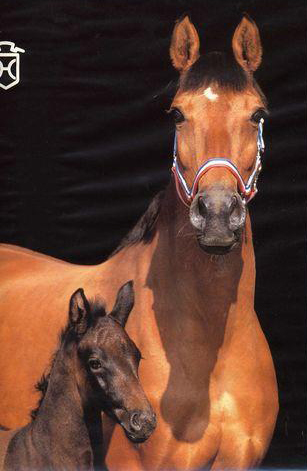
Valeska is by Fernando (Farnese / Consul) who was born in 1976, who stood in Holstein from 1979 to 1986 aside from the year spent in Belgium in 1984. Fernando was just a touch over 17 hands, and Dietrich Rossow noted in the Stallion Book of the Holsteiner Warmblood Breed:
“Almost too big a sire with good stallion expression. Short coupled and supple nevertheless. Heavy neck. Well muscled forequarter, not so behind. Slightly calf kneed. Sickle hocked. Very good mover in trot and canter. Barely adequate walk. Good under saddle. Scope over fences.”
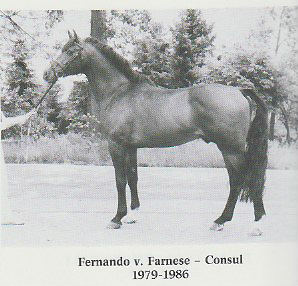
“Produce: Notable broodmare sire. Offspring are solid horses with jumping ability and good movers. Could show a little more expression and be a little more lively. Some fabulous State Premium mares. Must have mares with a lot of Thoroughbred blood. 2 approved sons, 57 approved daughters.”
Valeska had blood enough, 46.88% to be precise, as her dam Option was by the half-blood, Lord (Ladykiller xx). Option’s grand-dam, Ruth contributed more ‘blood’ since she was by Harras by the Anglo Arab, Harrar.
Valeska was one of the important mares in the exceptional broodmare band of Hobe Bernhard.
Hobe and Valeska
Breeding on the Bernhard farm had started with heavy horses, but after the Second World War, the attention turned to horses for the growing market of jumping competitors, but always as part of the overall farm economy.
“I use stallions that produce horses that if I don’t sell the offspring as foals, they will make nice rideable showjumpers.”
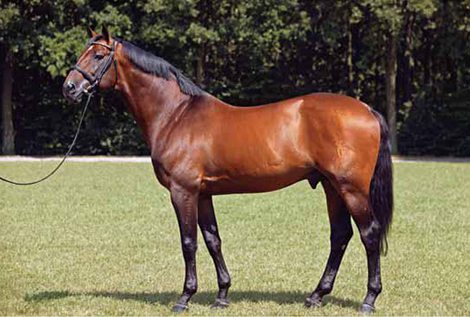
Coriano
The most famous horse he has produced is Coriano. The stallion is by Corrado out of Hobe’s Lord / Ramiro mare, Option, and he stood at the Holsteiner Verband Stallion Barn at Elmshorn. In 1993 Coriano passed his stallion performance test in Marbach with scores of 10.0 for character, performance ability and aptitude for jumping. He was an international star with Denmark’s Bo Kristoffersen and then won the 2003 Belgian Junior Championship with the Belgian Judy Ann Melchior before being ridden by her with success on the international circuit.
Hobe’s Lord mare, Option, one of the jewels of his farm…
Valeska IV is the ‘mother’ of the stud, having produced a staggering total of 18 foals in her 24 years – including three licensed stallions, Corofino I & II and the licensing winner, Camiros. The mare herself is a half sister to the very famous, Coriano. Another stallion son, Corofino 16, re-christened Damascus 1st, jumped 1.50 with Roger Yves-Bost.
Hobe and Valeska
Valeska’s pedigree is sort of a mini-history of Holstein jumping breeding. She is by Fernando (by Farnese out of a Consul mare) out of Option (by Lord out of a Ramiro mare).
Aside from her stallion sons, Valeska has been a very good producer of brood mares. Her daughter, H-Corofina (Corrado) is the dam of the 1.50 jumper, Questro (Quidam de Revel) and the licensed stallions, Counter (Calido) approved for Holstein, and Quantor (Quidam de Revel) approved AES and SF.
Another daughter, La Corofina (Corrado) foaled ABC Panama (Caribik) who jumps 1.50, Barbou du Ruet (Baloubet du Rouet) 1.55 and Zara 104 (Baloubet du Rouet) who competes at 1.60 level.
Folia
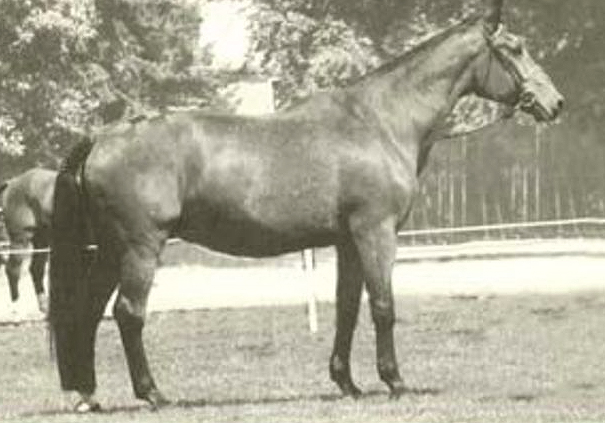
In 1960, a wayward mare, Rappel was saved from the knackery by Rheder Thormählen, a breeder from a family who had lived on the Kollmaran marsh for 500 years, where they had been involved in the breeding, riding and selling of horses throughout that time. Rappel, who was by Heinzelmann, had made herself unpopular by jumping out of paddocks, and was still jumping at the age of 23 when she won an elementary showjumping class!
Herr Thormählen did not know it at the time but Rappel had an earlier foal, by the influential Arabian bred, Ramzes, who, as Romanus, had won the Grand Prix of Rome with Hans Günter Winkler.
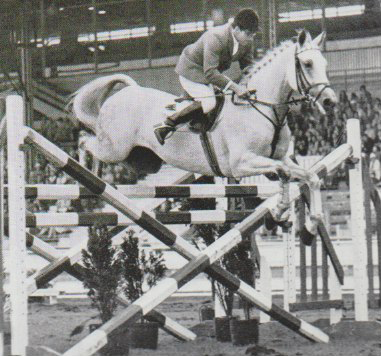
Romanus and H G Winkler take silver at the 1962 Europeans
Ten years later, Rappel presented Thormählen with another Ramzes foal, this time a filly, Vase – who went on to be champion mare of Holstein. Vase’s full-brother, Roman topped the German showjumping standings for two years running with Hans-Gunter Winkler. Vase’s daughter, Folia, by Maximus (himself an Advanced showjumper), foaled five stallions: Latus I and II (both by Landgraf), and then Capitol. Capital was by Capitano who is by Corporal out of Retina (also by Ramzes). Retina won the Hamburg Derby with Fritz Thiedemann in the saddle.
Capitano, sire of Capitol but who was his sire?
The query as to Capitol’s antecedents has been raised in an article by Gabrielle Mohmann-Pochhammer (the editor of the German magazine, St Georg) in an article in Horse International (No 5, 2001).
Retina, the dam of Capitano
According to Ms Pochhammer while it is recorded that Capitol’s sire Capitano, is out of Retina, and by Corporal, this may not be the case: “On paper the bay Corporal was the sire of Capitano, but even when the stallion was still alive, doubts about the pedigree kept surfacing. This was because Capitano was a grey who dominantly passed on his colour, and is said to have produced only a few chestnut foals. But homozygous greys usually have two greys as parents. At the time in question, a young grey stallion, Vase’s son, Grand Vicar, a brother of Folia, had been frolicking with Retina in the paddock. If the suspicions, which were never substantiated by appropriate genetic tests, are true, then Capitol would be the product of intensive in-breeding, and Ramzes’ blood would be in his genes via Retina and Vase, and a third time via his grand-sire. But we will never be sure about that…”
According to Harm Thormälen, whose family bred Capitol:
“The Capitol horses have scope – scope and easy to handle. Amateurs can ride the Capitol horses. Sometimes they are not ‘blood’ enough, they need blood. In his last years Capitol was only allowed to breed to mares with Thoroughbred blood. The mare sire had to be Thoroughbred, or otherwise Cor de la Bryère – so Capitol got very good mares. It was top management by the Holsteiner Verband, with very good results in the sport. The children of Capitol have won the most money in the sport of any stallion in the world.”
They have been breeding horses at the farm of the family Thormählen for 440 years. His father, Rheder Thormählen started breeding jumping horses after the Second World War, and Harm took over the yard in 1973. This has been the birthplace of many famous horses such as Capitol and Cera, and Harm Thormählen is regarded as one of the smartest jumping breeders in the world today.
 “Two years ago we had a party – it was 440 years that this farm was in the family – always with horses,” Harm tells me. “Here they used to work with horses always. They had to work very hard, the ground here is very special. If you try to plough one hour too late, then the ground is hard like cement. The horses had to work very hard.”
“Two years ago we had a party – it was 440 years that this farm was in the family – always with horses,” Harm tells me. “Here they used to work with horses always. They had to work very hard, the ground here is very special. If you try to plough one hour too late, then the ground is hard like cement. The horses had to work very hard.”
“In 1950 came the first tractor, and the mares went to the butcher – they no longer needed horses! But my father, Rheder Thormählen was interested in horses – after the war he was an international showjumper, and he dealt a lot of horses, this was his hobby. I don’t remember it myself, but Alwyn Schockemöhle told me, my father was one of the biggest dealers in Europe. His hobby was to buy international showjumpers, famous mares who were Grand Prix showjumpers, and 40/50 years later, comes the result from those famous mares. Even at that time, those mares were very expensive. We only breed for jumping on this farm.”
Folia produced many stallion sons including the three Capitols (though only the first was really influential) and the Latus brothers (by Landgraf). Her daughter U-Capitol (Capitol’s full sister) had six stallion sons, the most successful of which was the 1.55 competitor, Quite Capitol by Quidam de Revel.
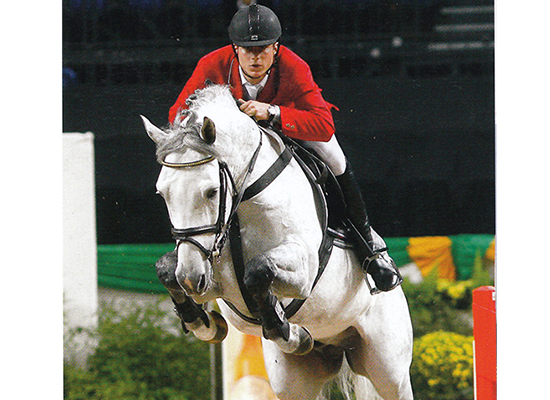
Quite Capitol
U-Capitola is also the dam of Birte II, the dam of Quite Easy I and II by Quidam de Revel. Another stallion son of Birte II is Casir Ask, a 1.60 jumper with Lars Pedersen. Birte II’s daughter, L-Texas (Tin Rocco) produced two 1.50 competitors, Cameron de Hus (Contendro I) and Uxelhus (Lamm de Fetan). Another Birte daughter, Pretty Easy (Quidam de Revel) is the dam of For Europe (For Pleasure), 1.45; Balotan (Baloubet de Rouet), 1.50 and Oak Groves Celebrity (Cassini II) who jumped 1.60.
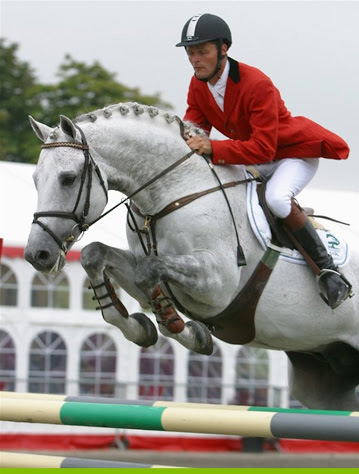
Casir Ask
Arnaud Evain
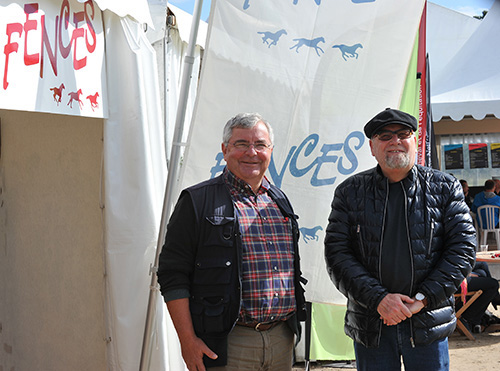
My final expert is another old friend and mentor, Arnaud Evain. Arnaud decided early he really wasn’t good enough to be a top line showjumping rider, and turned his attention to breeding, and in particular, selling semen at a time when there was an emerging market not just for chilled semen but also frozen. It offered the potential to spot young talent, and buy semen when it was not so expensive and freeze it until the time was right. Arnaud was also one of the founders of the Fences Auction, and is currently the mover and shaker behind the French breeding group, GFC.
These are Arnaud’s nominations:
Five top mares are probably :
Tanagra ( by Furioso) dam of Jalisco, Danoso, Escurial and Geisha, all jumping 1.60m and Qanagra, dam of 4 x 1.60 winners
Gemini (by Tanael) dam of Narcos, Mazarin, Larry and Quatsous, all jumping 1.60m and many champions in the rest of the family
Opaline des Pins ( by Garitchou) dam of the Olympics Jus de Pomme, Quintus and Tresor d’Opaline, and the 1.60m Shogoun and Richebourg
Sophie du Château ( by Galoubet A) dam of Itot du Château, Sultan, Kolea, Letoile, Oui M’Sieu, all at 1.60 and 5 more at 1.50m
Fragance de Chalus (by Jalisco) dam of Mylord Carthago, Norton d’Eole, Bamako de Muze, Jolly Mome, Jolly Girl Kervec all at 1.60m and many others…
And as might be expected from the man behind the authoritative work, Encyclopédie des Ligneés Maternelles du Cheval de Sport Français, Arnaud also nominated his top damlines:
If you want to talk about damlines, including all progeny on 6 or 7 generations and considerating the criterias of : * Champions of yesterday and today and * Number of different breeding farms in France using this dam line successfully my choice would be the damlines 20, 33, 61 ,105 and 106.
20 is the line of Flambeau C
33 is the damline of Narcotique (CSIO GR with P Durand) and all « du plessis » breeding,amongst many others
61 ( probabely the largest) is the damline of Quickly de Kreisker, Baladine du Mesnil, First de Launay and many 1.60 winners
105 is the damline of Itot du Château
106 is the damline of Mylord Carthago
Tanagra
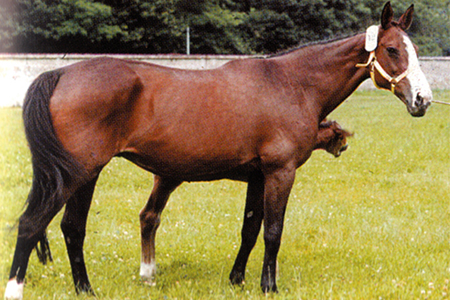
Tanagra is by the Thoroughbred, Furioso – perhaps the most influential Thoroughbred stallion in the history of jumping breeding. She was bred by George Sabras who was a farmer and breeder in the western part of Normandy (where they produce the Percheron horses) and he liked the horses with blood…
That’s why he choose to cross Délicieuse with Furioso to produce Tanagra.
In 1946, a National Stud Commission was formed in France to buy foreign stallions to increase the French gene pool. According to Jean Delannoy, in his definitive article on Furioso in Annuaire de l’Étalon Sport Français, 1992, the talents of the team were well matched “The Commission was composed of the general inspectors Mr Richard and Mr Vincent and the Stud Farm officer and founder of UNIC Mr Maurice O’Neill. Richard’s speciality was the conformation and gaits of a good horse, Vincent was an expert on Thoroughbreds, and O’Neill, with Irish horses being popular, was in a particularly strong position for a search in England.”
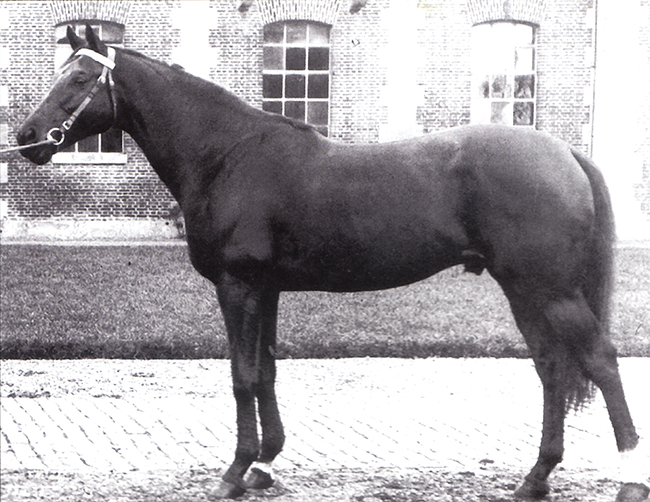
Furioso
They were shown Furioso. Admittedly his career did not greatly impress; he was now seven, and had raced 21 times and only came close to winning three times. Still “his dignity, harmonious length and general conformation were enough to seduce. Mr O’Neill, who had never ridden such a well balanced horse, forgave him his slightly knock kneed forelegs, his somewhat tight hock and his long legged conformation. He was purchased for 800 pounds from Mr Blunt.”
The recently appointed director of the Haras de Pin, the Viscount of Poncins claimed him for his breeding area. He “had been won over by this big brown bay, thick limbed, who walked like a lord with a magnificent pace, very energetic and showing a great deal of amplitude, his tail swinging at each step. His trot and gallop were good but not exceptional. He had never jumped either fence or bar in England, and, to the great surprise of onlookers, was never to jump in France. Although very energetic and full of life, he was docile in his stall and of good temperament.”
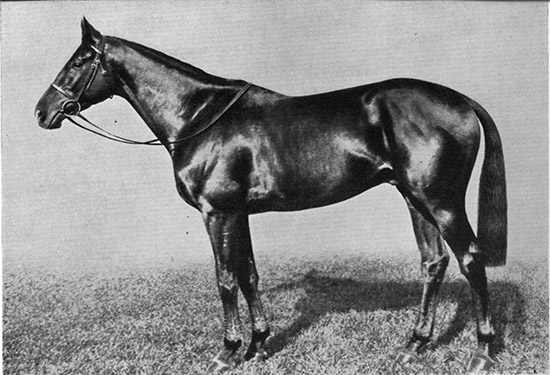
Precipitation
Still Furioso was exceedingly well bred. His sire Precipitation had a fine career winning seven races ranging from the 4000 metre Ascot Gold Cup to the King Edward Stakes of 2400 metres. As a stallion he was a success, eleven times amongst the 20 best sires of winners in England, and once in France. He was seven times in the top 20 sires of mares in England.
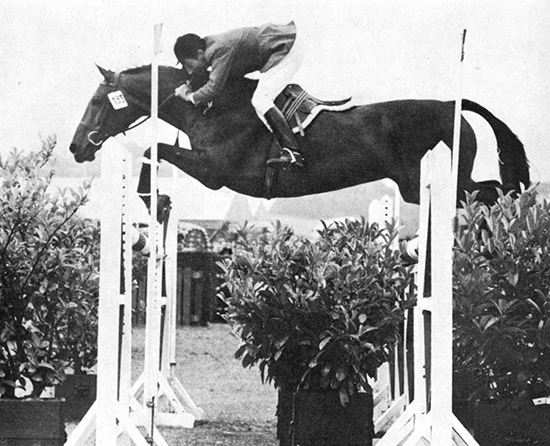
Lutteur B
By 1954, Furioso was topping the list of sires of winners in France thanks to jumpers like Virtuoso and Dolly II. He held the position up until 1961 – by then he was 22 years old. He was third behind Foudroyant II and Nithard in 1962, and second behind Foudroyant II in 1963 but was number one again in 1964 and held the spot until 1969, when he had been dead two years. He was a prolific sire of Olympic horses, including the gold medallist at Tokyo, Lutteur B and Pomone B who carried d’Oriola to victory at the World Championship in Buenos Airies in 1956, when she was only seven years old.
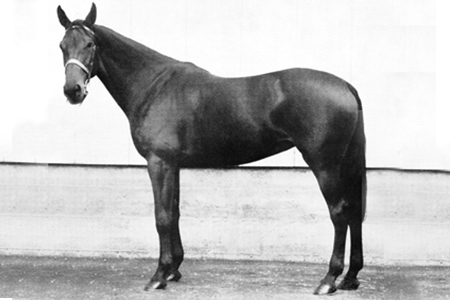
Pomone B
Delannoy sums up their qualities: “These horses, full of personality, were sometimes difficult, particularly the mares, but were wonderful as soon as they felt confident. Slightly soft, they did not enjoy pain, they were very respectful and would sometimes misbehave or even stop if not ridden in a firm and friendly manner. Some good riders complained of them being amoral but they were not belligerent. Galloping with great balance, swinging on each big rounded stride (rather like the gallop of Narcos, grandson to Ma Pomme) they hardly ever needed to be corrected, although they did not mind it (except for a few hot blooded mares). The jump was often rounded, the horse locked onto the trajectory.”
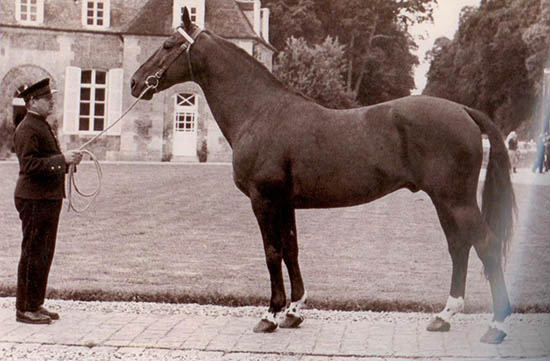
Mexico
As a sire of sires, Furioso was perhaps not so successful. Certainly his son, Mexico, out the exceptional mare, Dame de Ranville was regarded as a gem. Mexico was a good sire of international eventers, and his son, Le Mexico (out of Pêche Melba who has two crosses of Foudroyant II) was instrumental in the development of the modern Dutch Warmblood. Dame de Ranville also produced Mexico’s full-brother, Furioso II who played such an vital rôle in German breeding. The blood of Furioso has had a new lease of life recently through the success of his great grandson, Kannan, a Dutch import…
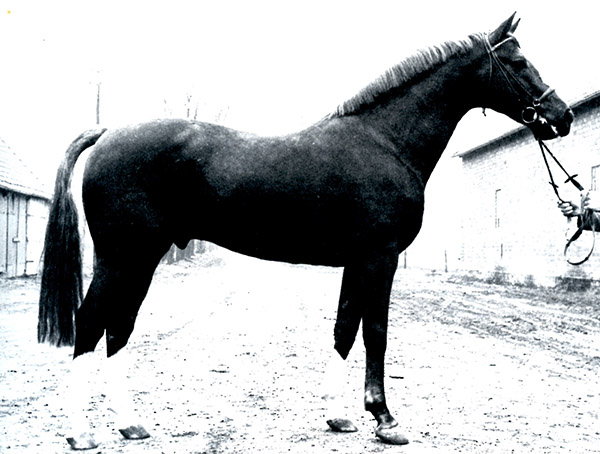
Furioso II
Perhaps Furioso’s crucial influence has been as a mare sire: Ma Pomme, the full sister to Pomone B, produced a string of nation and international jumpers and importantly, when bred to the Ibrahim son, Quastor, the stallion Fair Play III, the sire of Narcos II. Furioso’s daughter, Tanagra (out of Délicieuse by Jus de Pomme) produced an extraordinary number of competitors, stallions and broodmares, the most important of which was Jalisco B. Artichaut, the dam sire of Nabab de Rêve, is out of a Furioso mare, as is Qredo de Paulstra who founded something of a dressage dynasty in Oldenburg through his son, Quattro B, the grand sire of the popular Quaterback.
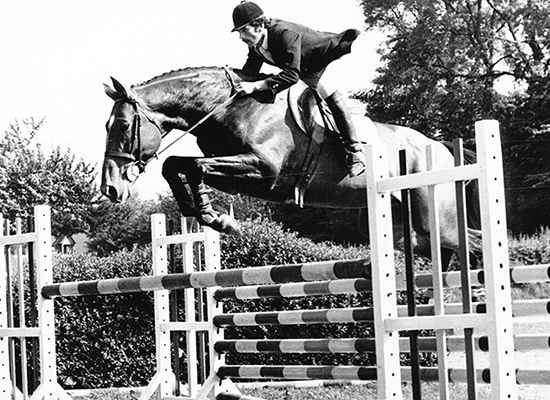
Jalisco B
Tanagra is out of Delicieuse who was by Jus de Pomme, by another of the important Thoroughbred influences in the development of the French jumper, Orange Peel.
Although Tanagra is best known as the dam of Almé’s most important son, Jalisco, she also foaled a series of fillies that became great broodmares. Tanagra’s fifth foal, Geisha N (Night and Day xx) produced three lesser stallions: Kissovo (Starter), Urous (Elf III) and Veneur du Defey (Grand Veneur) before she produced a stallion who was also a 1.60 winner and a stalwart of the French jumping team – Ephebe For Ever (Galoubet A).
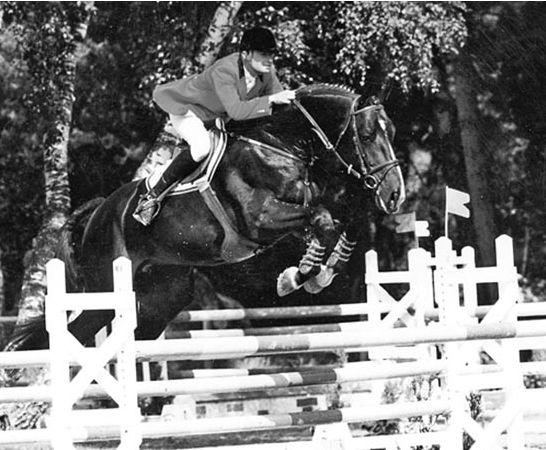
Ephebe For Ever
Ephebe Forever was licensed in the Selle Français and Holstein books, and was a successful sire in his own right.
In 1975, Tanagra bred to Almé produced Jalisco B, who was not only a competition star, but also a very important stallion.
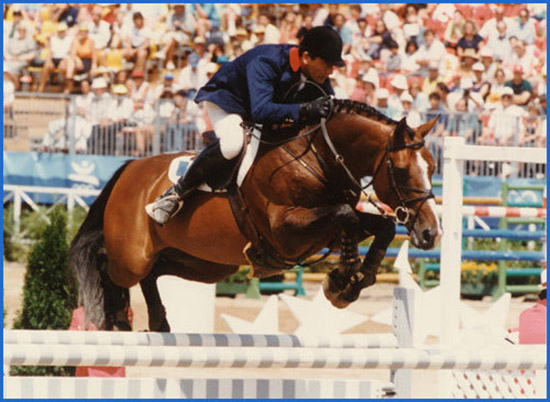
Quidam de Revel
In 1982, Jalisco sired two stallion stars – Quidam de Revel (Nankin) 4th at Barcelona who went on to be for a while the world’s most expensive – and successful – stallion, and the 1990 World Champion, Quito de Baussy (Prince du Cy).
By 1995, Jalisco was number one on the WBFSH rankings with eight horses competing at the highest international level. At the 1996 Olympic Games, he was represented by Rochet M, Surcouf de Revel, Vert et Rouge and Revoulino.
According to Arnaud Evain: “What Jalisco brought was the scope – scope and long strides. Behind his very strong body there was a lot of blood, but you must have a lot of respect and passion with the Jaliscos because they are generally not very spectacular when they are four. When you combine the blood of Jalisco with the blood Nankin or his son, Uriel, that is often very successful. Quidam de Revel, is Jalisco / Nankin, Dollar du Murier is Jalisco / Uriel. You find that quite often.”
In 1982, bred to Galoubet A, Tanagra foaled Quanagra, another very superior brood mare. In 1987, she produced Viking du Tillard (Narcos II), 1.60 with Herve Godignon, in 1990, Cabdullah du Tillard (Abdullah) who jumped 1.50. And if you think you are detecting the influence of Arnaud Evain, who had battled hard to import frozen semen to France, you are right.
In 2000, Quanagra produced three foals, all of which jumped 1.50m or better: Millennium du Tillard (Voltaire – who Arnaud successfully argued would improve dressage breeding in France and was therefore allowed to import Voltaire semen), 1.60m with Patrick Lam, Morgan du Tillard (Narcos II), 1.50 with Alessandro Carcassi, and the superstar, Mic Mac du Tillard (Cruising), six wins and 21 placings at 1.60 with Angelica Augustsson, then major success with Germany’s David Will.
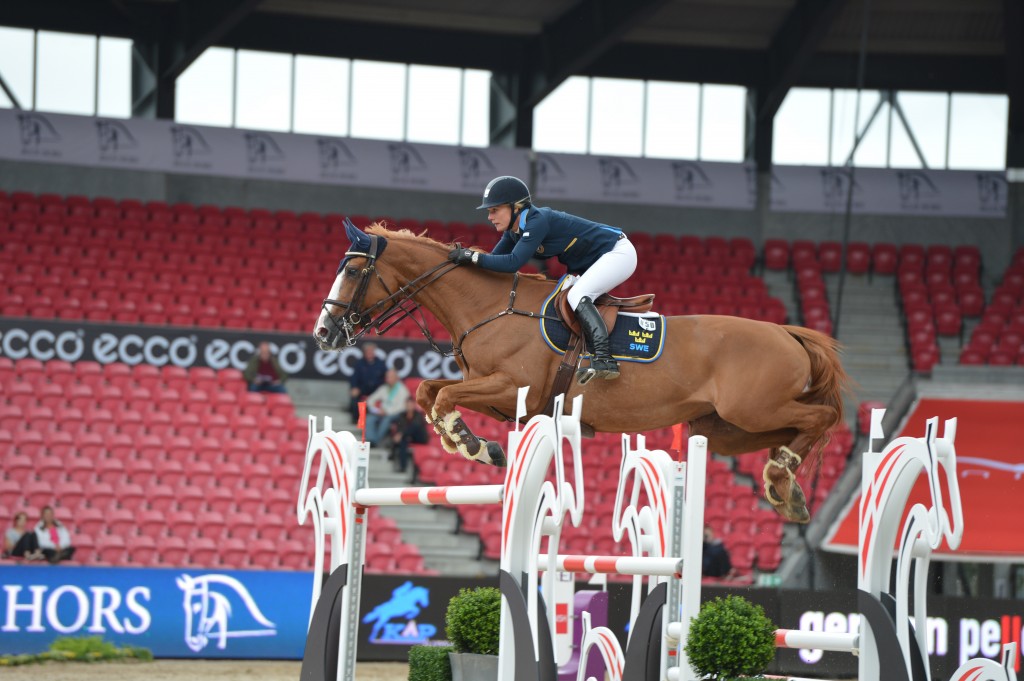
Mic Mac du Tillard
Gemini
Gemini is by the Ibrahim son, Tanaël (Centaure de Bois).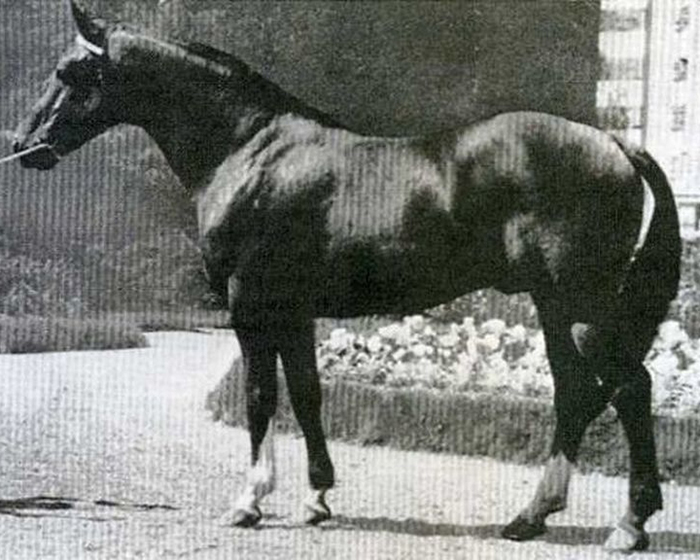
Tanaël
Ibrahim is again one of those stallions who were shunned at first, only to become hugely popular far too late – in his case, after his death. Born in 1952, Ibrahim is out of Vaillante, and by The Last Orange (born 1941), another sire initially shunned by breeders.
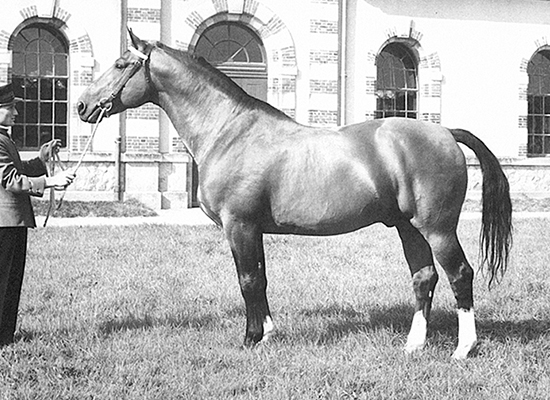
Ibrahim
Once again, we find the hand of the master breeder, Alfred Lefevre at work. In his tribute to Ibrahim in Breeding News, September, 1999, Pascal Renauldon tells the story:
“Who else but the almost legendary horse trader Alfred Lefevre was the first to discover Ibrahim? But even this man, who could smell a good horse a mile away, had no idea that the animal would become one of the greatest sires in the history of horse breeding when be bought the colt from his breeder René Haize for 500 francs ($80). The transaction took place at the local in-hand show in Caen, where Ibrahim’s dam Vaillante claimed a ribbon.”
“Ibrahim grazed in the green Normandy pastures, at Alfred Lefevre’s son-in-law’s, before starting his series of purchase inspections at in-hand shows, where he claimed three first places and the title of champion of his age-group in 1956. Alfred Lefevre then sold him for 8,000 (old) francs ($1300) to the State stud St-Lô, and Ibrahim was stationed at Sartilly. “He is unquestionably the best stallion I ever sold,” admitted Alfred Lefevre, when I interviewed him in 1986.”
“Ibrahim, however, was not liked by the Sartilly breeders. His first crop of three-year olds, born in 1957, mainly attracted foreign buyers because of their type. In that same year, 1960, two of his sons were exported to Switzerland, and a two-year old son to Belgium. But that was not enough to convince the stubborn Normandy breeders, who only considered Ibrahim fit for their cob mares (Normandy draft) and, in Normandy that was a sign that a stallion was in disgrace. Ibrahim covered 40 cobs between 1956 and 1966 and, in 1961, his lack of popularity had reached the stage that he could no longer produce any sport horses at all.”
In 1965, Norvale, a mare from his first crop started to compete internationally with Jean-Michel Gaud, followed soon by Petit Prince C with Alain Navet and Quo Vadis with Michel Raoul-Duval.
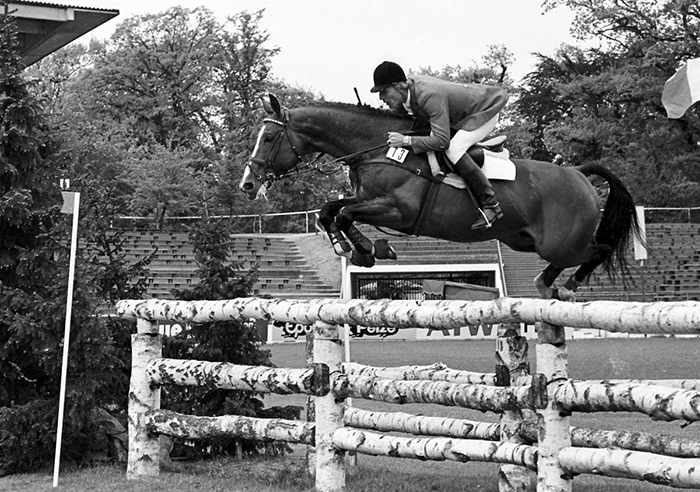
Almé
Still breeders were reluctant to use Ibrahim and it was only when his progeny dominated the jumping finals at Fontainebleau in 1970 that he achieved real recognition. At this show, his youngsters won in-hand classes, while his four year olds – Alcazar D, Aurore C, Azimut, Arteban and Almé – dominated the jumping finals. His son, Val de Loire B won the five-year-old class. Val de Loire was then sold to Spain, before being purchased by Melanie Smith and became one of the first successful Warmblood jumpers in the USA.
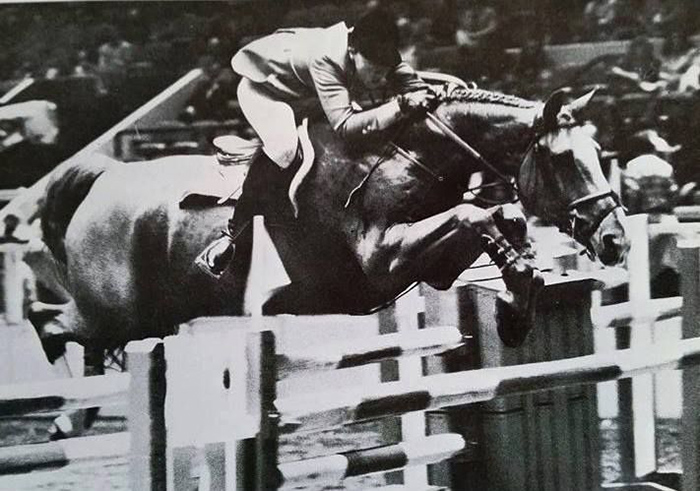
Val de Loire and Melanie Smith
Even today the influence of Ibrahim is strong. At the finals of the 2003 Cycle Classique in Fontainebleau, in the 4-Year-Old final, 219 youngsters started, with 112 double clears. Seven stallions sired more than one horse that went double clear: Urbain du Monnai (Narcos II x Monceaux xx) – 6 double clears; Apache d’Adriers (Double Espoir x Felix xx) – 5, Cacao Courcelle (Jalisco B x Mersebourg) – 3, Drakkar des Huittins (Narcos II x Feu Sacré) – 3, French Cancan (Quidam de Revel x Uriel) – 3, Papillon Rouge (Jalisco B x Centaure du Bois) – 3, Rox de la Touche (Lord Gordon x Fantaisiste) – 3 – and all eight of those top stallions descend from Ibrahim!
The influence of Ibrahim was felt again when the WEG returned to his birthplace in Normandy in 2014. The stallion line of Ibrahim provided an astonishing 36 entries in the showjumping, through Almé and Double Espoir. Most descended through Almé with the most influential representative his grandson, Baloubet de Rouet with five. Diamant de Sémilly from the Grand Veneur line, was represented by four.
Back to our mare, Gemini… The story of Gemini begins several generations back when the legendary breeder, Alfred Brohier bought Vergonne, Gemini’s grand-dam, after noticing one of her first offspring – Foudre de Guerre, then ridden by the rider and breeder Philippe Henry.
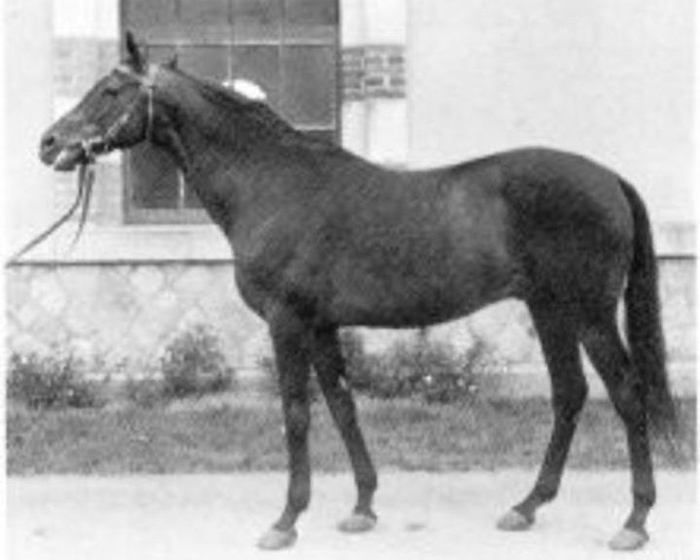
Foudroyant II
Foudroyant II xx, the sire of Foudre de Guerre, was a serious rival to Furioso xx, with whom he shared the lead in the sires of winning horses list, but he was not as prolific as Furioso xx. But he was still very much appreciated by the young breeders and riders of Normandy, as he was known for producing amazing jumpers.
Vergonne was bred to Foudroyant II xx on a number of occasions, with great success. Her second foal, Garcon Manque was champion four year old, before being exported to Spain, then coming back to Alfred Brohier as a brood mare.
Garcon Manque produced Quenotte B, dam of Altesse, herself a dam of many sires, several good competitors, and the national stud sire, Foudre De Guerre. Garcon Manque also produced three good competitors, Rush, Ulmaire, and Krishna who took Jean Brohier into the French team.
One of Vergonne’s first foals by Foudroyant II xx, was the filly, Il Pleut Bergère the mother of Gemini. She had 12 foals, six of them by Plein d’Espoir, including Ritournelle C, a French 4 year old champion, and Ulrason B, an international winner with Marcel Rozier. Bred to the Ibrahim son, Tanaël, who proved to be such a good sire of dams, Pleut Bergère produced Gemini.
Gemini was just under half Thoroughbred 49.66% and from the famous Selle Français family FR-39
But there are more twists to this story since the Brohier family also bred the stallion who was the great nick with Gemini. And for that we have to go back to another legend, horse dealer, Alfred Lefèvre who sold Jean Brohier, Ma Pomme, a three year old filly by the Thoroughbred, Furioso out of Harmonie by Barnum. Furioso, who was by the great foundation jumping sire, Precipitation xx, was then the leading sire of jumping horses in France, a title he held from 1954 until his death in 1967. When Brohier bought her, Ma Pomme had a sister, Pomone B, then just a few months old, who was to win the World Showjumping Championship of 1966 with Pierre Jonquères d’Oriola.
Ma Pomme competed successfully with her owner as a four and five year old before commencing a brilliant career as a brood mare when she was covered as a five year old by Plein d’Espoirs (by Orange Peel xx). This mating produced Starlette B, who was the Champion 6 Year old, ridden by Jean Brohier. Bred to the Plein d’Espoirs son, Olifant, she produced Allegro who was Champion 5 year old before going on to an international career. She was then bred for three seasons to the Thoroughbred, Starter (by Rantzau) producing two successful competitors, Beau Fixe and Copella, and the broodmare, Dans Le Vent.
She was then covered by Quastor, who was by Ibrahim and out of La Citadelle, the half sister to the great Almé, to produce Fair Play III.
In her excellent survey of Narcos II’s career (Breeding News, September 1998) Patricia Cagé, describes the stallion:
“Fair Play III, strong and imposing like his sire, also inherited his quite common head, and was full of energy like his dam.”
Ridden by Jean Brohier, and then by son, Denis, Fair Play III was Champion of the 4 year olds, 3rd in the five year olds, and 20th in the six-year-old championship. He died of tetanus at the age of nine but not before he produced a number of exceptional competitors.
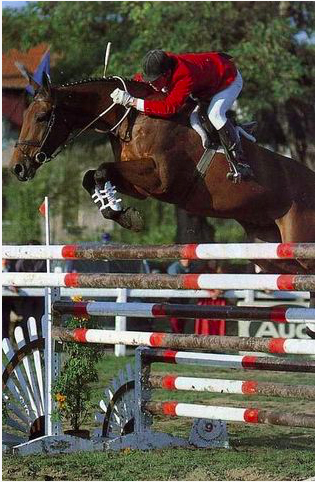
Larry II
Bred to Fair Play III, Gemini’s first foal set her on the road to broodmare fame. He was Larry II, the gelding was an Olympic and World championship competitor with Patrick Caron, and then a CSIO winner with Italy’s Gianni Govomi.
The next year, 1978, the couple produced the Selle Français stallion, Mazarin V, but the following year, they had their most famous foal, Narcos II.
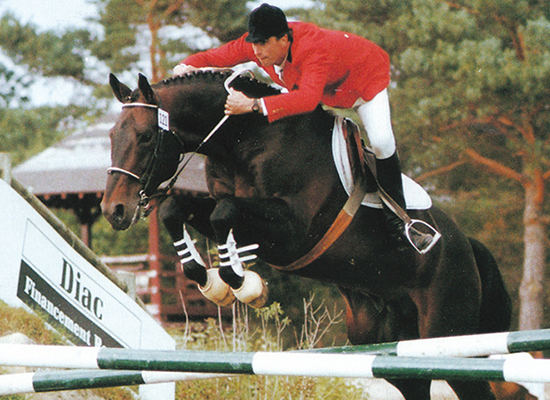
Narcos II
Narcos II had a brilliant career as a young horse reaching the finals for Young Horses at Fontainebleau, three years running. He was 3rd in the four-year-old championships ridden by Denis Brohier, and then with Eric Navet in the saddle, 1st in the five-year-old championships, 1st in the six-year-old championships.
Narcos II made a spectacular start to his international career with Eric Navet at all the major European jumping shows and also in the USA. He was a member of winning Nations Cup teams in Madrid, Luxembourg, Lucerne, Rome, Hickstead, St Gallen, Aachen, Calgary and La Baule.
His career was interrupted in 1987 by laminitis. It was two years before he could compete again at national level. Ridden by Florian Angot in 1994, he won the European Junior Championship.
In all he had 178 victories, 567 placings, and total winnings of 2,420,646 francs before going on to be a very important sire.
After the death of Fair Play III, Gemini was bred to Kayack and produced Quat’Sous, a top competitor with Edouard Couperie, and then an excellent sire.
Gemini went on to produce four more foals, but none to rival the produce of her magic nick with Fair Play III. She produced her last foal, the Selle Français stallion, Vercors IV (Uriël) in 1987.
Sophie du Château
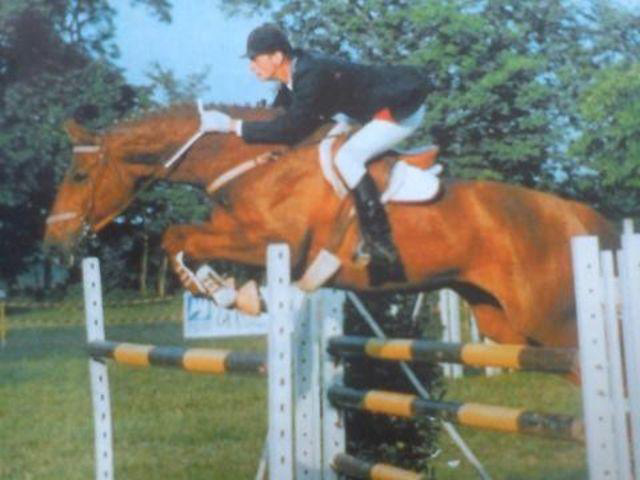
Sophie du Château ( by Galoubet A) dam of Itot du Château, Sultan, Kolea, Letoile, Oui M’Sieu, all at 1.60 and 5 more at 1.50.
Sophie du Château is by one of the most important sons of Almé, Galoubet out of Javotte by Cor de Chasse, like Almé, a son of Ibrahim. Javotte’s dam, Ballerine is by the great Thoroughbred, Rantzau.
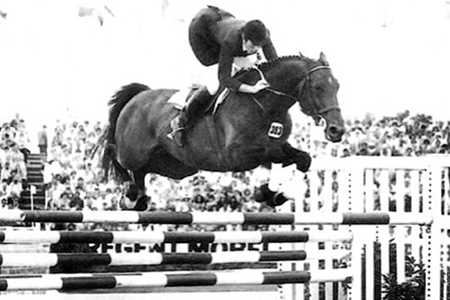
Galoubet
Galoubet is shaping as the most important stallion in the line from Ibrahim through Almé and is probably the most influential jumping sire in the second decade of the 21st Century.
Although Baloubet de Rouet is his most illustrious son, Galoubet has a string of top horses to his credit.
In the USA, there were three stars, all progeny of Thoroughbred mares: The Developer (with Hap Hansen), U’Grand Jete (ridden by Donald Cheska) and Galouway (with Debbie Stephens).
Then there is Quatoubet du Rouet who was second at Aachen with Roger-Yves Bost, beaten by the mighty combination of Thomas Frühmann and Grandeur. There is also Quatoubet’s full brother, Caloubet du Rouet ridden by Jean-Marc Nicolas and Robert Smith.
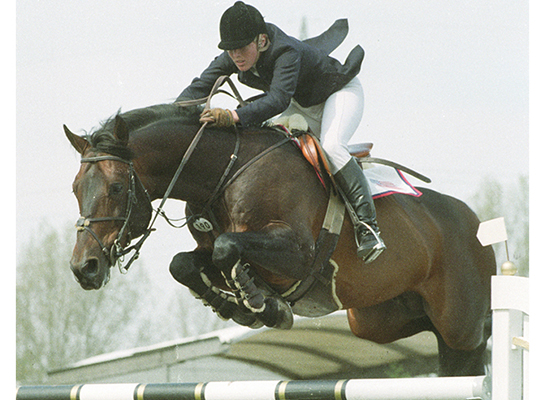
Quick Star
Galoubet’s son Quick Star was a real star with Meredith Michaels (now Michaels-Beerbaum), and then the sire of another superstar, Stella – also ridden by Meredith and more recently has produced super horses like Big Star. In Switzerland, there was Quivient de Boisy and Hildon Sorain, and in Ireland, Touchdown – who was a good performer but who achieved lasting fame as the sire of World Champion Liscalgot.
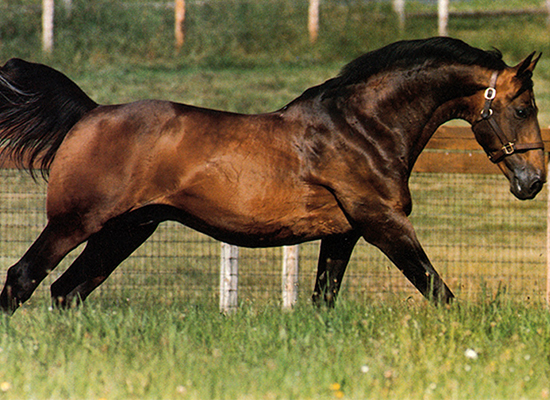
Galoubet
Yet, like so many of the great stallions, Galoubet almost didn’t make it. He was unfashionably bred, being out of a Trotter mare, Viti. Apparently Viti was not fast enough to race and she was sold to Mrs Collette Lefraut who decided to take her showjumping. The chestnut was tall enough at 170 cms and despite her heritage, she had a good canter and wonderful form over a jump, but her rather inelegant head was proof of her parentage.
Her sire was Nystag, an honest trotter, but no super-star; he was later to stand at the St-Lô Stud. Nystag was by Abner, who was also the sire of Jamin, who was a star and twice the World Champion.
Perhaps more interestingly, Viti’s dam, Ida de Bourgoin was by Boum III by Obok, and Obok was the dam sire of individual showjumping gold medallist at the 1964 Games, Lutteur B. Other exceptional jumpers out of Trotter mares include Halla in Germany and later Jappeloup in France.
Viti was a difficult horse to ride, and retired to the life of a brood mare, producing 13 foals including Galoubet.
Viti visited Almé in his first season at stud, and although the resulting colt foal was good-looking, Galoubet was still obviously out of a Trotter mare, and was rejected as a three-year-old at the stallion selection.
Luckily he was not gelded, but started in the Classic Cycle classes for five-year-olds.
In May 1977 he was competing with Benoit Mauriac in the saddle when he caught the eye of top showjumping rider, Gilles Bertran de Balanda, who had been asked by Jean François Pellegrin to find him a top class young stallion. De Balanda decided to seek a second opinion, and asked Nelson Pessoa what he thought of the young Galoubet – and the great Brazilian rider advised him not to buy! Still Pellegrin bought the horse, and de Balanda took over his training, and a few months later the pair won the five-year-old final at Fontainebleau.
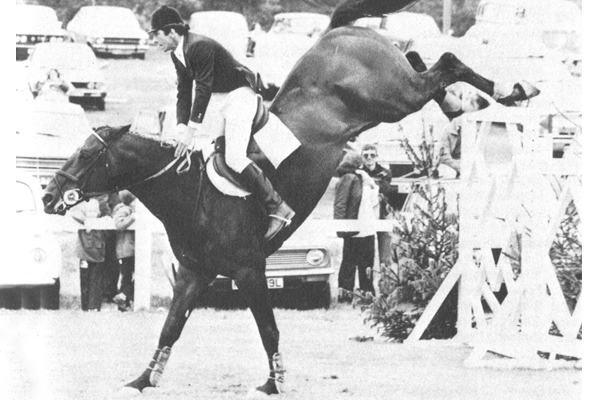
As a seven-year-old Galoubet started to compete internationally where his spectacular jump (and notorious bucks after the jump) won him a legion of fans. Galoubet won the Grand Prix at Wiesbaden, and placed 15th at the European Championships. The pair also took out the French national title that year.
In 1980, Galoubet continued to win in the Nations Cups – in Aachen, Chaudefontaine, Longchamp and Toronto (second in New York). He was eighth at the World Cup final in Baltimore, and eighth at the Alternative Olympic Games in Rotterdam. The following season Galoubet won three World Cup qualifiers in a row at Antwerp, s’Hertogenbosch and Dortmund, only to lose the final in Birmingham where it seems his reputation for not being so good with triple bars preceded him. He duly lost the final at a triple! In truth the stallion’s performance had also suffered when he commenced stud duties in the lead up to the Final, but breeding was more important to the owner than competition success.
Following a brilliant performance at the World Championships in Dublin in 1982 – where he was part of the gold medal winning team and just missed the four horse jump-off – Galoubet’s owner, Jean-François Pellegrin retired the stallion to stud at the age of ten.
Galoubet was one of the first horses in France – and the world – to make use of the new technique of AI. The French National Stud did a deal with Pellegrin at the end of 1980, when AI became legal, and he was allowed a total of 160 mares – 100 in France, 60 abroad, at a fee of 5,000 French Francs. In those days the top fee for a stallion at the national stud was 400 Francs and the critics had a field day – both the price and the use of the AI technology doomed the venture to failure.
As a result of that first season, 60 foals (out of 120 mares) were born – the ‘Q’ generation, since they were all given names beginning with that letter. In 1982 he bred no mares, concentrating on competition, and in 1983, after retiring, covered 110 mares for 48 ‘S’ foals. Many of the top breeders shunned the horse and the new method of insemination, but the results were extraordinary. Twelve of the Q’s became licensed stallions, and nearly all of them jumped internationally.
Still there were doubters, the famed breeder Fernand Leredde, founder of the Haras des Rouges, told Xavier Libbrecht in an interview in Breeding News (February 1997): “I have presented a dozen mares to Galoubet yet nothing has become famous. Too many blemishes, flabby behind, remoulded tyres, a trotter’s quarters. Against that, I believe that Galoubet will make a good father of the mother; better than I Love You who made, however, some beautiful first generation horses.”
For whatever reason, the French breeders were reluctant to pay the high service fee, and 1983 was a disappointing year for Pellegrin with only 65 mares in Galoubet’s book. Meg Douglas-Hamilton of Hamilton Farm in the United States, was a Galoubet fan, and asked Jack Le Goff to make an offer for the horse. Pellegrin thought the offer too low, but eventually agreed to sell a 40% share in the stallion, and Galoubet moved to the USA. The rest of the shares were spread among breeders in France.
Hamilton Farm was a specialist in the field of chilled semen, and arranged to fly semen to France. The semen was collected in the evening, and arrived the following morning in France. Out of 20 mares bred this way, ten successfully produced foals. There is a wonderful story of the Dutch breeder, Wiepke van der Lageweg, who wished to breed two of his mares to Galoubet, and so drove them from the north of Holland to the Paris airport and inseminated them on the spot with semen just off the transatlantic airliner!
At the age of 33 Galoubet was put down in America, at the stud of Meg Douglas-Hamilton, who cared him in the last 20 years of his life.
Back to our broodmare, Sophie du Chateau – I have discovered a photo of Sophie jumping, since she was born in 1984 and had her first foal in 1995, I guess she had a respectable competition career.
Her first foal was the mare, Hermine du Chateau (Bacus de Nonvolieu) whose first foal was the stallion, Quito du Vilpion (Diamant de Sémilly) who competed 1.50. Hermine produced three more jumpers at 1.15, 1.30 and 1.45.
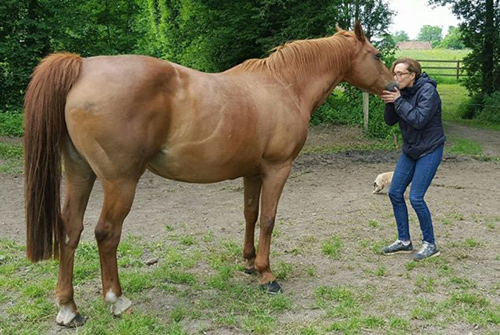
Image du Chateau
In 1996, she foaled Image du Chateau (Rivage du Poncel) who is the full-sister to Itot du Chateau, and who has produced three jumpers, the most successful of which is Vital Chance de la Roque (Diamant de Sémilly) who competes 1.65 with France’s Marc Dilasser.
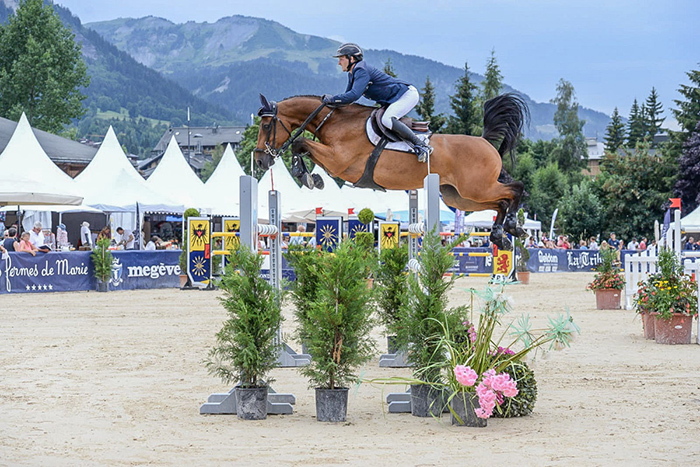
Vital Chance de la Roque
But Sophie had two foals in 1996, the other was her super-star, the gelding, Itot du Chateau, ten wins and 26 placings at 1.60 level with Edwina Tops-Alexander.
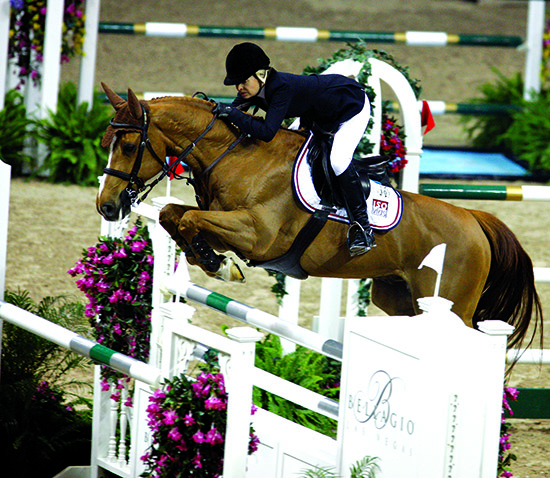
Itot du Chateau
Two years later Sophie foaled Kolea du Chateau (Allagreto) who jumped 1.45 and, bred to Mylord Carthago, produced the 1.60 competitor, Alea de la Marque. Kolea also produced two stallion sons, Clarck de Courcel (Diamant de Sémilly) and Easy Top de Courcel (Type Top du Monteil). Sophie had four foals in 1998, another mare, this time by Le Tot de Sémilly, Kaelle du Term produced two 1.45 competitors, Reggae de la Roque (Kannan) and Spoopy de la Roque (Capital). The fourth foal, another mare, Katouche du Chateau (Rox de la Touche) foaled the 1.45 jumper, Obade des Lys de Laubry (Nabab de Rêve).
In 1999, Sophie bred to Calvados, foaled Letoile du Chateau, who competed 1.50m and is the dam of a 1.30 competitor, Bomas Kervec (Kalaska de Sémilly). 2001 sees the arrival of the stallion, Nikidam du Chateau, 1.45 jumper by Quidam de Revel.
Bred again to Quidam in 2002, she foaled Qui M’sieu du Chateau, a 1.60 jumper with Toni Hassmann. The next year it was back to Quidam to produce another gelding, Petrus de Chateau, who jumped 1.45.
In 2004, with Robin II Z, Sophie foals Quokine du Chateau who is the dam of Une Deux du Chateau (Mr Blue), 1.25; Uno du Chateau, 1.40 also Mr Blue, then two stallions, GFE Amant du Chateau (Diamant de Sémilly) a 1.60 jumper with Italy’s Guiseppe Rolli, and Eros du Chateau (Kannan) who jumped 1.40, and the same year with Allegreto, Sophie produced Qualine du Chateau who placed at 1.45 and was the dam of Vendome d’Anchat, a 1.60 competitor with Kevin Staut.
In 2005, it was Rimbo du Chateau (Kannan) who jumped 1.50 with Giovanni Martelli. Kannan was certainly the flavour of the month and Sophie had two more of his offspring in 2006. Signora, who jumped 1.45 and was later the dam of Vitot du Chateau, a 1.60 competitor with Olivier Guillon and Best of Iscla (Diamant de Sémilly) a stallion who jumped 1.50. The other was Sultan du Chateau, a good 1.60 competitor with Laurent Guillet.
Bred to Diamant de Sémilly in 2007, Sophie produced Toscane de Champloue who jumped 1.40m and produced three jumpers, the most successful being Carlotta de Champloue (Emillion) who competed 1.45. Sophie produced another foal that year, Taiga de Champloue, again by Diamant de Sémilly who jumped 1.40 and was the dam of two 1.40 competitors.
In her last year, Sophie produced two foals: Variane du Chateau (Airborne Montecillo) who is the dam of the stallion, Graal Un Prince (Kannan) who competed 1.15, and Casanova du Chateau (Cassini I) who competed 1.30.
All in, between 1995 and 2009, Sophie du Chateau produced 21 offspring. What a mare!
And the line goes go – the winner of the Vancouver World Cup qualifier in September 2021 was Conner Swail riding Vital Chance de la Roque…
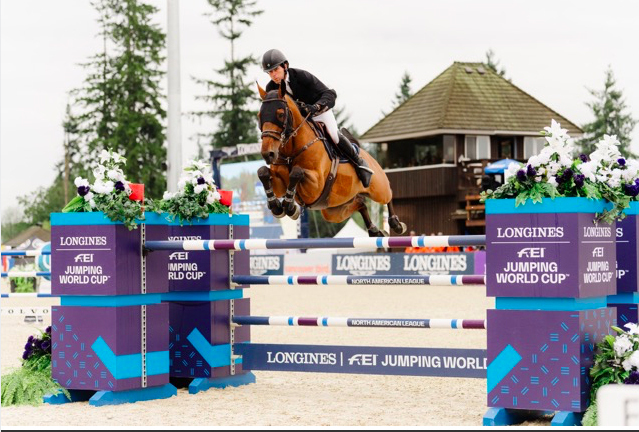
A winner – Vital Chance de la Roque
Opaline des Pins
My work on this mare has been made considerably easier because my colleague, Adriana van Tilburg has recently written an excellent account of Opaline and her life and times for Breeding News (July 2020).
The mare first saw light of day at the farm of her breeder, René Henry in the home of the French horse – Normandy. Her sire was the Anglo Arab, Garitchou (Nikou / Aiglon VII) at a time when Anglos were not very popular in France. Adrien Cugness, the editor of Jour de Galop told Adriana:
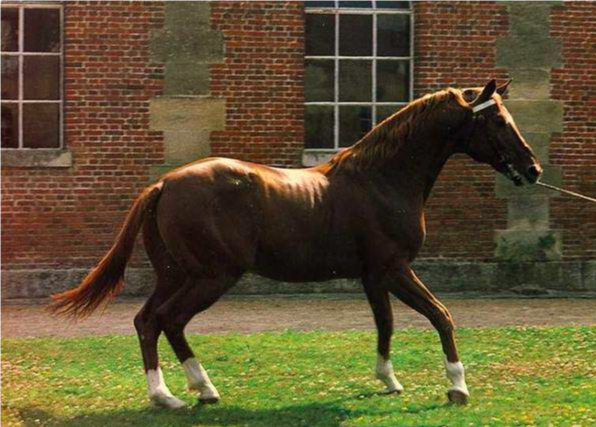
Garitchou
“It is important to know that Garitchou was a strongly built stallion for an Anglo Arab. He was also kind of difficult from both his sire and damline. He comes from a temperamently full pedigree.”
“The stallions were in these days owned by the French National stud and they cared only for the conformation. The stallions did not compete in sport, they were only shown rarely in free jumping. I heard that he was a really good jumper when he was three years old. You have to understand that Anglo Arab stallions were not fashionable to use and his biggest foal crop was only 25 offspring. Much of the time his foal crops were eight or nine offspring. Garitchou’s dam, Maritchou, looked like a Warmbood. These horses were bred in the past for the army and not for racing. The quality of Garitchou’s family is in eventing and showjumping.”
“Garitchou was sent to Normandy to Haras du Pin and his covering fee was not expensive. In those days, if you had a sub-fertile mare or no money you picked an Anglo Arab stallion. At the end of his life breeders finally valued Garitchou’s qualities.”
Ten years ago the French magazine Grand Prix published an article about Opaline des Pins. Her breeder, René Henry, a Normandy farmer whose own father had been a breeder of draft horses and Trotters, outlined Opaline’s history:
“I purchased Jasmina in 1966 from Colette Lefrant-Ducornet. She was one of the best breeders of her day and she sold her foundation mares to Haras de Brullemail of Bernard Le Courtois. The year 1966 was a year of problems for farming and not so many horses were sold. So I bought Jasmina, who was a good-sized mare with good behavior and she had a very good conformation. She became the champion of the three-year-old mares at Haras du Pin. Jasmina had a pedigree with some of the best bloodlines of Selle Français. I wanted to change the blood, which is why I chose an Anglo Arab stallion. Garitchou was standing at Haras du Pin, he was a good looking horse. He was first-class in terms of conformation, he had good gaits. I saw him at the presentation of stallions at the beginning of the year. The other option was to use Uriel, but he was not looking good enough in my opinion to make the combination with Jasmina.”
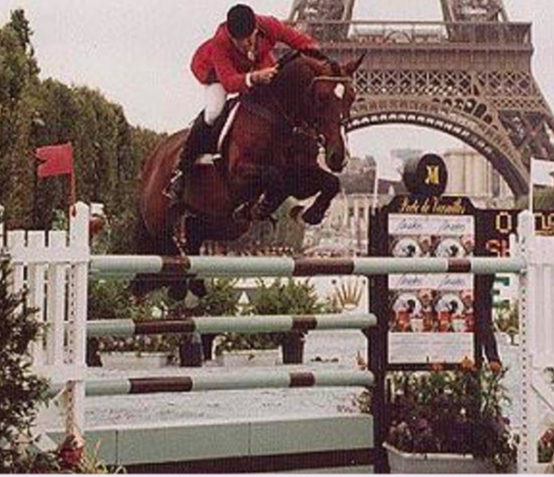
Shogun II
Opaline des Pins was born in 1980 and as a four year old produced her first star, Shogun II by the Thoroughbred, Night and Day.
The following year, she was sold to the Belgian breeder, the late Arnold de Brabandere. Brabandere’s friend and fellow breeder, Marcel van Dijck recalls: “Opaline was a big mare with enormous power. She was too difficult for sport, too hot, as we say. I only saw her sire Garitchou in a photo, also a very sturdy Anglo Arab.”
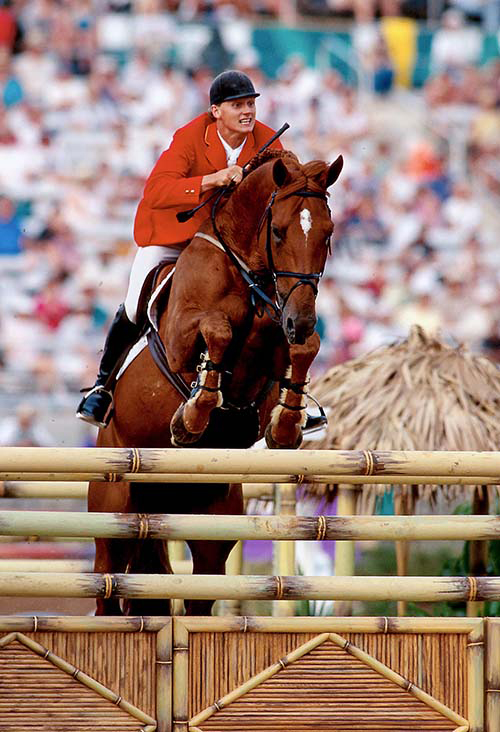
Jus de Pomme
Opaline des Pins produced five approved stallions all of which competed 1.60, with three Olympic competitors:
• Shogoun II (Night and Day xx)
• Jus de Pomme (Primo des Bruyeres)
• Quintus (Pavarotti van de Helle)
• Richebourg (Bayard d’Elle)
• Trésor d’Opaline (Major de la Cour)
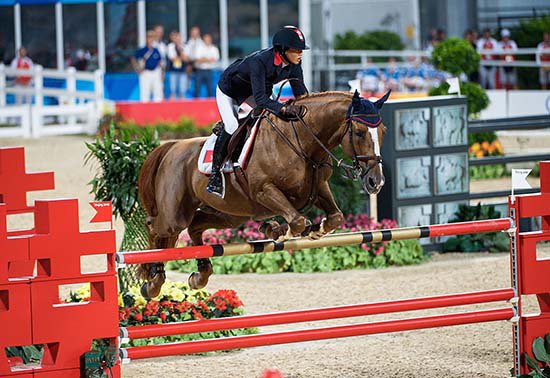
Samantha Lam and Trésor d’Opaline at the Beijing Games
Jus de Pomme and Ulrich Kirchhoff won two gold medals at the Atlanta 1996 Olympic Games while Quintus finished eighth individually with Jean-Claude Vangeenberghe at the 2008 Olympic Games in Hong Kong, another at the Beijing Games was Trésor d’Opaline with Samantha Lam. In 2003 Richebourg was crowned as BWP horse of the year, while 2009 saw Quintus become a BWP Ambassador.
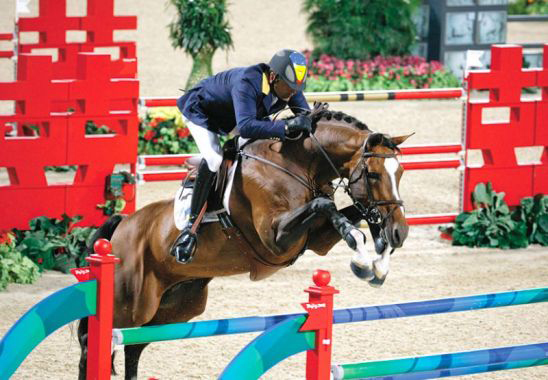
Quintus
Arnaud Evain of Groupe France Elevage previously owned Quintus, but more recently he purchased Petrus de Brandegem another stallion from this damline:
“One of the originalities of Opaline is that she did not ‘stamp’ her offspring with her conformation – her five top stars, Jus de Pomme, Quintus, Trésor, Shogoun, and Richebourg all exhibit the conformation of their sires – but in some of the qualities of her dam line (likely thanks to Garitchou’s Anglo Arab influence) you find blood, extreme carefulness, and goodwill. We bought Quintus at the end of his sport career because we were interested in three of his strong points: blood, elegance, and extremely good front-end technique. He also produced some very good hunters in the USA. We think that this is still a very interesting line and one of our big hopes for tomorrow that we own together with his breeder Peter De Brabander, is Petrus de Brandegem, a five-year-old son by Up To You and Isetta (Guidam) who is a granddaughter of Opaline.”
Fragance du Chalus
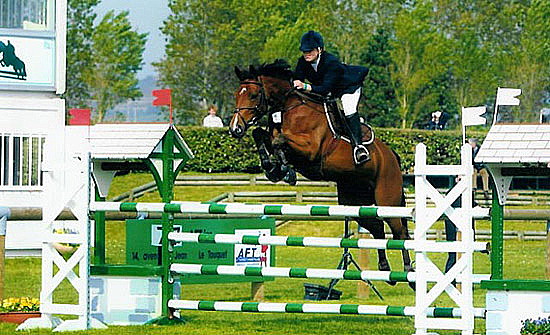
Sadly one of, if not the, greatest mares of all time, Fragance du Chalus died in May 2019 but not before she had revolutionised the breeding business and had played a key rôle in the success of Joris de Brabander’s De Muze stud farm. She produced 46 offspring – aided by the fact that Joris is a vet, and also a keen harness driver, giving him the recipient mares and the expertise to embryo transplant. Fragance’s progeny included Mylord Carthago, Bamako de Muze, Arc en Ciel de Muze, Norton d’Eole, Vodka Orange de Muze, Jolly Mome, Anais Anais de Muze, Nais de la Pomme… and many others.
Fragance was the showjumper that took Joris’ daughter Karline de Brabander into the the international level.
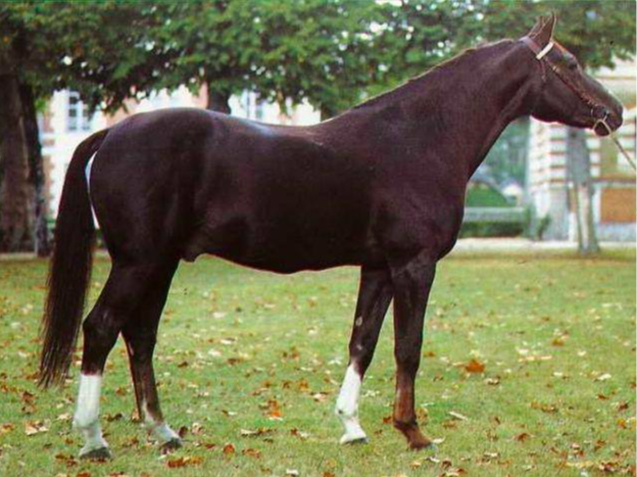
Fury de la Cense
Fragance was by Jalisco, who we have discussed earlier, out of Nifrane by Fury de la Cense (50% ‘blood’) out of Ifrane by the Thoroughbred Chateau du Diable – that adds up to 61.72% blood flowing through Fragance’s veins.
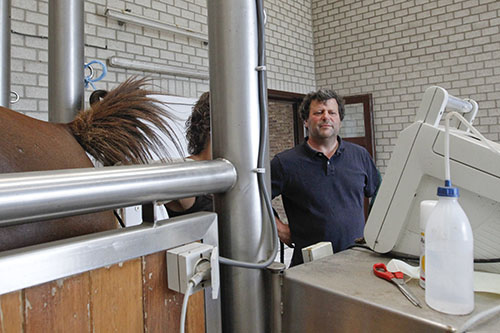
“Breeding is my passion,” Joris told me, “It’s very hard to make a job out of that, but I am a vet. We had stallions, my father had stallions to cover mares but he was not a vet. We were very lucky when we started to embryo transfer, at that moment we could breed with good jumping horses, competition horses.”
How did you find the famous mare, Fragance du Challus?
“I was looking for a very good breeding mare in France and I studied all the bloodlines. Eventually I found this family and saw that her sire, Jalisco was a very good competition horse and at this time one of the best stallions, and her mother was one of the good French competition mares. She was only one-year-old. I first found her on paper then I tried to find the owner and the breeder, then I tried to buy her.”
“We start breeding with them when they are very very young. For instance with Fragance, we started breeding with her when she was two years old. She had very good offspring, she had a nice jump, she was a good mover, so we started her breeding – then her jumping career came afterwards. At the age of four, five, six she was one of the best Belgian competition mares in the young horse competitions.”
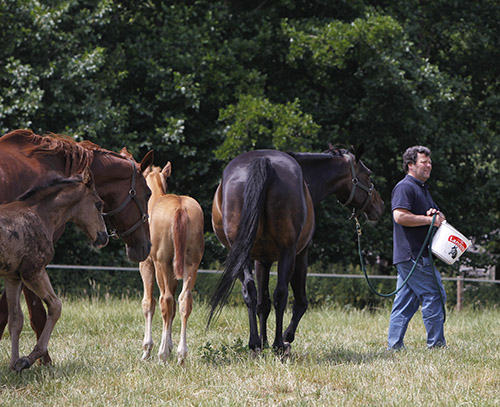
(photo – Dirk Caremans)
You started with pedigree and then found the horse, is that your approach?
“Normally not but at the time we had a few mares at home but I was looking for better. At the moment we bought Fragance, we didn’t have competition horses, so I was looking for better mares than we had at the time in Belgium.”
“Over the years I try to find better and better mares. Now at this moment, I have one very good mare, Butterfly Flip who was in 2003/2004, the best jumping horse in the world. I have a two-year-old out of the clone of Ratina Z, who was one of the best jumping horses we ever had in the world, that’s a level higher than Fragance. She was a very good 1.45m jumper but not more than that.”
You obviously don’t believe the theory that very good competition horses never produce very good offspring…
“That’s not true. The better they are, the better they can jump, the better the foal. It is true that very good jumping horses normally don’t have good chances, they are too old to breed, or they are in the hands of rich people, or they are in countries where they don’t have a breeding culture, and very often when a guy has a very good competition mare, he uses his own stallion which is very often not good enough. If you breed to very very good mares, it is always better than breeding to the others.”
How long have you been breeding?
“I started in 1993.”
And you are still motivated?
“I am still motivated because my children are also interested in sport and breeding, that motivates. I think there is still a lot of progress to make in horses, especially in jumping horses. Most of the horses until now have been produced by amateur breeders who use their own families, their own horses and they try to use the best stallions, but I think if you start with the best competition mares, then there is still a lot of progress to be made.”
This piece is already staggeringly long, if I go through all 47 Fragance’s foals and the progeny of her better daughters, it might go on forever. So just the edited highlights…
Fragance produced five foals in 1997, her initial success came with her broodmare daughters: Jolly Girl de Kervac, by Darco, produced three 1.60 competitors. Another of the 1997 crop, Urline de Muze (Cash) was the dam of the stallion, A Big Boy (Kannan) who jumped 1.60 and the Kannan mare, Cool Girl d’Ick who jumped 1.50. Yet another, the mare, Jolly Mome (Darco) jumped 1.50 in the States.
Fragance’s 1998 Darco daughter Vodka Orange de Muze produced three 1.60 jumpers: Bacardi Rhum de Muze (Kannan), Sandro de la Pomme (Vigo de Arsouilles) and Elouise de Muze (Nabab de Rêve). Another of her four 1998 foals, Valenine de l’Impermeable (Darco) was the dam of Ego van Orti, a 1.65 jumper (26 placings at 1.60) with Edwina Tops-Alexander.
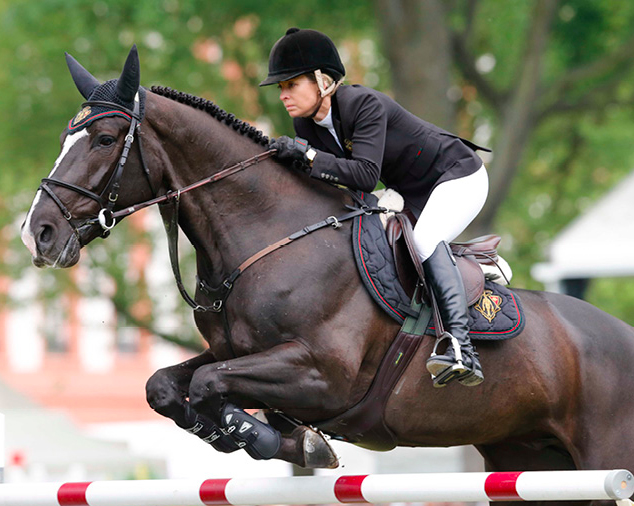
Ego van Orti
In 2000 Fragance produced Quaranca de Muze (Nabab de Rêve) who is the dam of Jaguar vd Berghoeve (Emerald), who competed 1.65 with Taiwan’s Jasmine Chen. Another from that year, Anais Anals de Muze (Rubens du Ri d’Asse) jumped 1.50 herself and is the dam of 1.60 competitor, Evita van’t Zoggehof by Golden Hawk (who is another of Joris’ products, he started life as Figo de Muze). Another mare, Miframe Mancais (Power Light) foaled Theodore Mancais, a 1.65 competitor with American, Spencer Smith.
2000 really was a vintage year, Fragance produced her first stallions of note: the moderately successful Arc en Ciel de Muze (Rubens du Ri d’Asse), 1.60 with Sheik Shakhboot Al Nehyan, and the superstar, Mylord Carthago (Carthago) ridden by Penelope Leprevost to six wins and 16 placings at 1.60 – and now a sire of note, fourth on the WBFSH rankings for 2019.
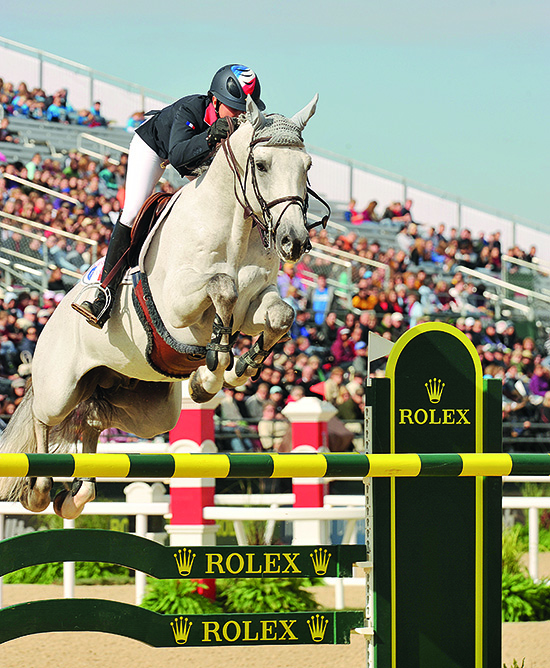
Mylord Carthago
2001 and Fragance produced more good broodmares, but the year was marked by two more important stallions: Bamako de Muze (Darco) and Norton d’Eole (Cento). Bamako jumped 1.60 with Karline de Brabander. Bamako is now standing at Joris’ stud, and his young horses are looking great. In 2019 he entered the WBFSH sires rankings for the first time, ranked in 84th.
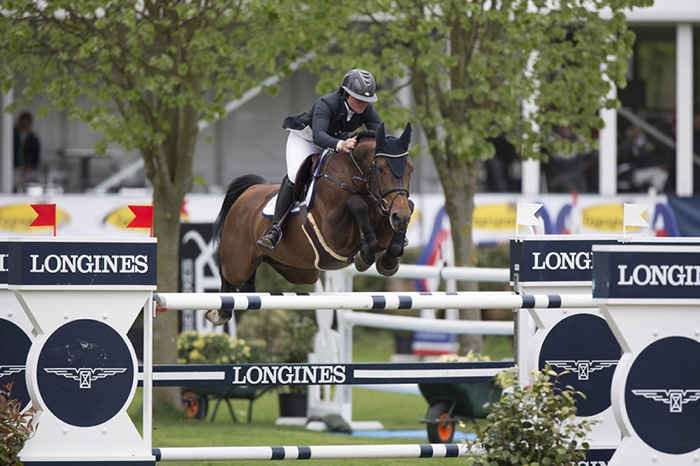
Bamako de Muze
Norten d’Eole was something of a young horse star, and then went on to a respectable jumping career with Eric Dewulf with four places at 1.55 level before he was retired to stud in 2018.
Fragance went on to produce another 24 foals after these two – her last, the BWP stallion, Qoup de Coeur de Muze, by Mosito van het Hellehof, in 2016…! Amazing.
AND THE END…

